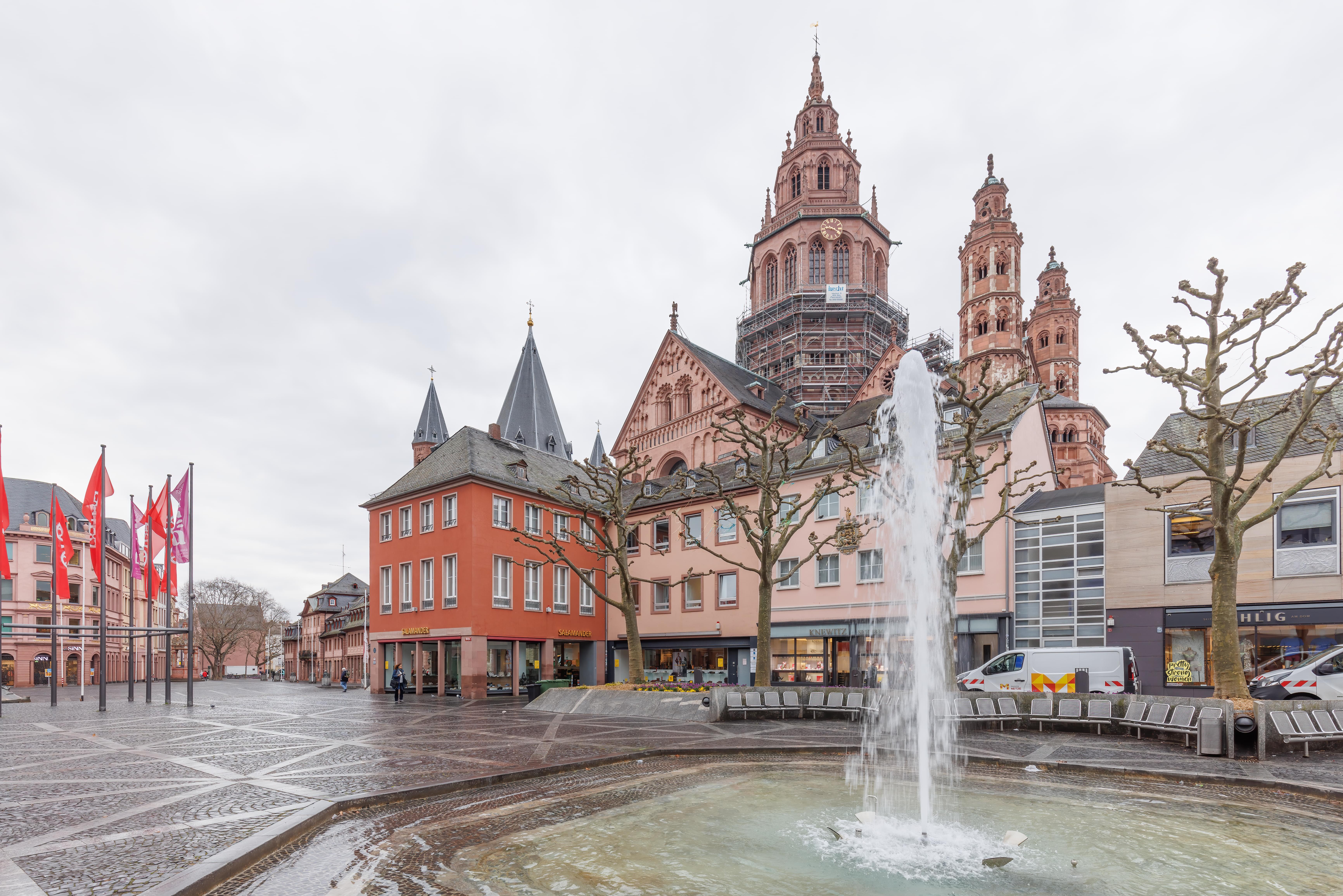We headed out this morning to spend the day in Mainz, where the Main joins the Rhine. We saw a variety of sights including Roman ruins and old churches as well as the Rhine. One thing we did not see was the Gutenberg Museum as it is closed on Mondays!
Our first stop was the Römisches Theater, by the aptly named Römisches Theater train station.
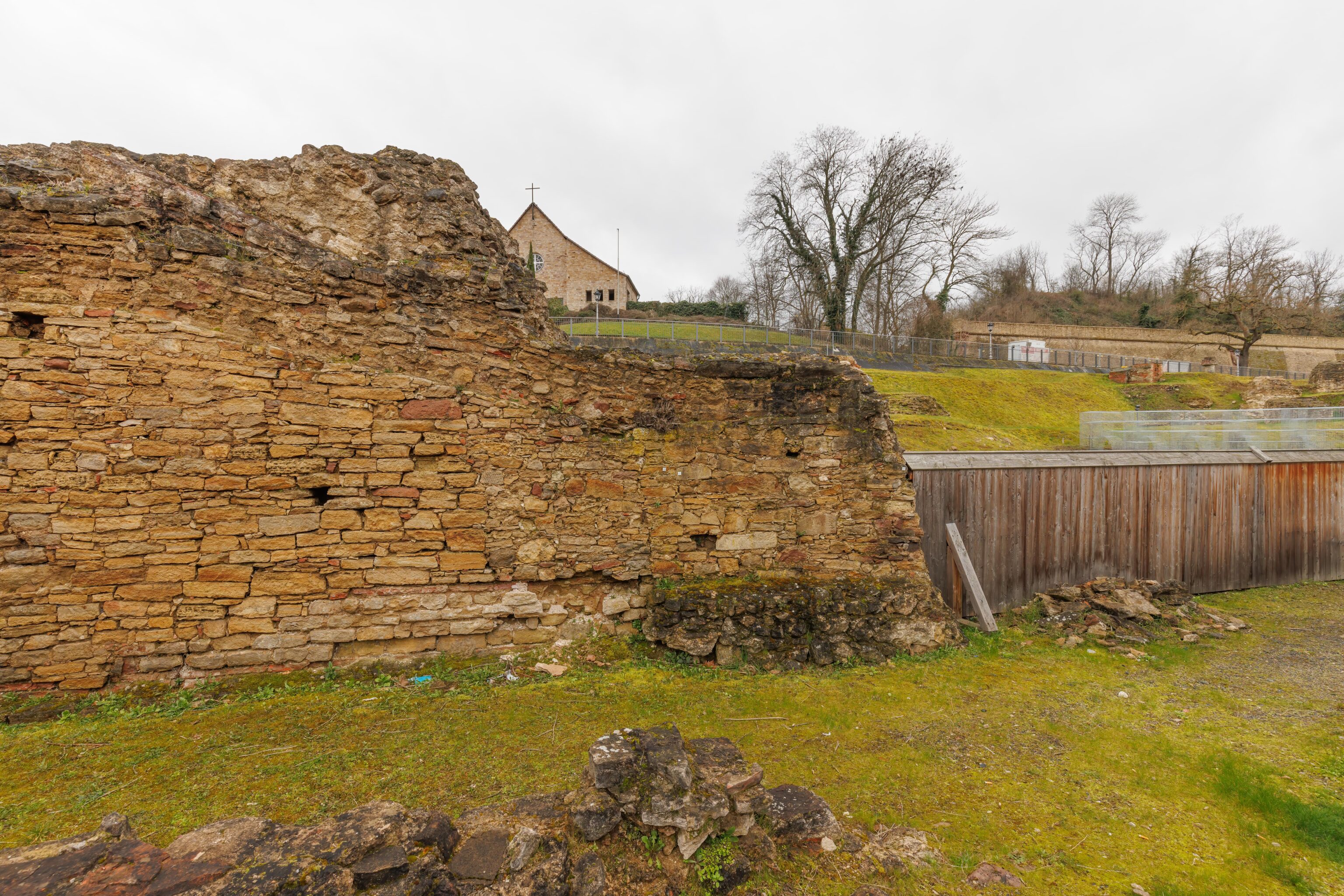
Upon getting off the S-Bahn, we went over to the south platform where we could see the ruins of an ancient Roman theater.
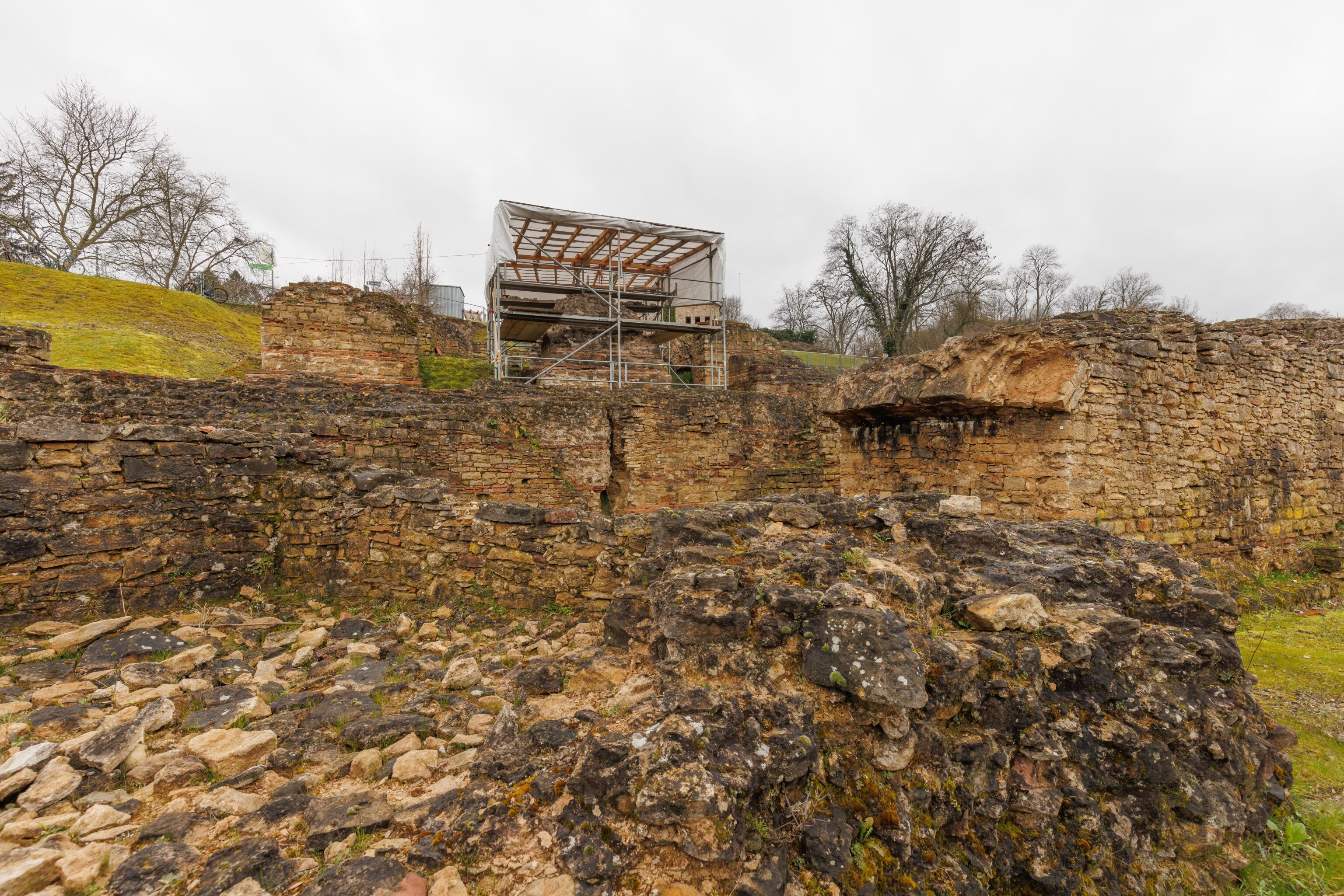
It appears that preservation activities are still taking place. Unfortunately, there is no way to get any closer as there is a fence around the entire site. According to a sign, it seems that it is open for visiting on specific days.
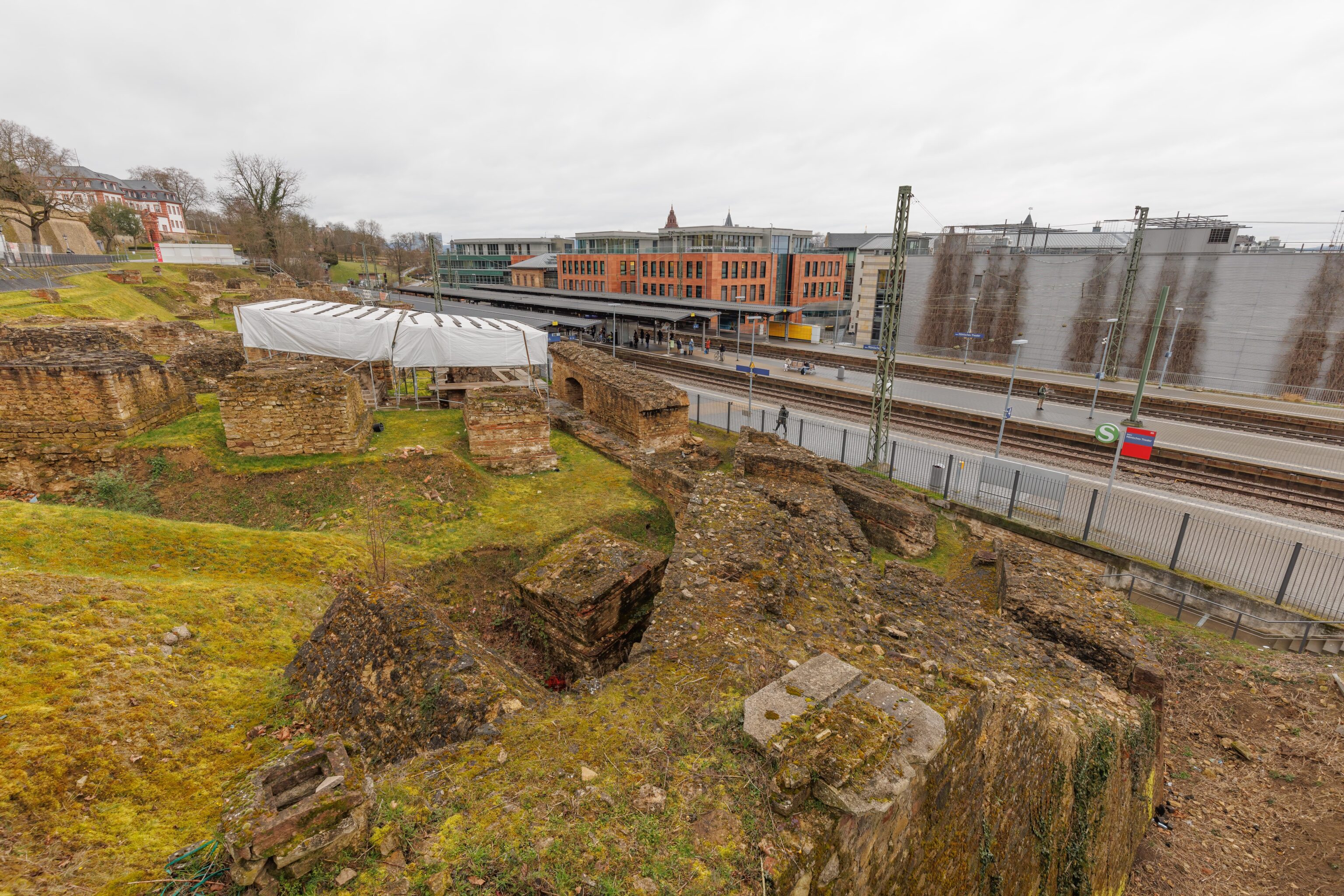
On the southeastern edge of the station, a path leads upwards to a road. There are views of the ruins from both.
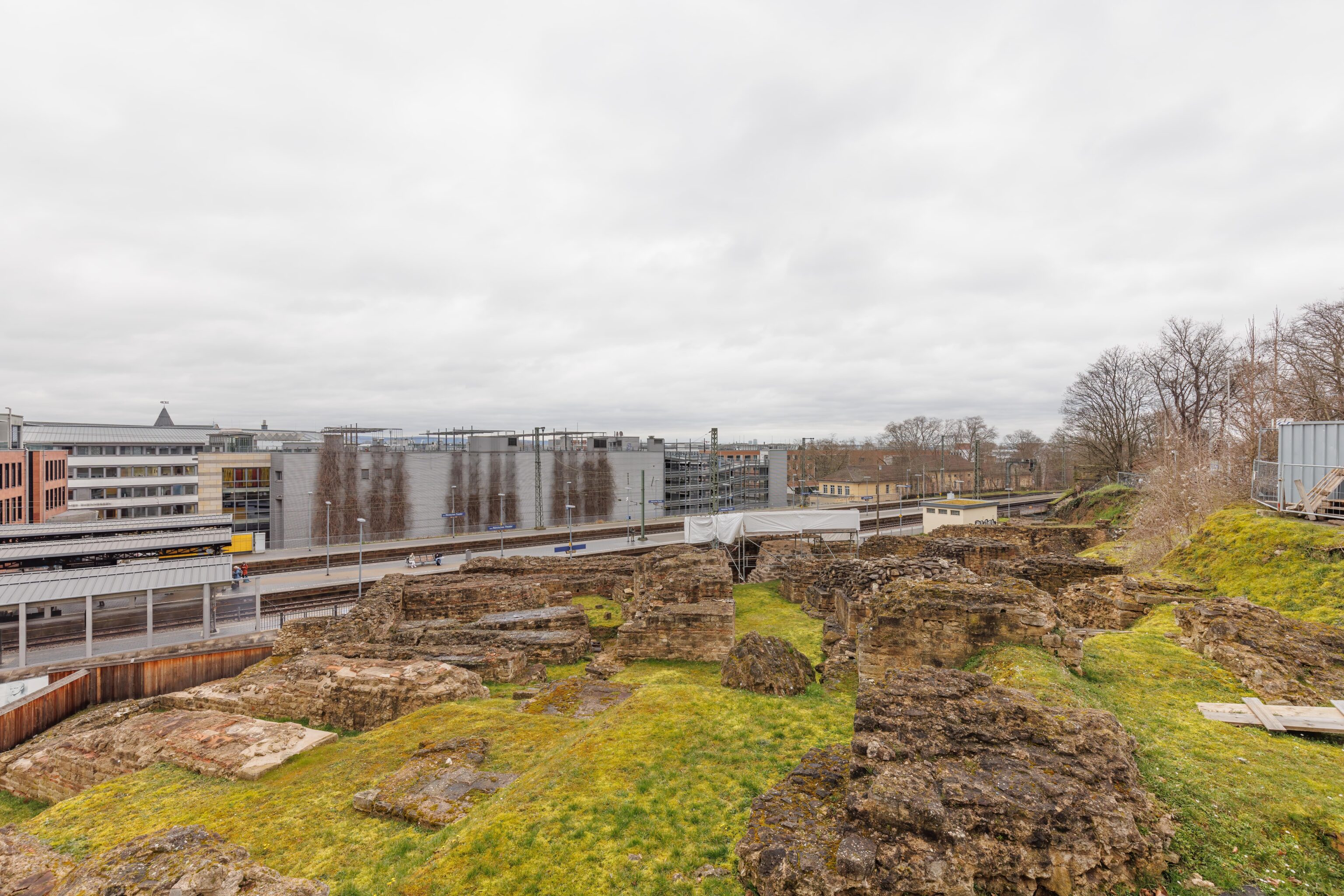
The ruins that remain are the foundation of the theater. The actual structure would have towered above.
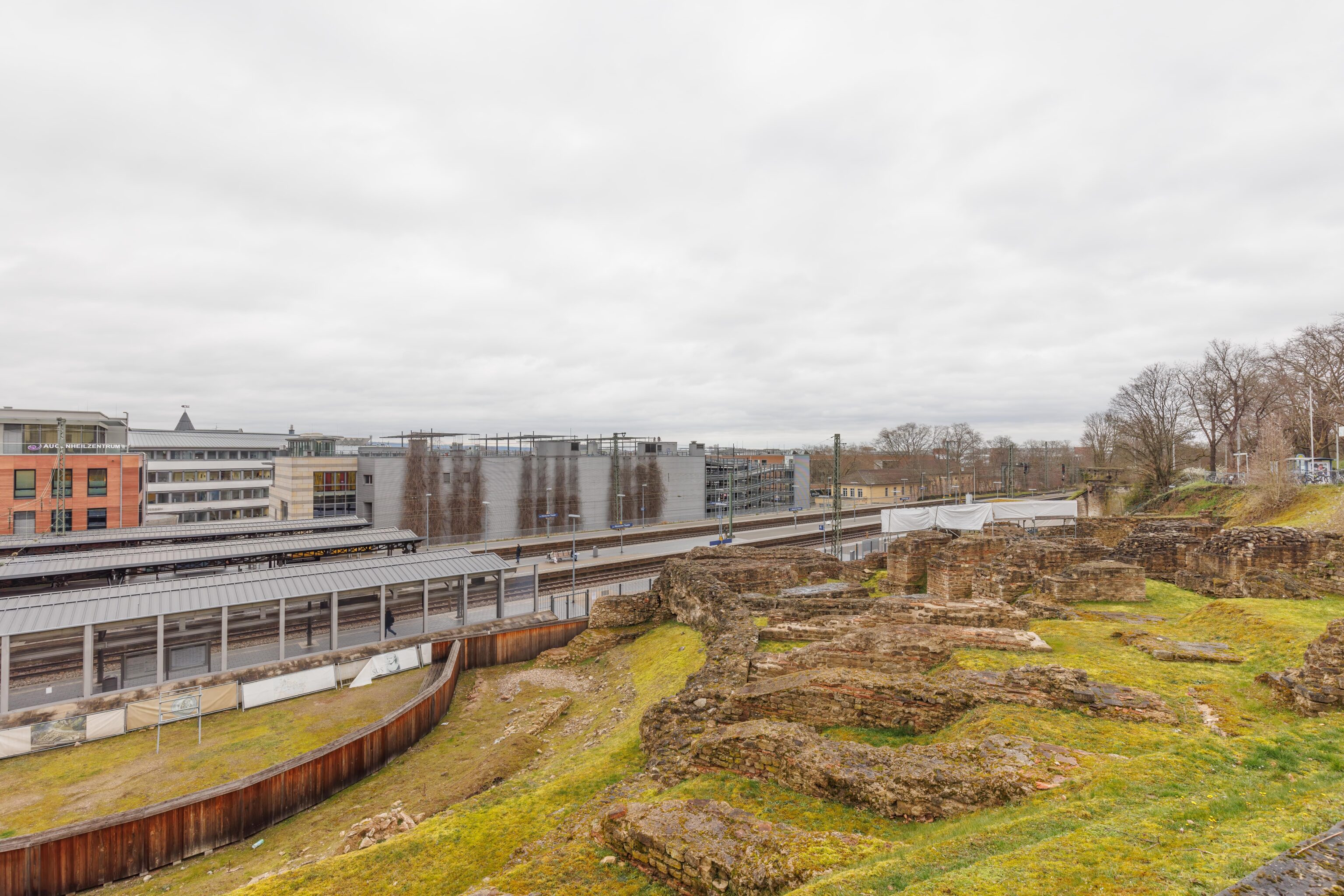
The seating would have been arranged in a crescent with the rear of the stage back by the middle platform of the train station.
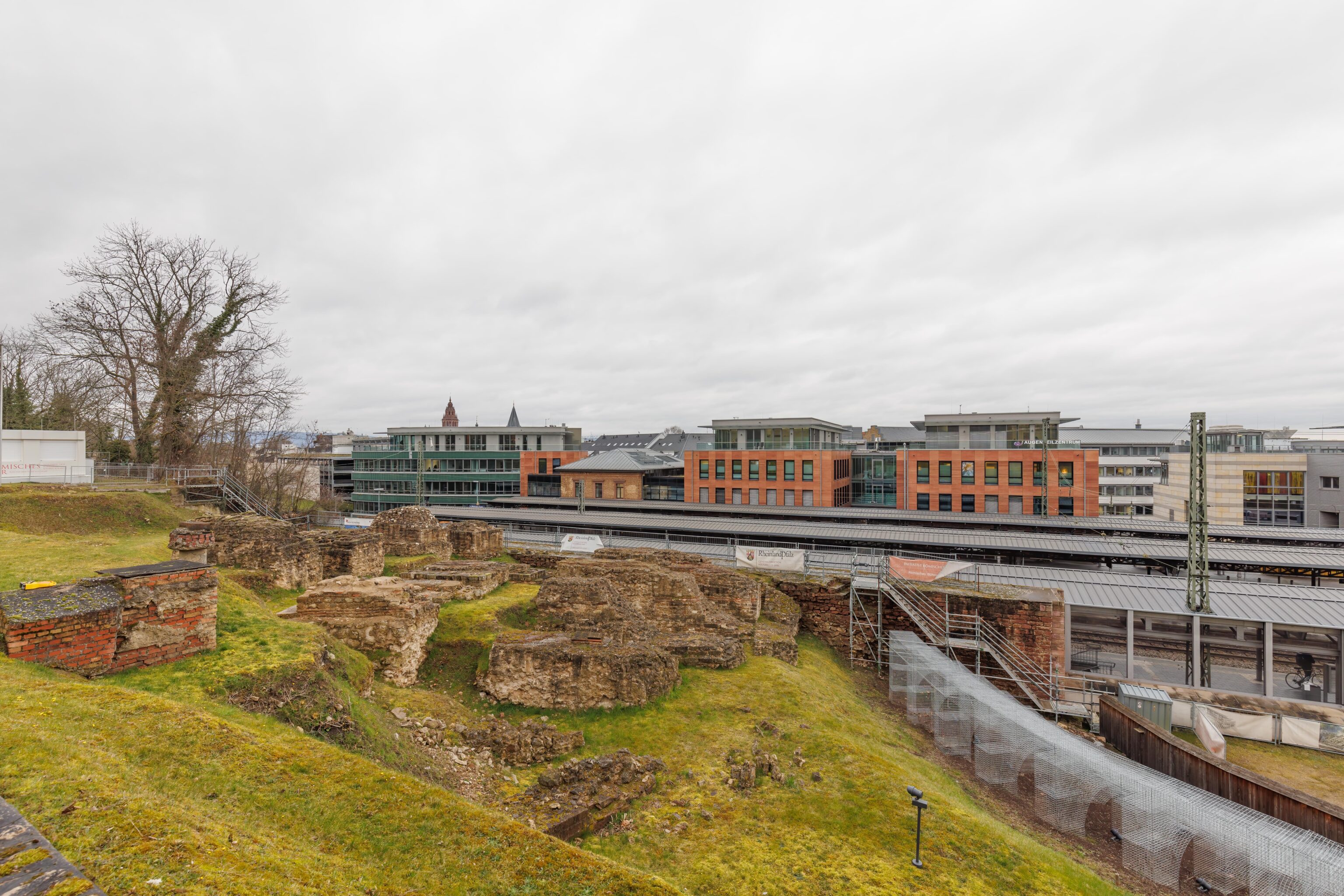
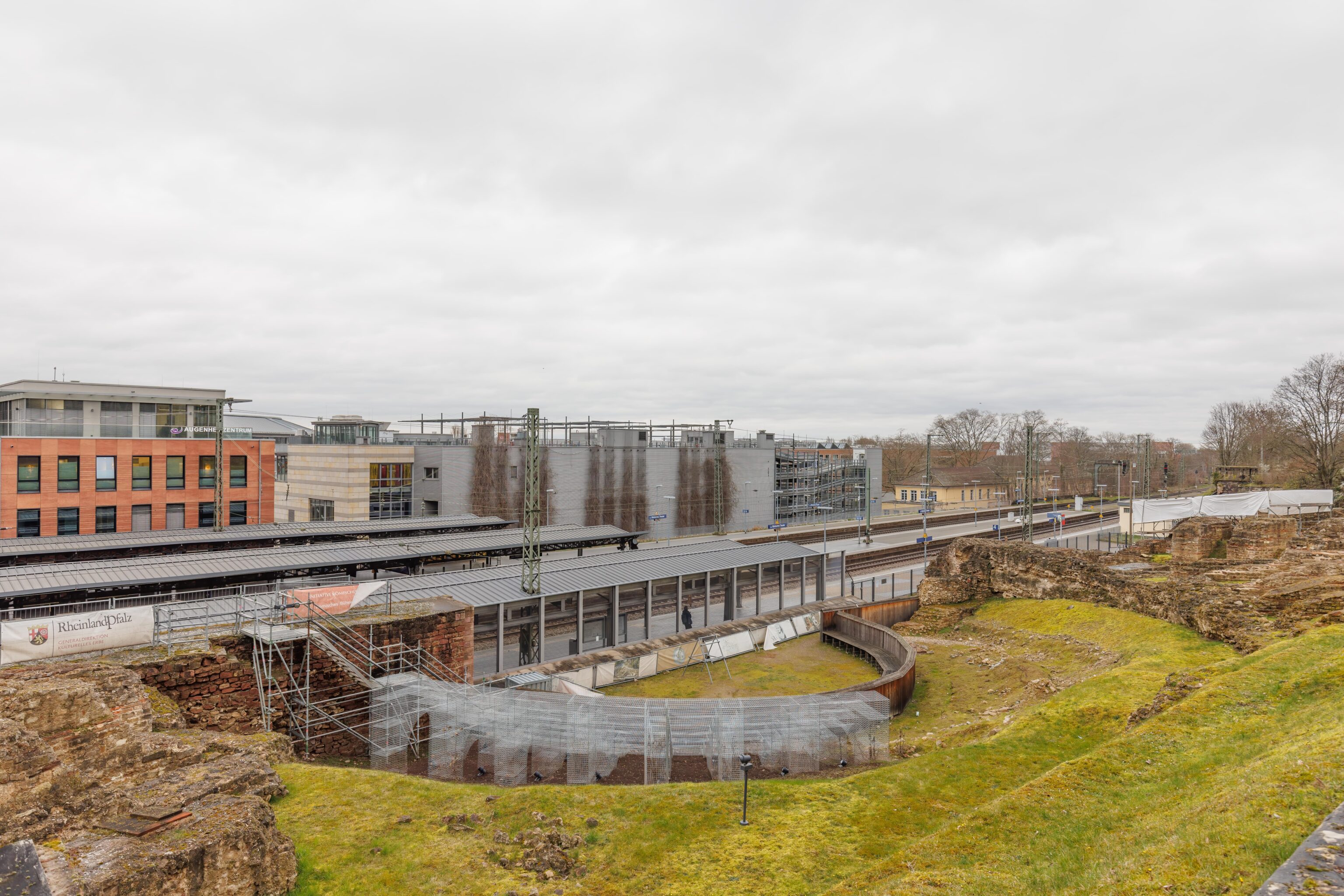
The metal structure on the right suggests where a few of the lower rows of seats would have been.
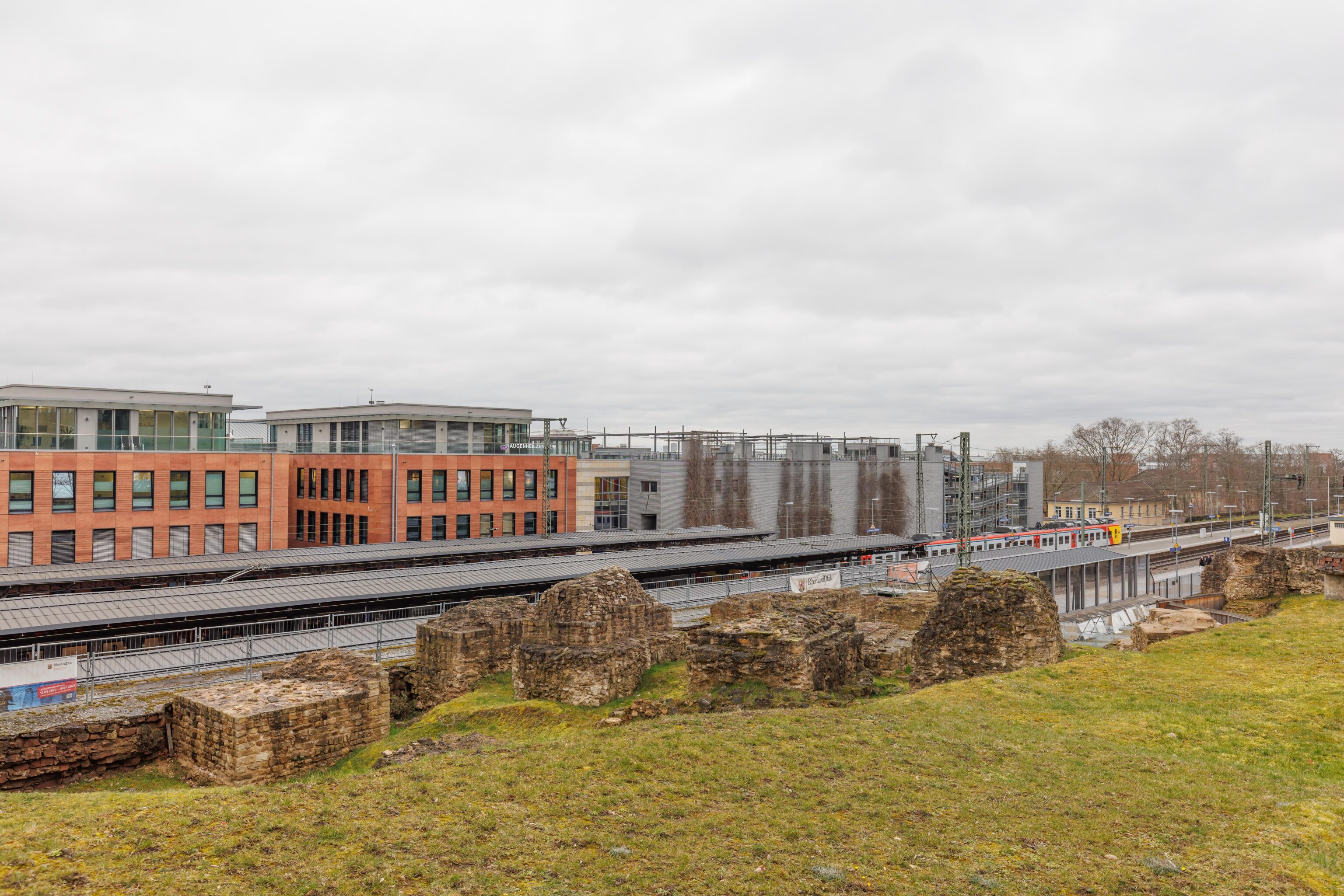
Unfortunately, we failed to photograph the modern day church that is behind the theater. The archeologists have figured out that the seats went as high as the church’s spire. It is believed that the theater would have seated around 10,000 and was the biggest north of the Alps.
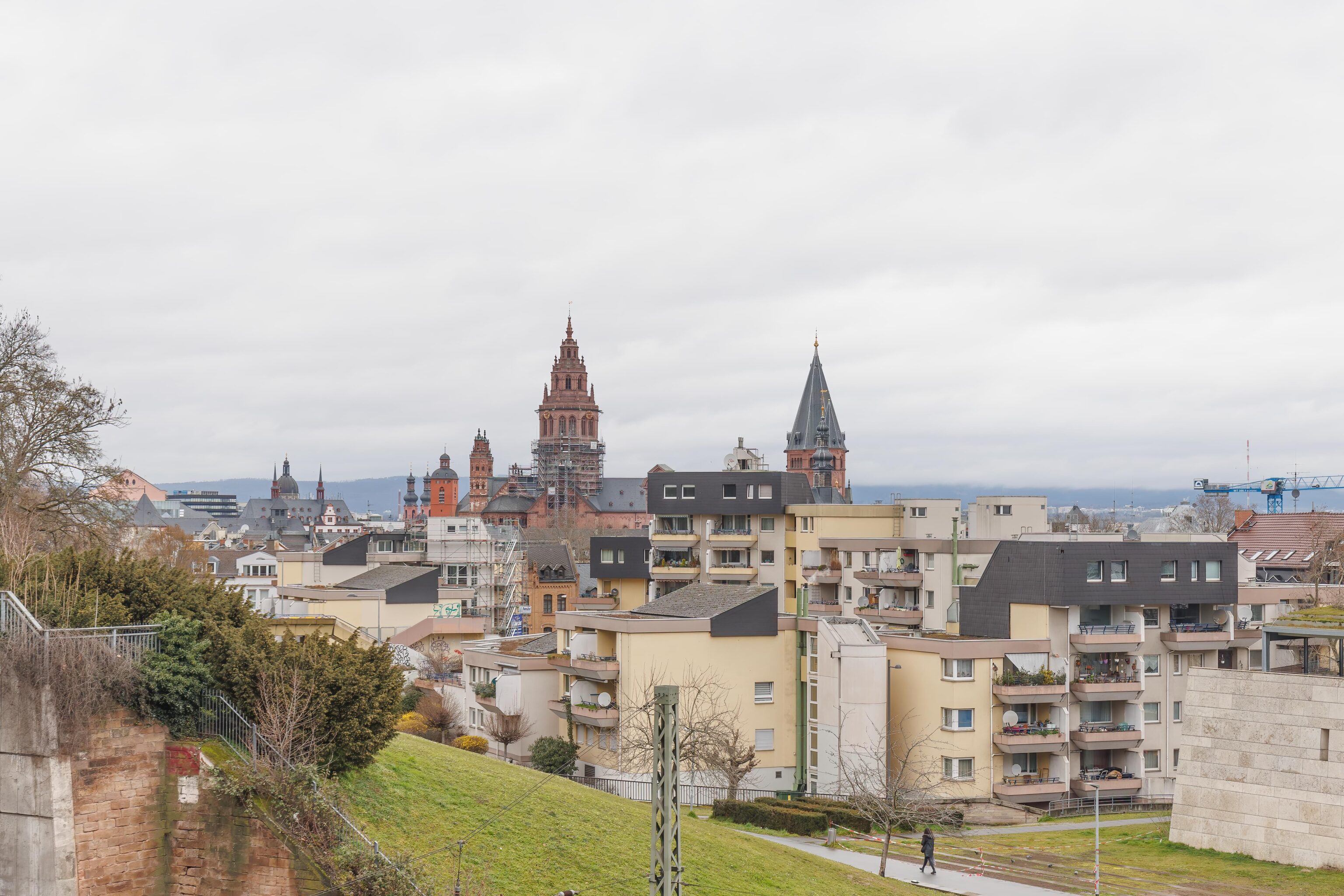
From the western edge of the theater, we saw the spires of the modern Mainz Cathedral in the distance.
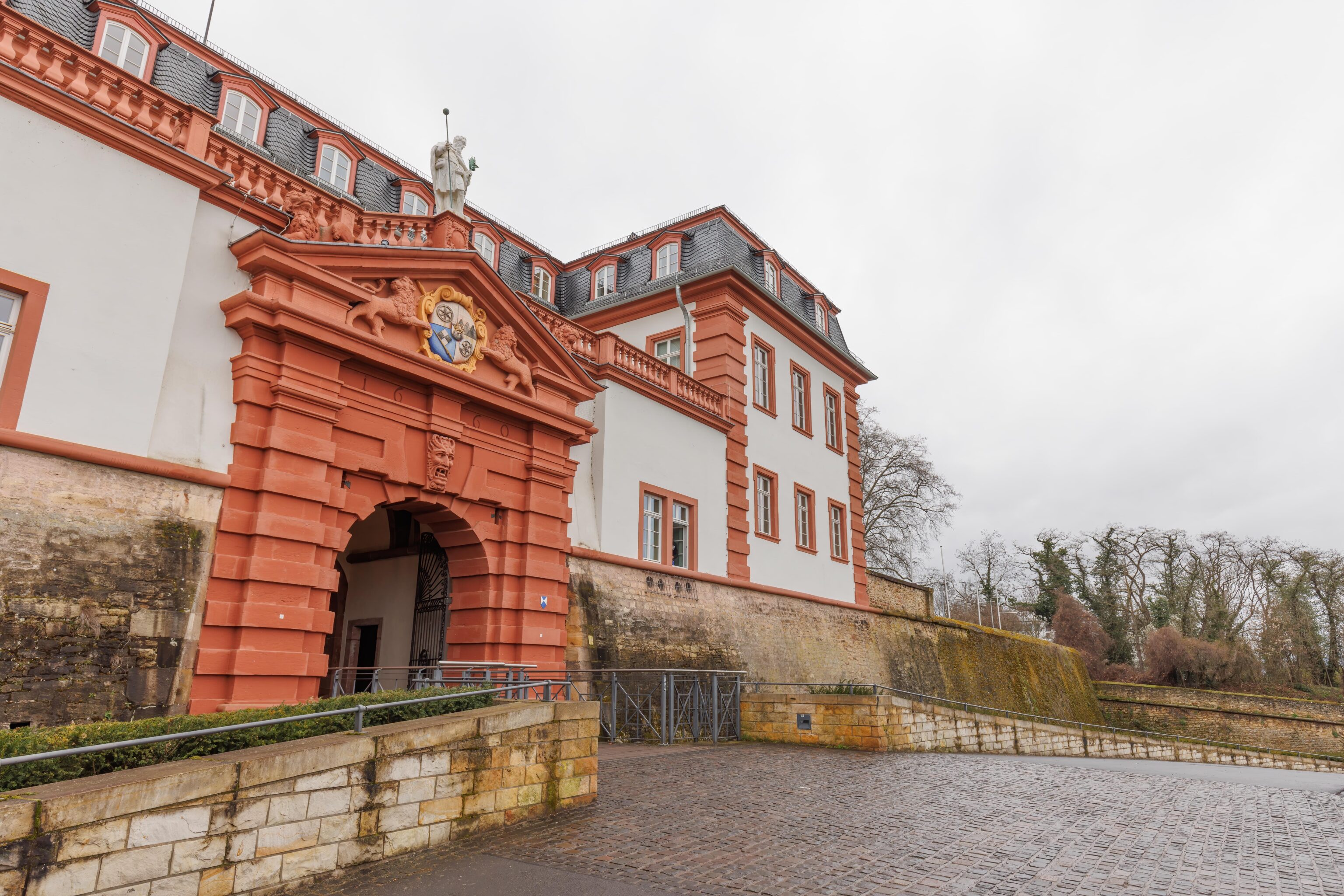
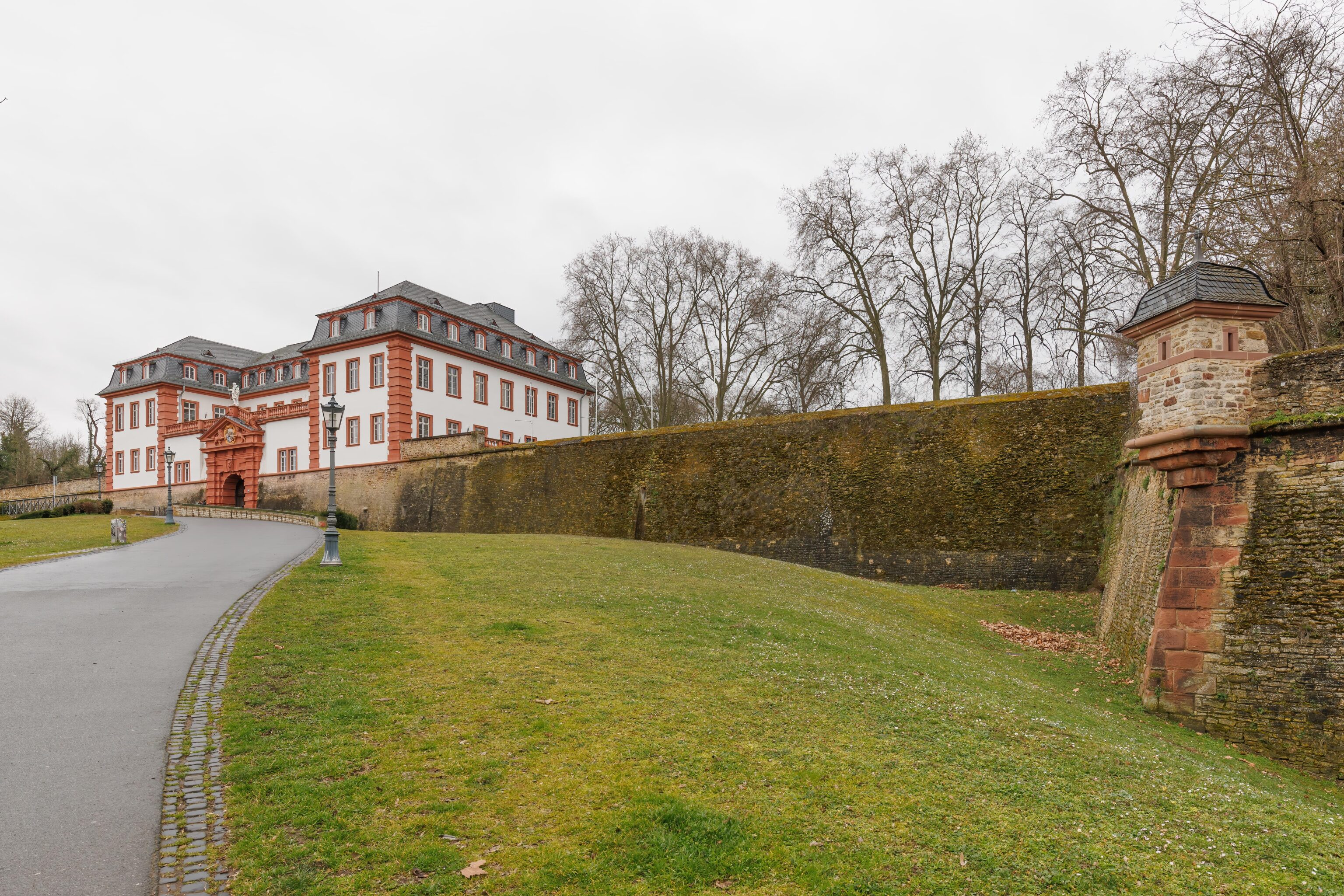
We started walking to the cathedral. We passed by the Mainz Citadel, just to the west of the theater.
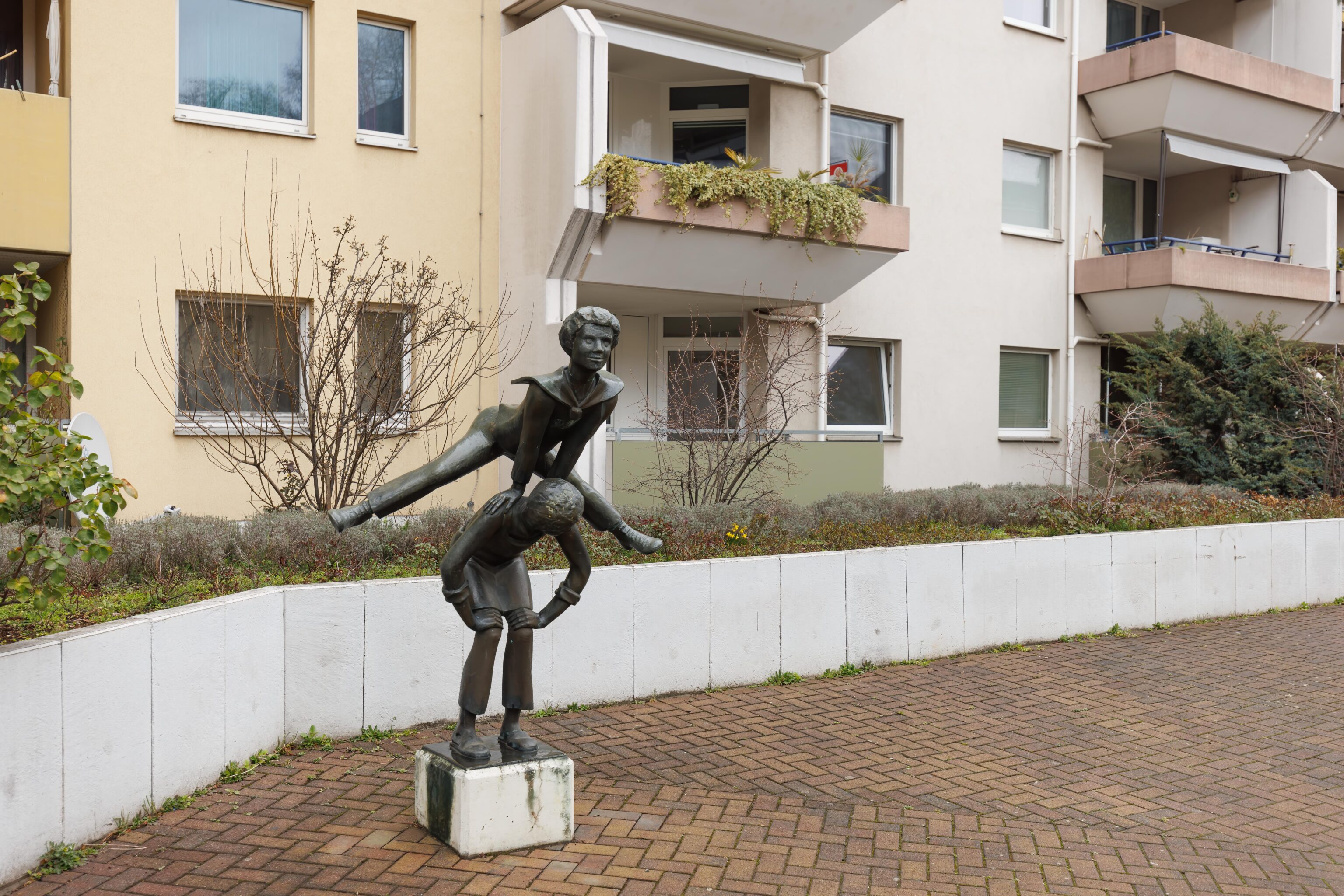
After crossing a road via a pedestrian overpass, we came across this statue in a residential neighborhood.
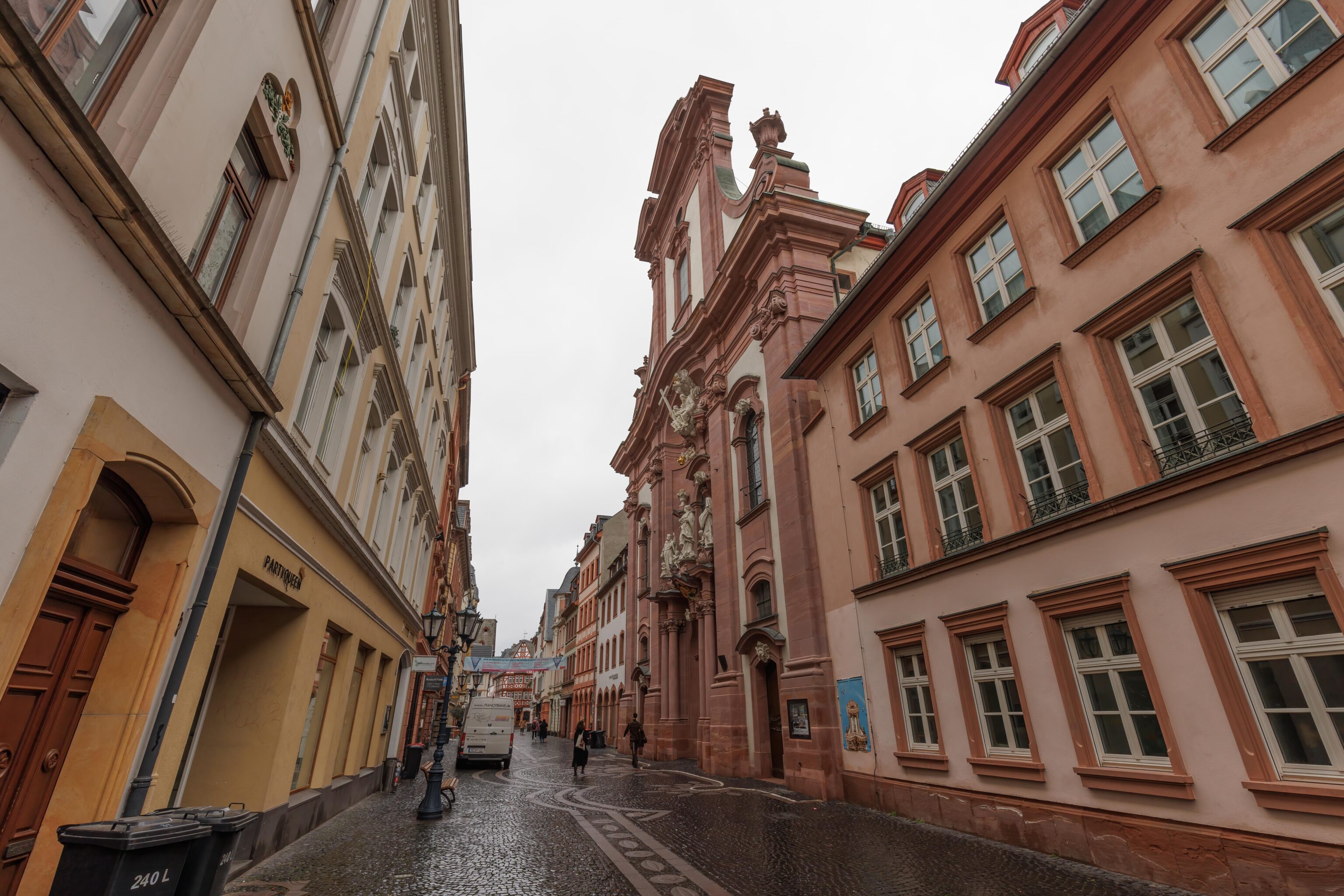
We continued on until reaching the Altstadt, or Old Town.
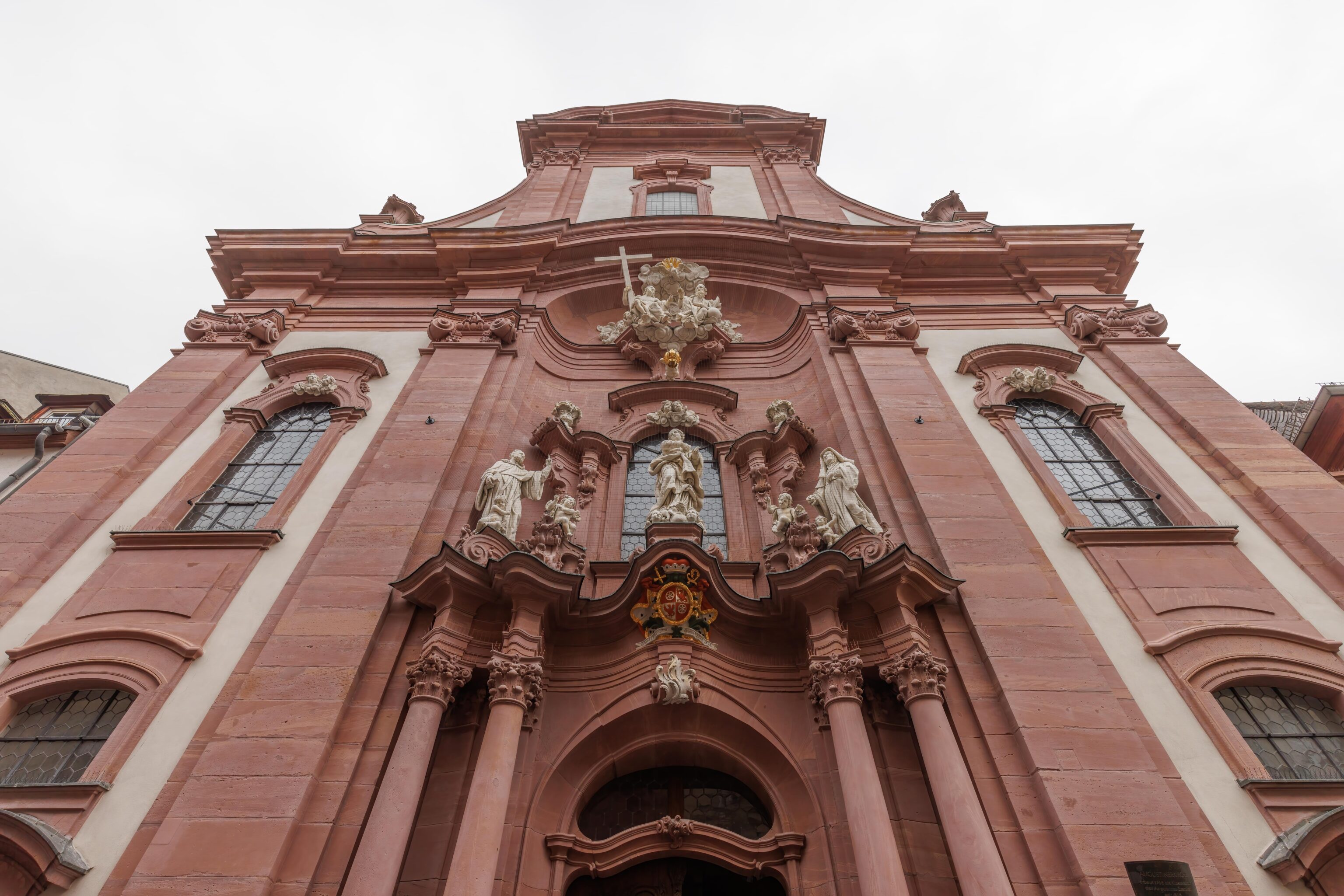
We came across a church, the Augustinerkirche.
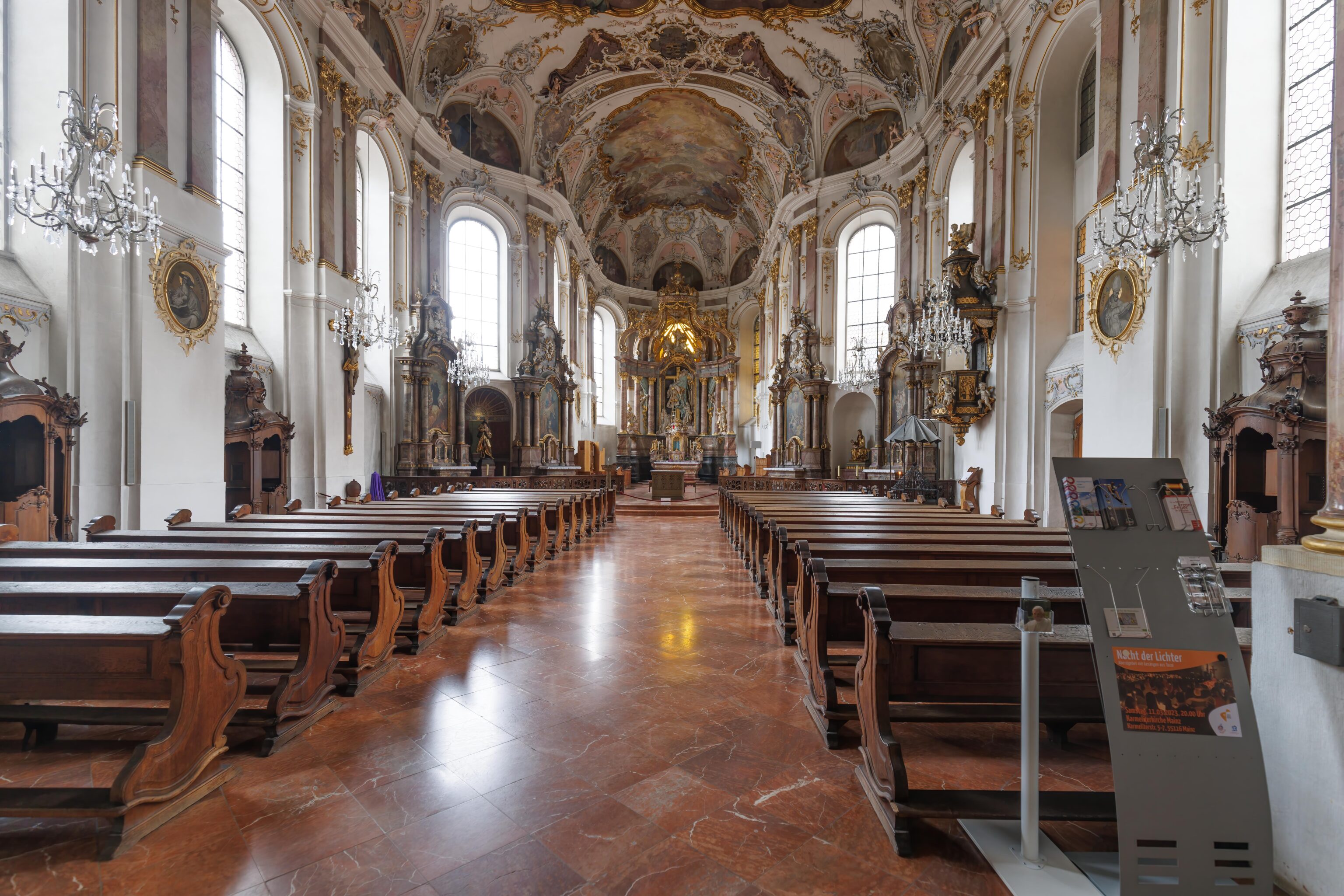
The front door was open a bit so we took a look inside. There was a glass door which was closed. Glass doors behind the actual doors seems to be a common feature in German churches.
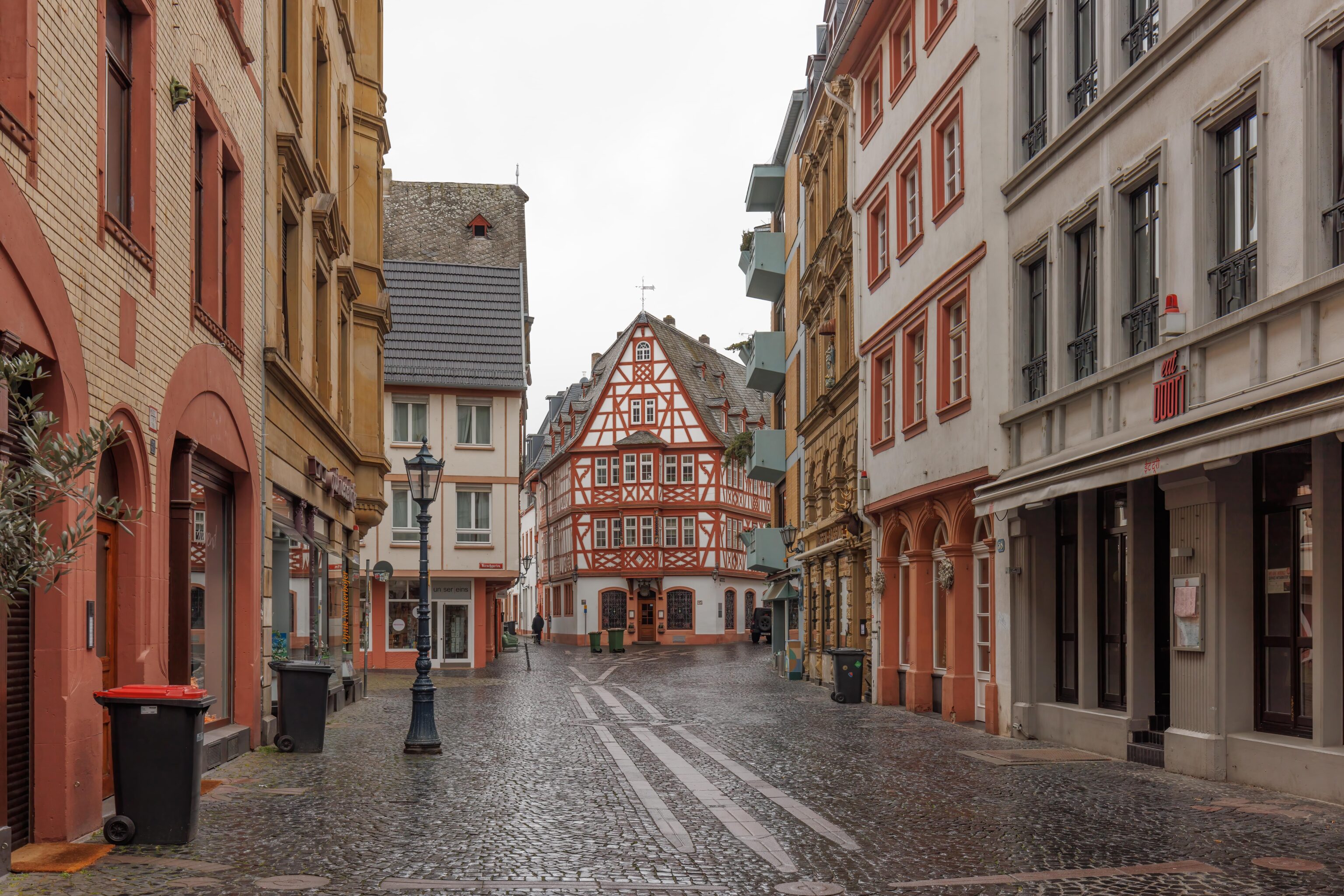
After leaving the church, we continued onward. It was garbage day so we saw many garbage bins out on the street.
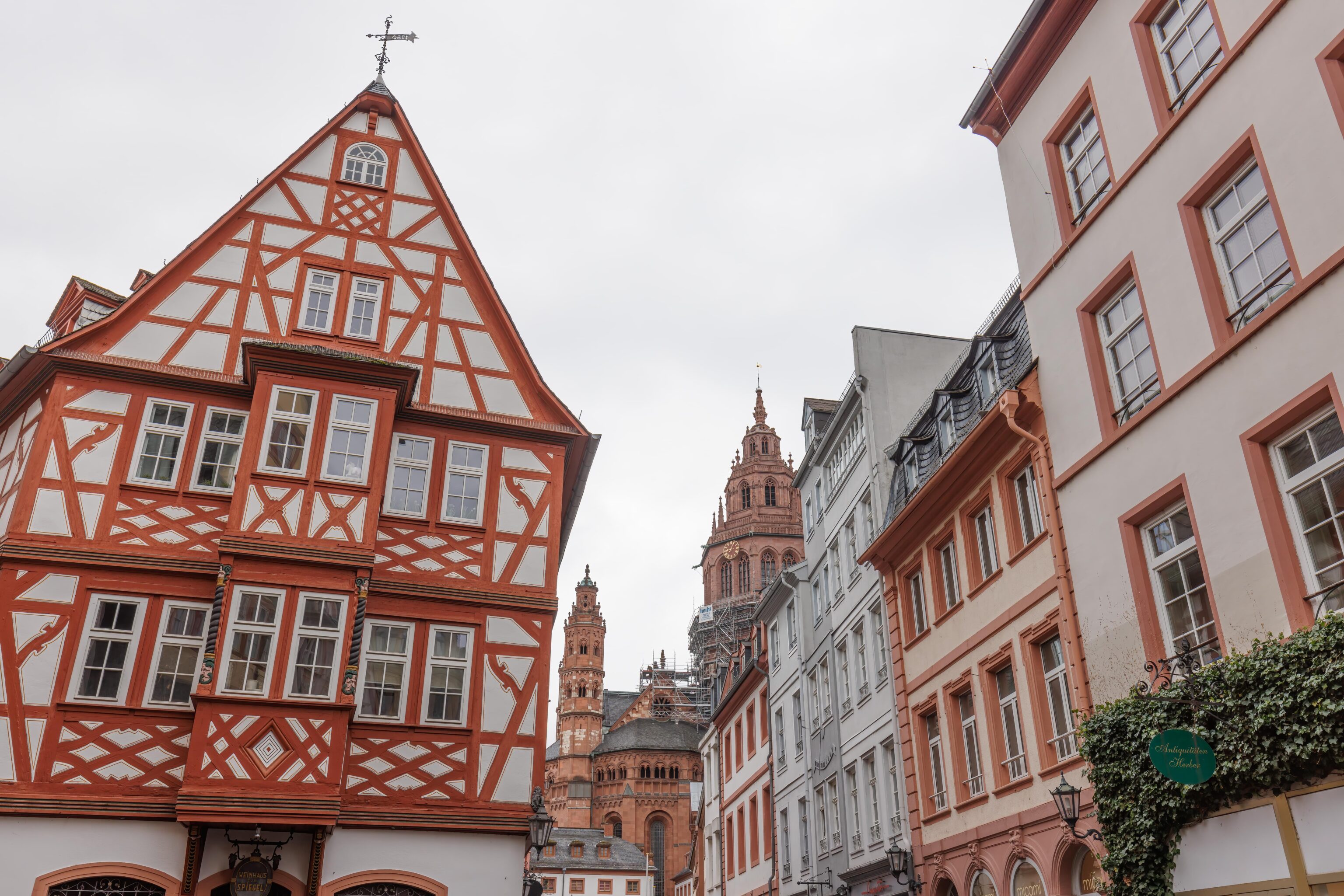
We were able to eventually see the cathedral again!
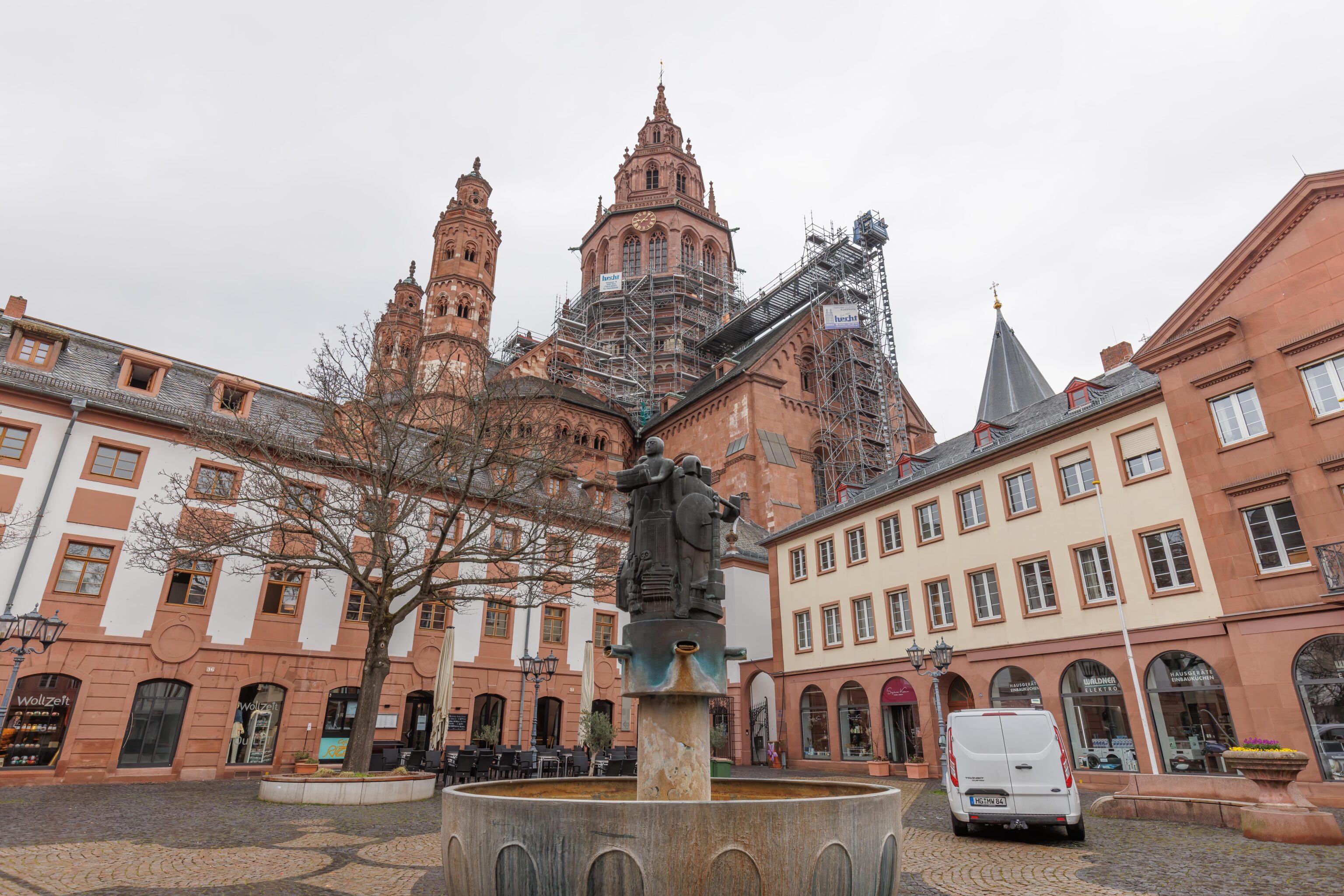
We passed by this statue near the cathedral, now visible just behind the buildings in the foreground. The statue seems to be Fünf Figuren aus der Mainzer Geschichte, or Five Figures from Mainz History.
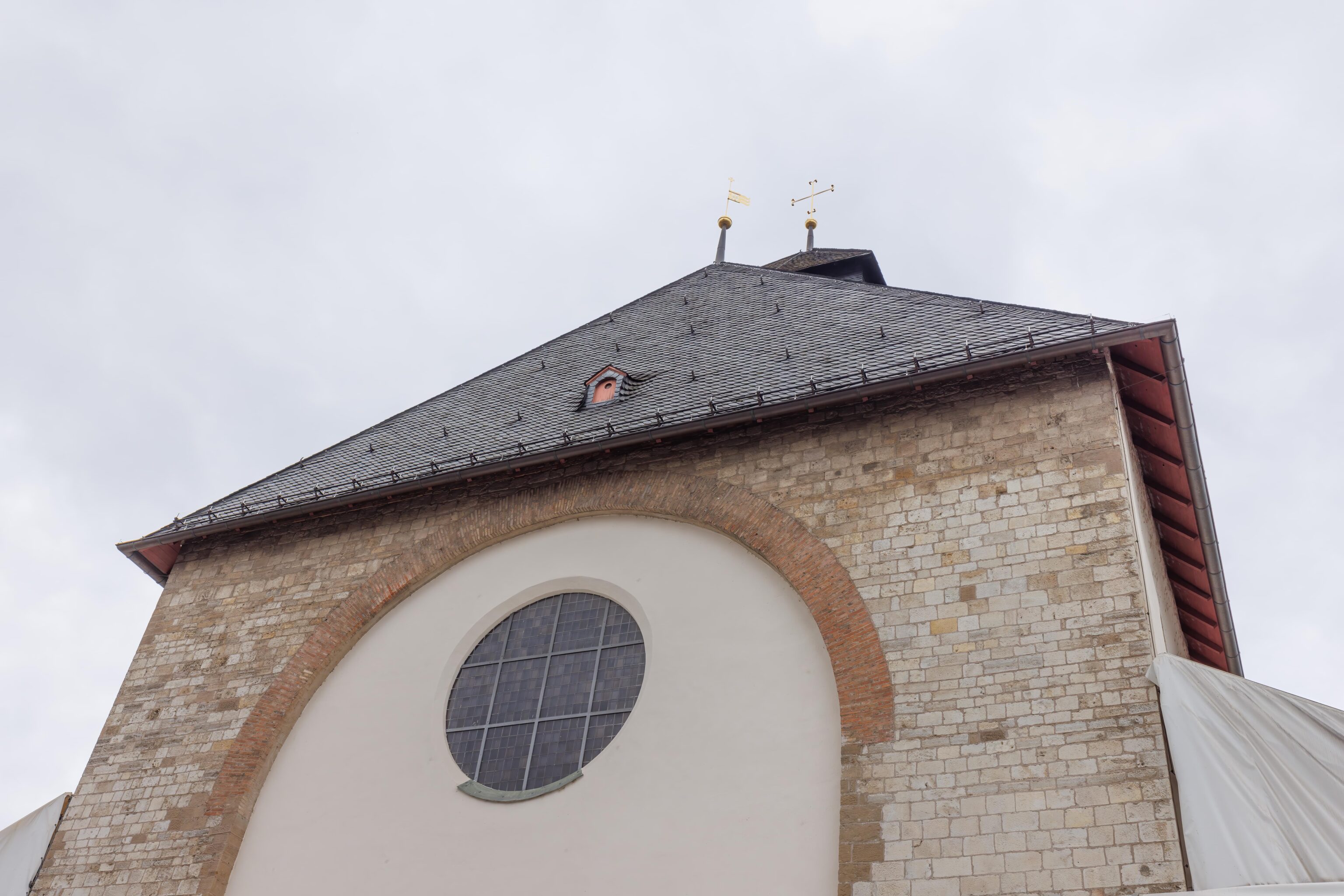
We passed by St. Johannis, a church that appears to be under renovation. Their website mentions archaeological activity is taking place inside.
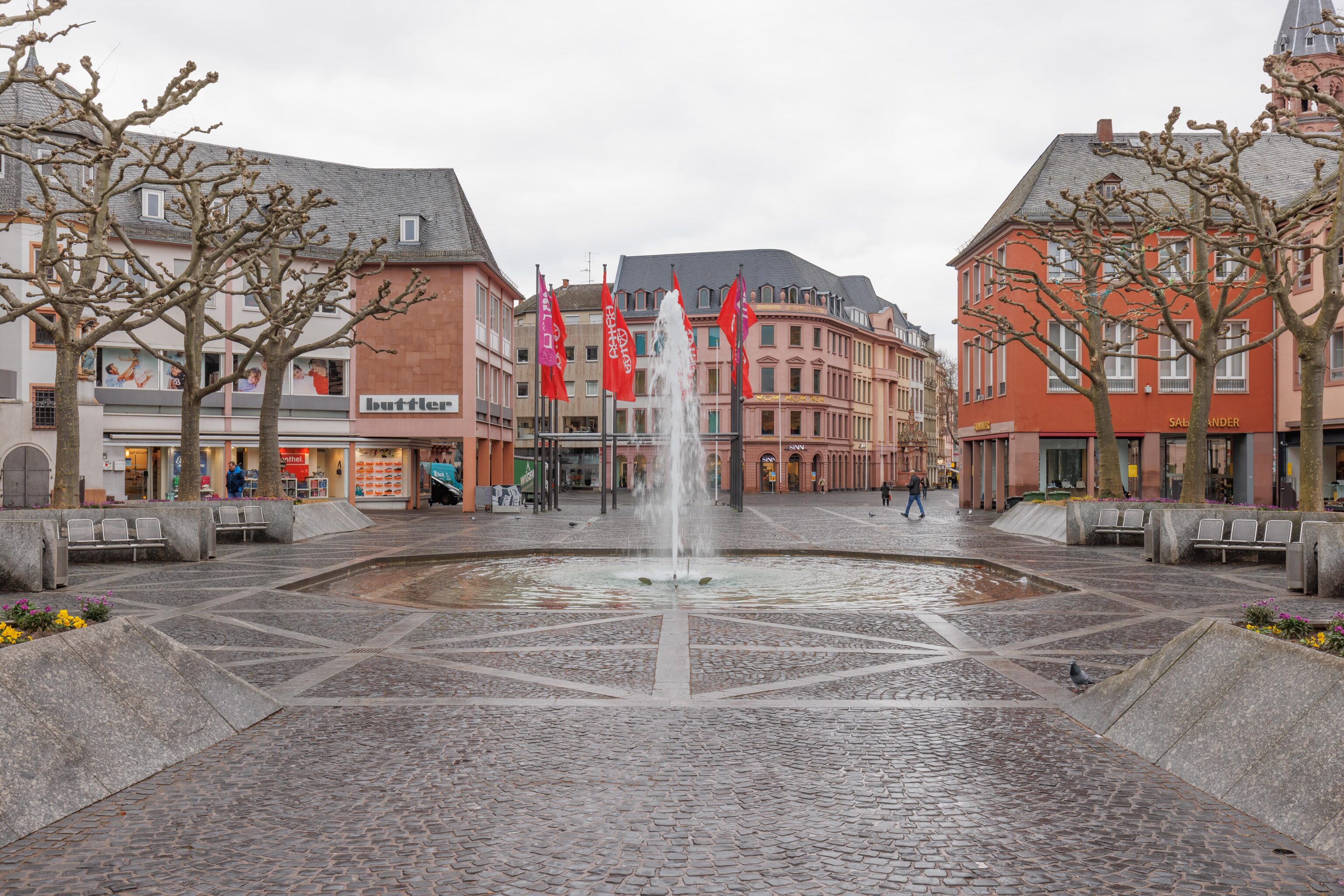
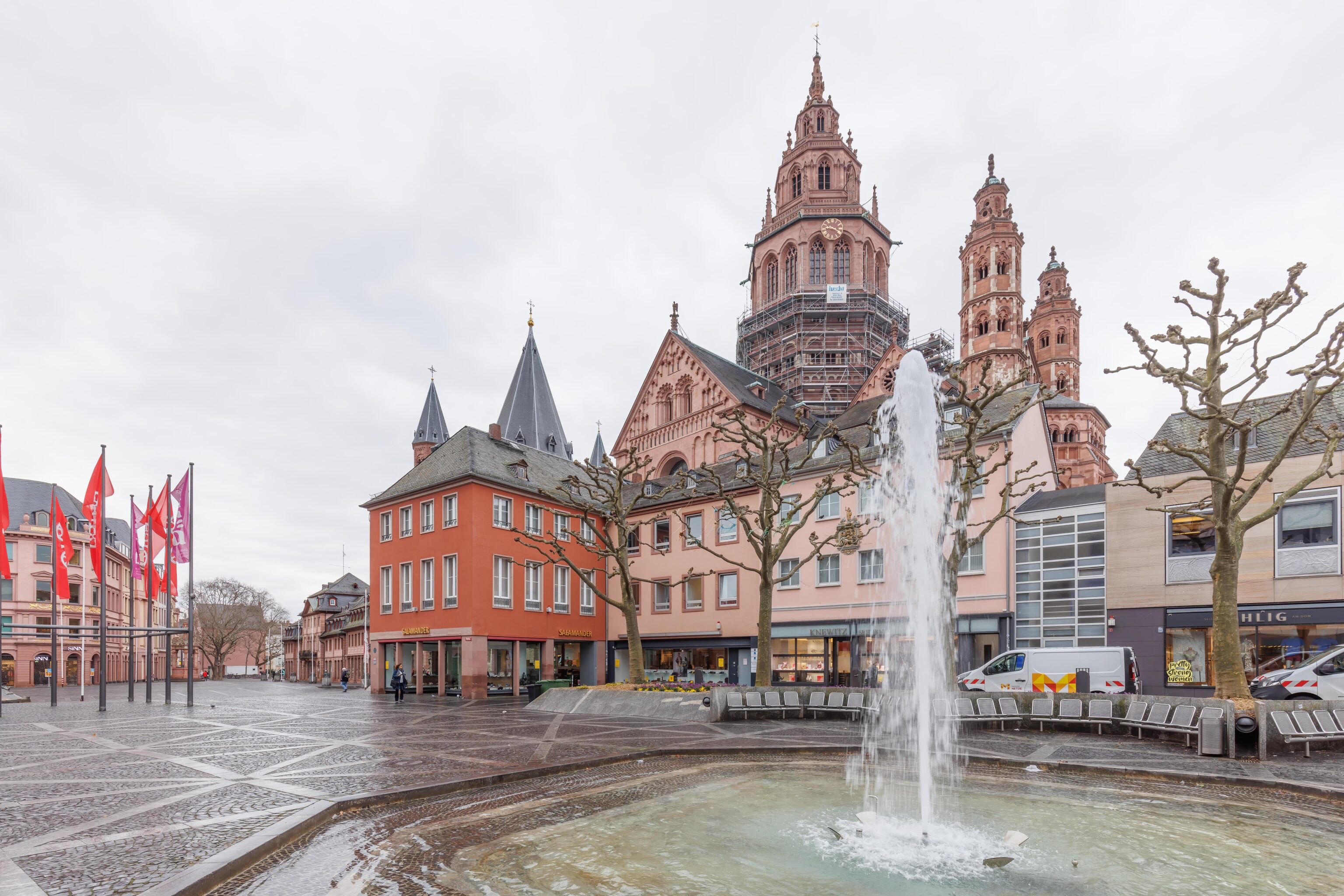
We continued walking and came across a plaza with a working fountain! The only fountain that we’ve seen in Germany that is turned on during the winter!
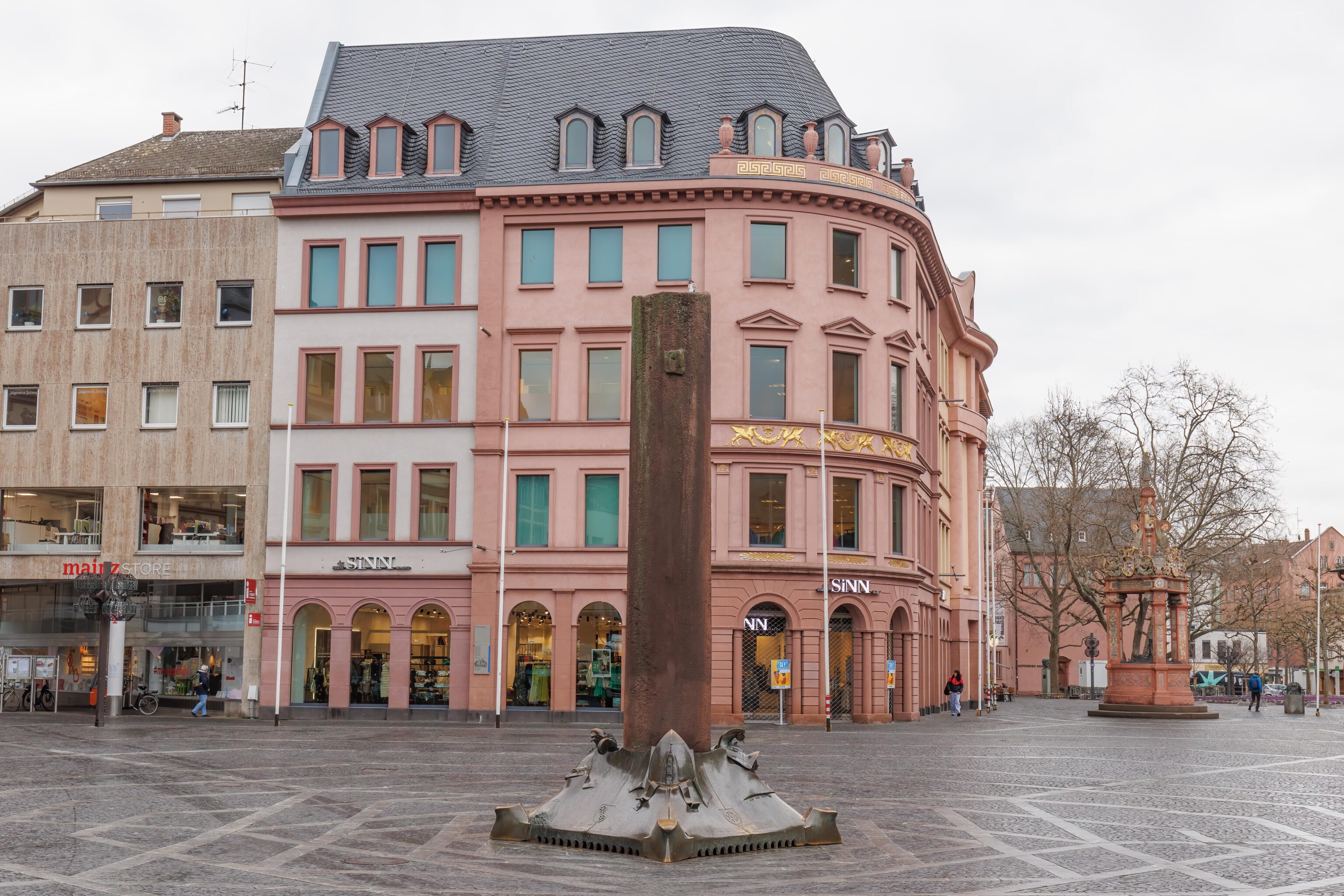
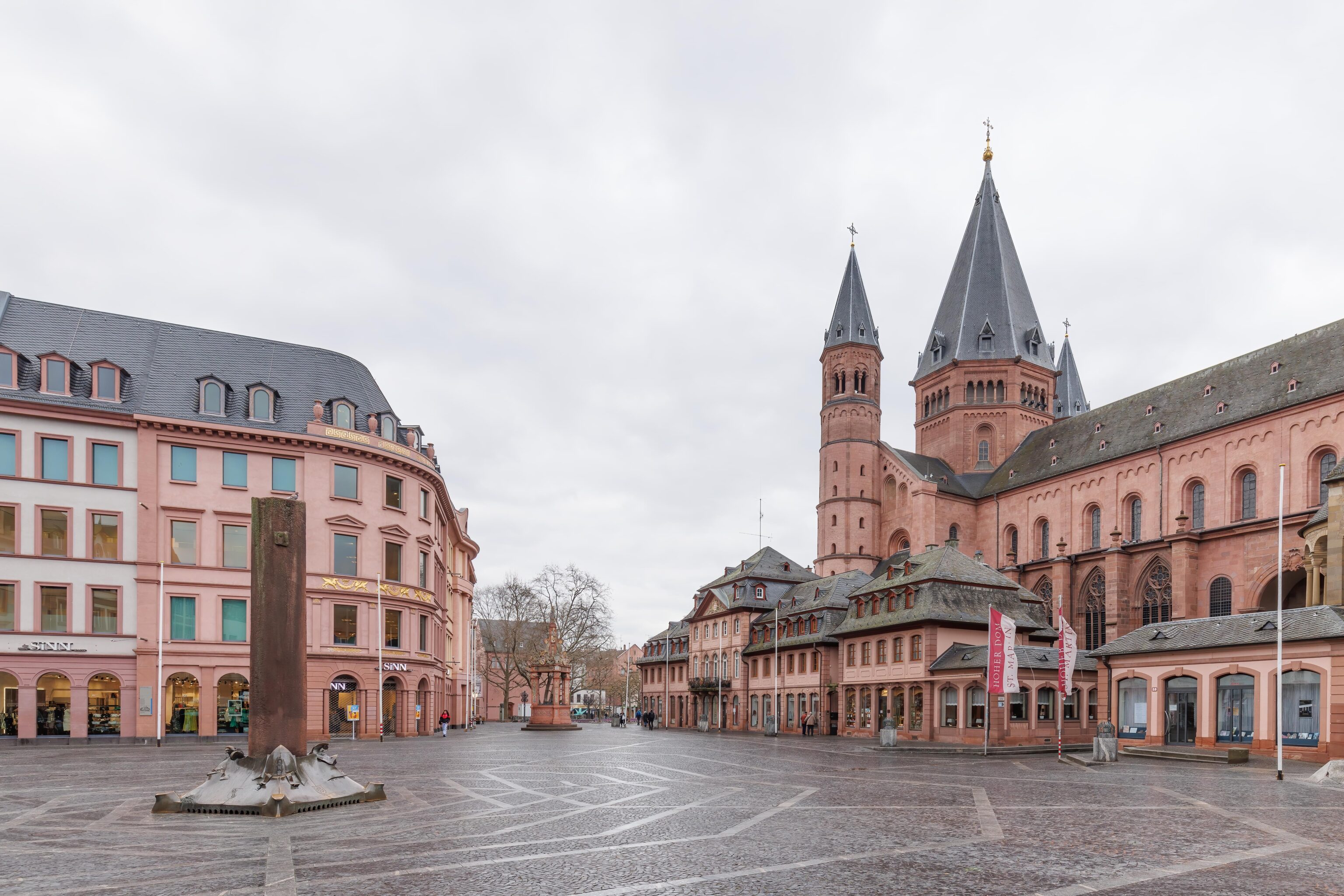
Just beyond the plaza was another plaza with a large pillar sticking up out of a sculpture. The pillar is over 1,000 years old and made of sandstone. It is named Heunensäule, which translates to Hay Column according to Google. The sculpture at its base shows events throughout Mainz’s history.
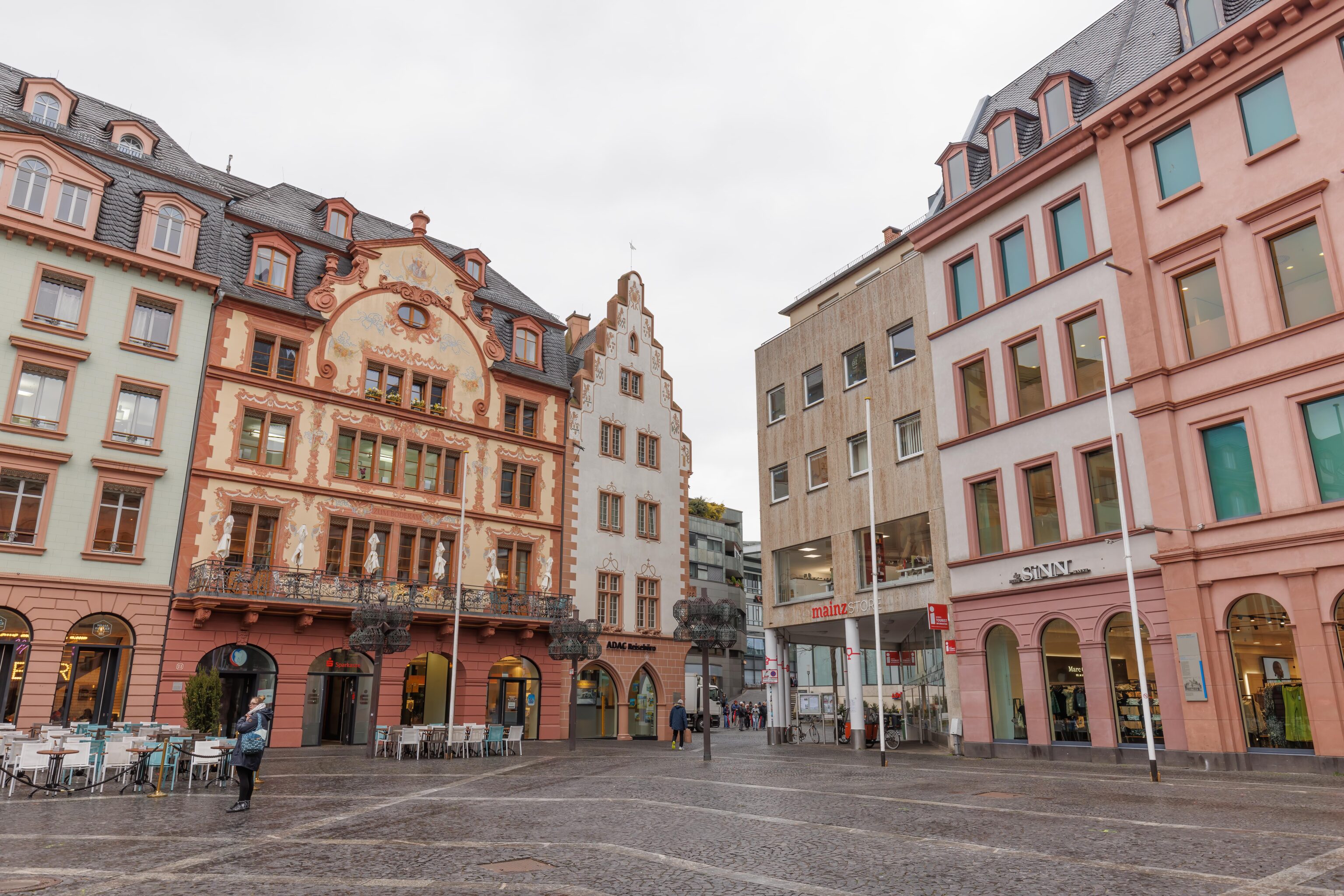
The plaza has both old and new buildings. Or at least, buildings that appear older and newer.
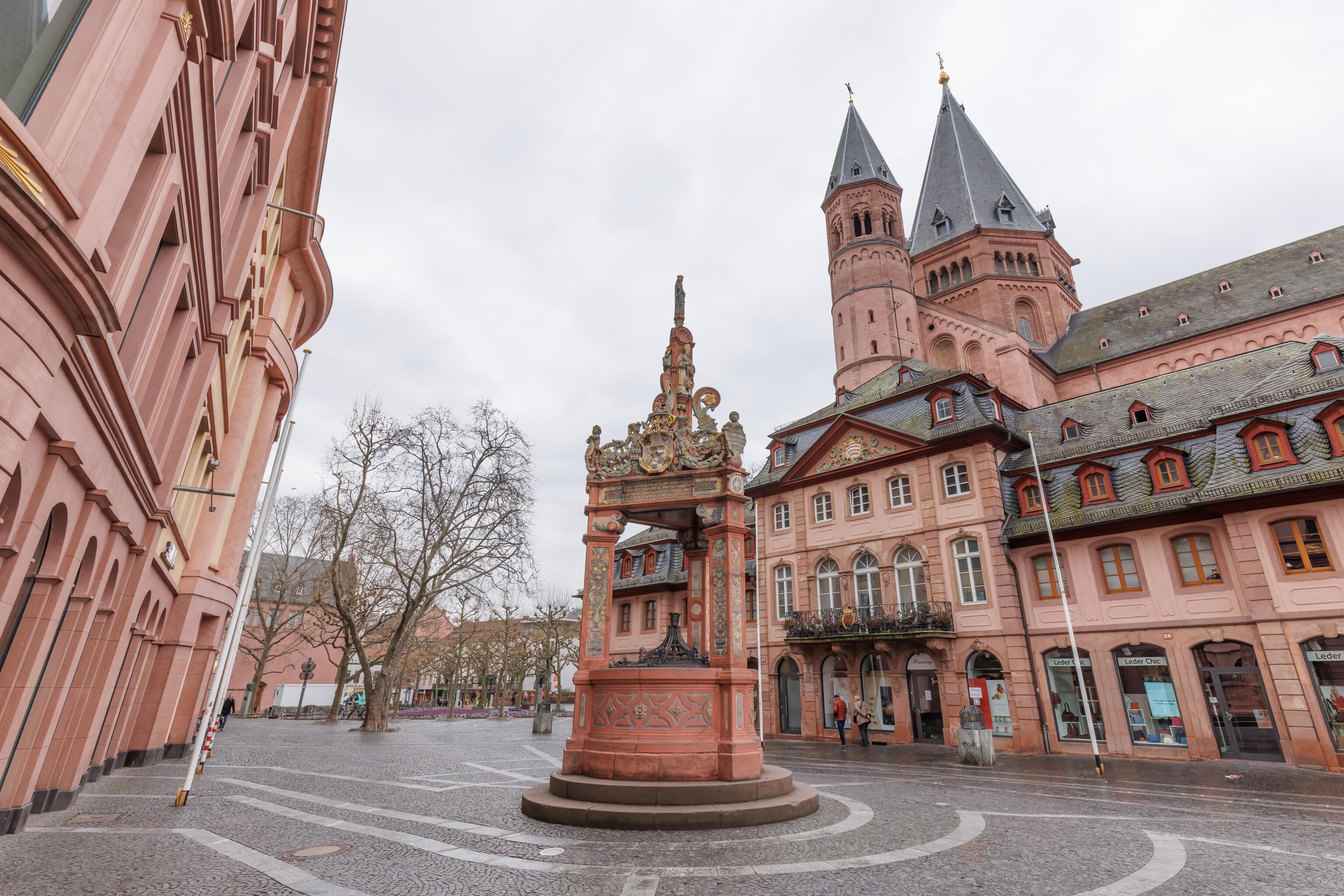
Yet another monument of some sort. This one appears to be rather old.
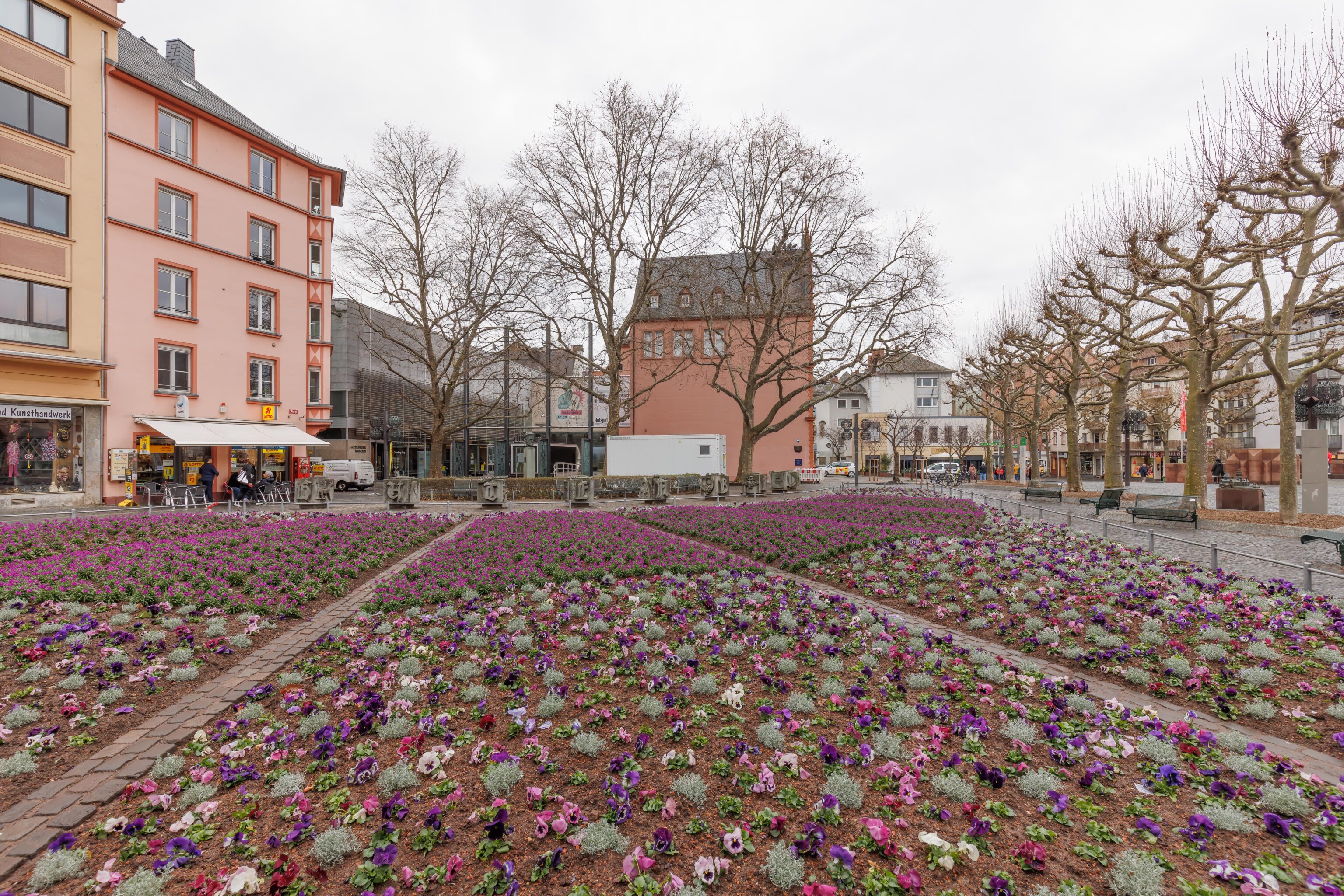
Just beyond, we saw a neatly organized flower display. The Gutenberg Museum is in the modern looking building behind the trees on the left. Gutenberg, famous for inventing the printing press, was from Mainz.
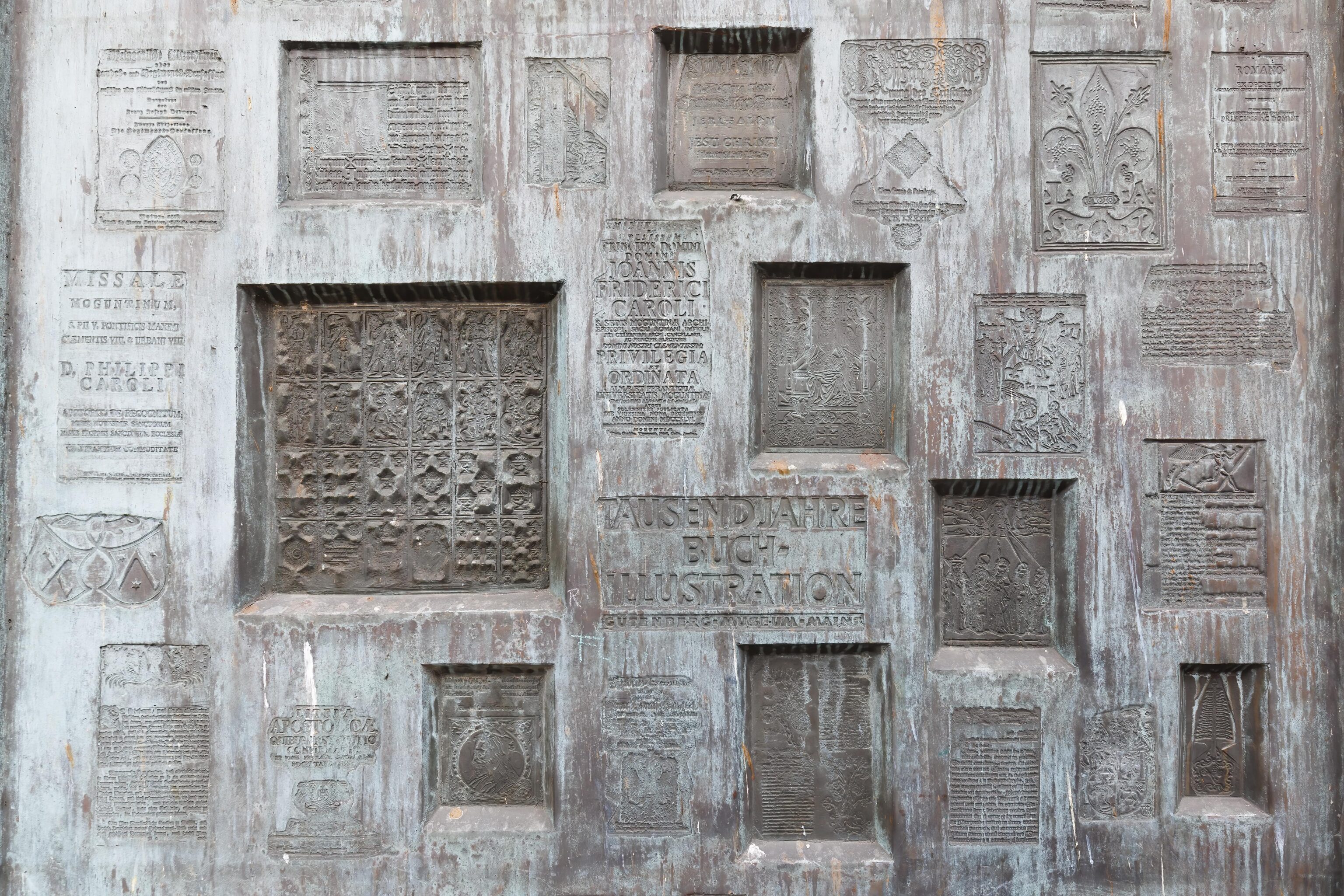
Not much is visible from outside the museum. There are some displays of printing presses outside though.
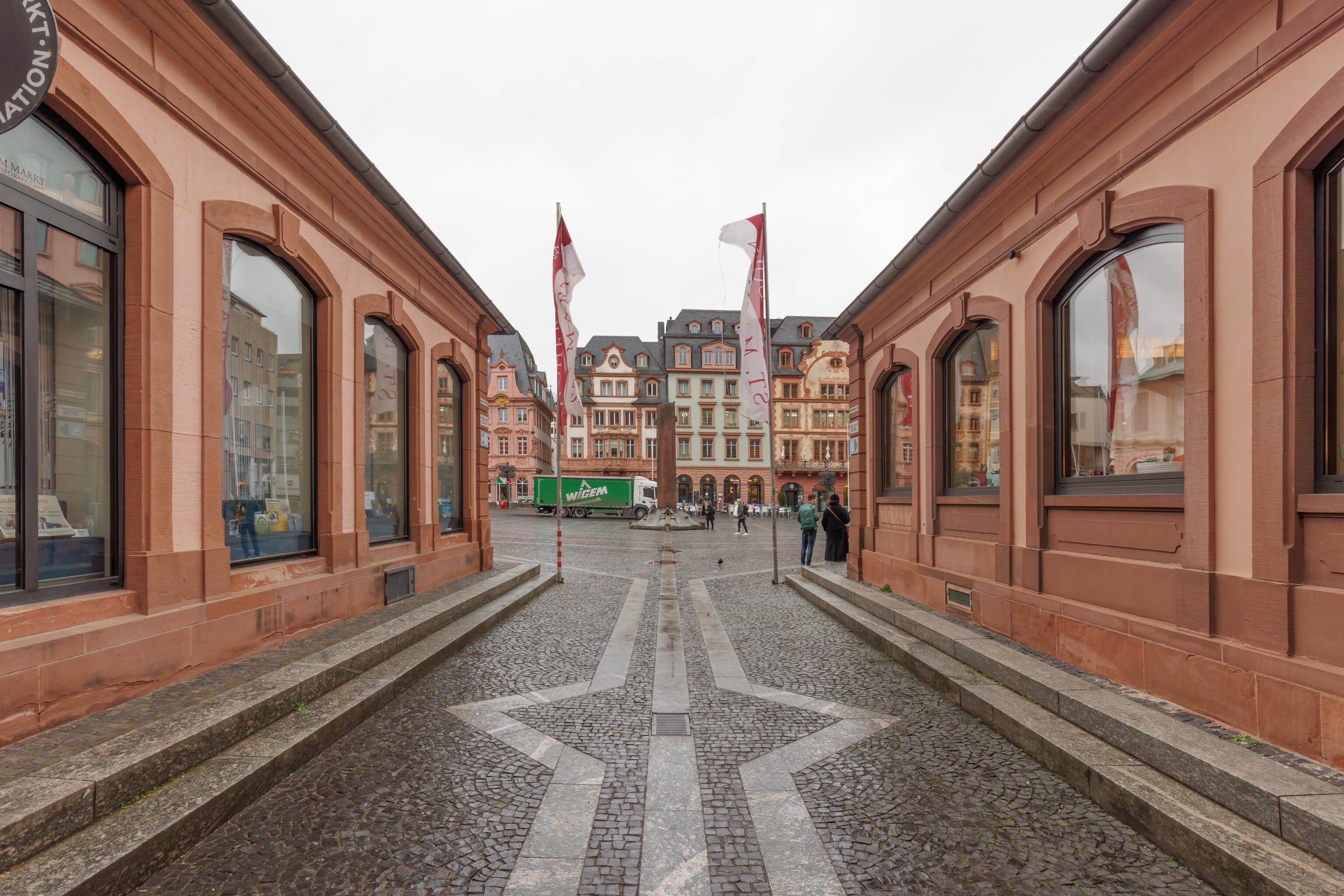
We somehow managed to miss the entrance to the cathedral. We backtracked and found it by the ancient pillar! Here, the entrance is behind us.
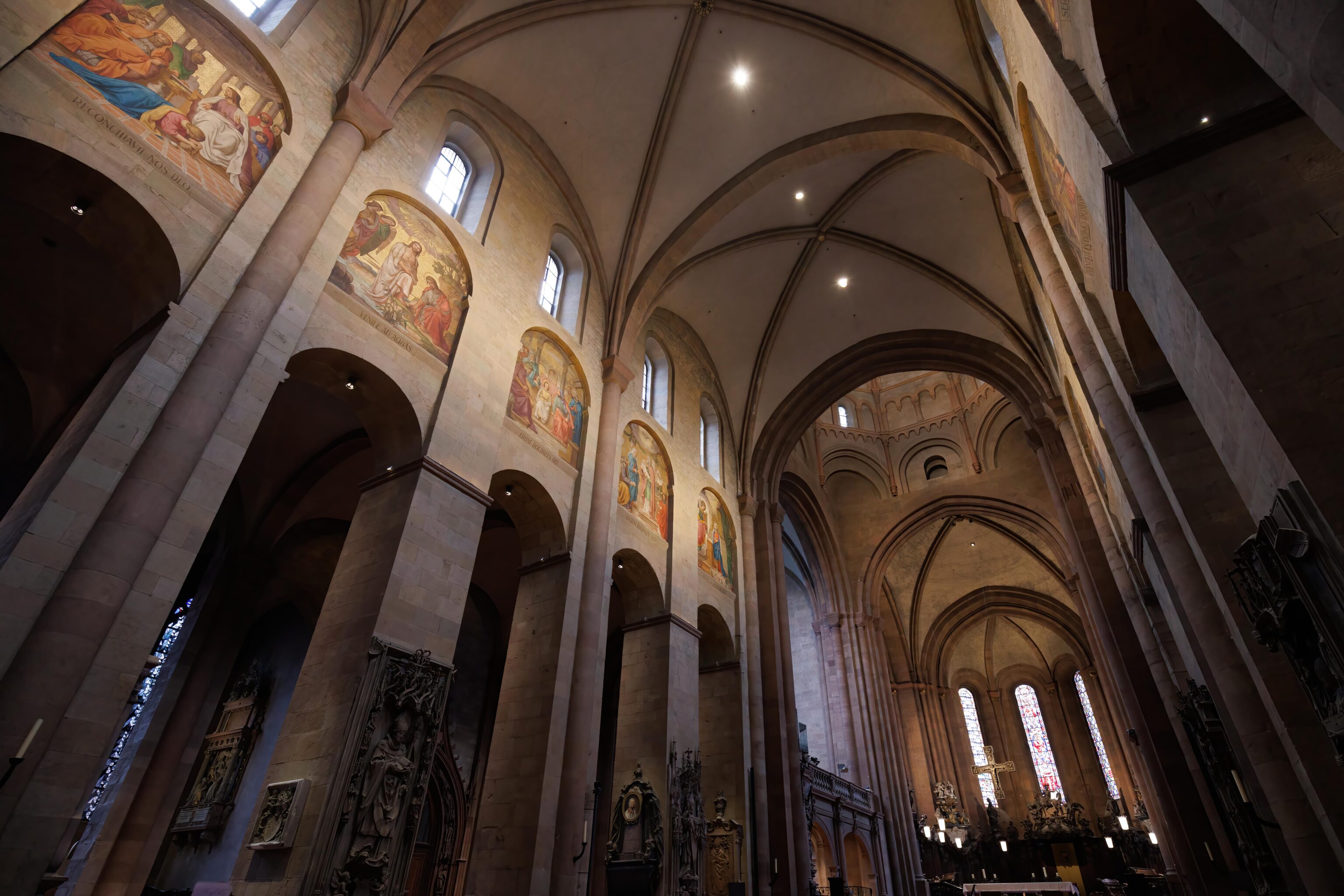
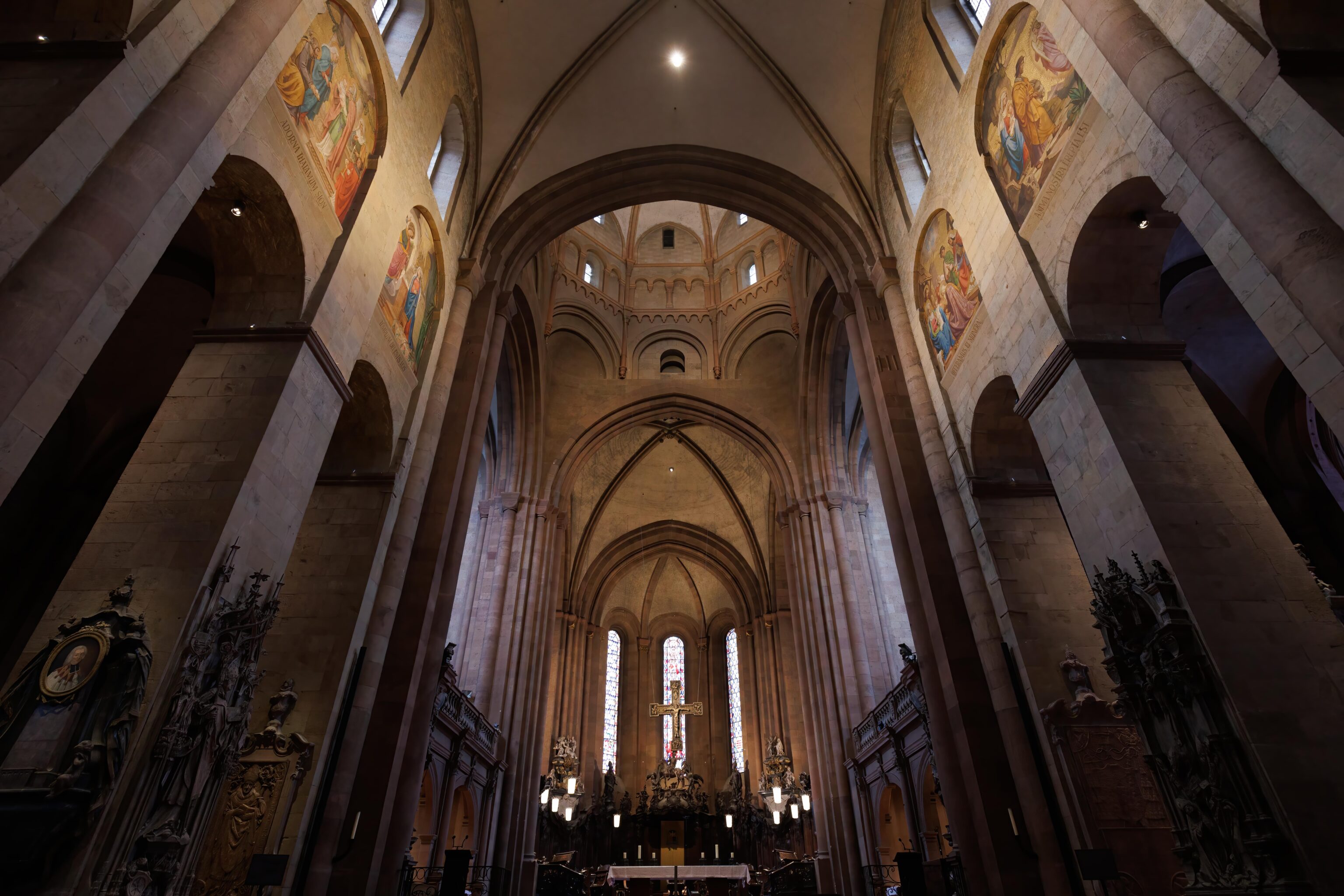
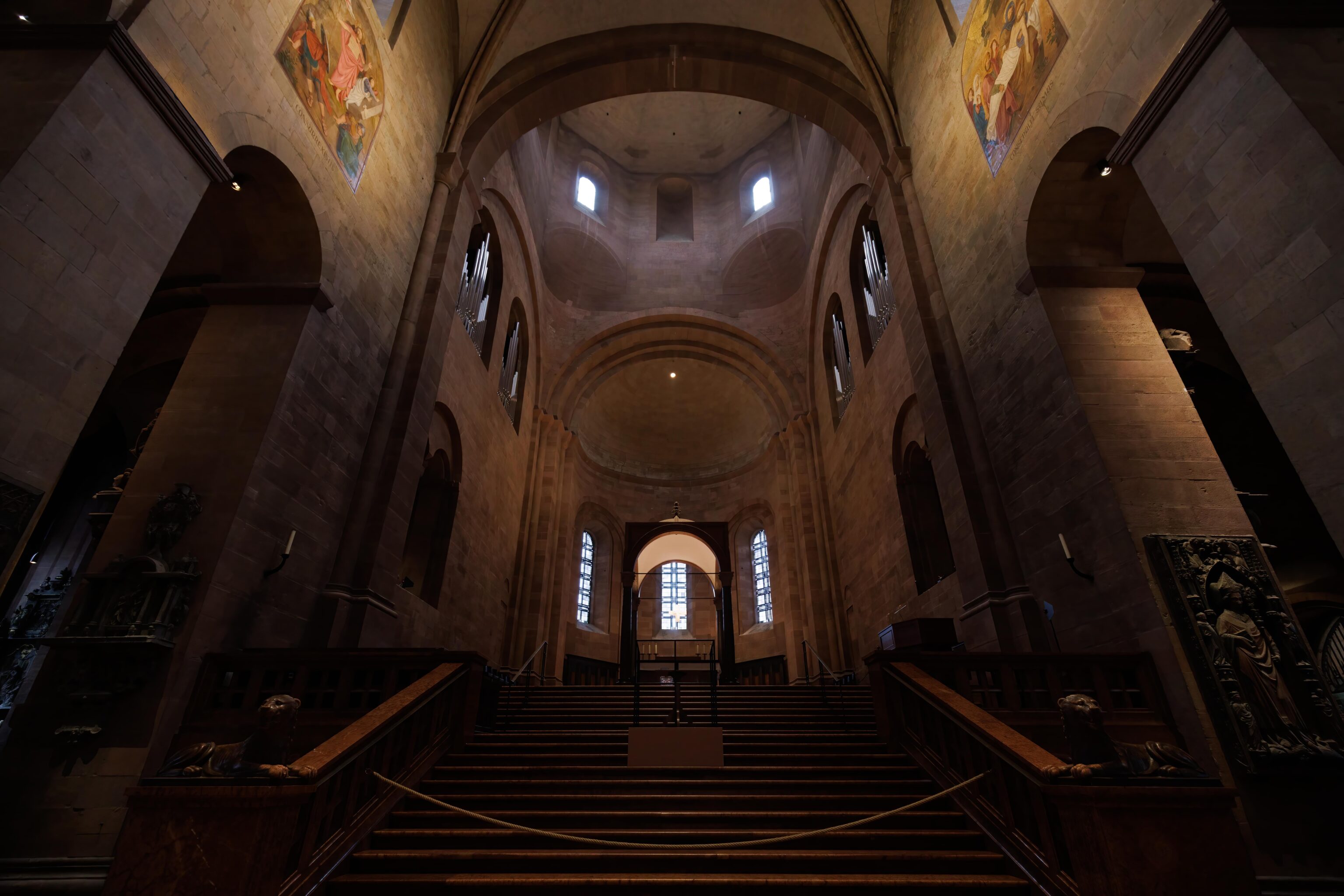
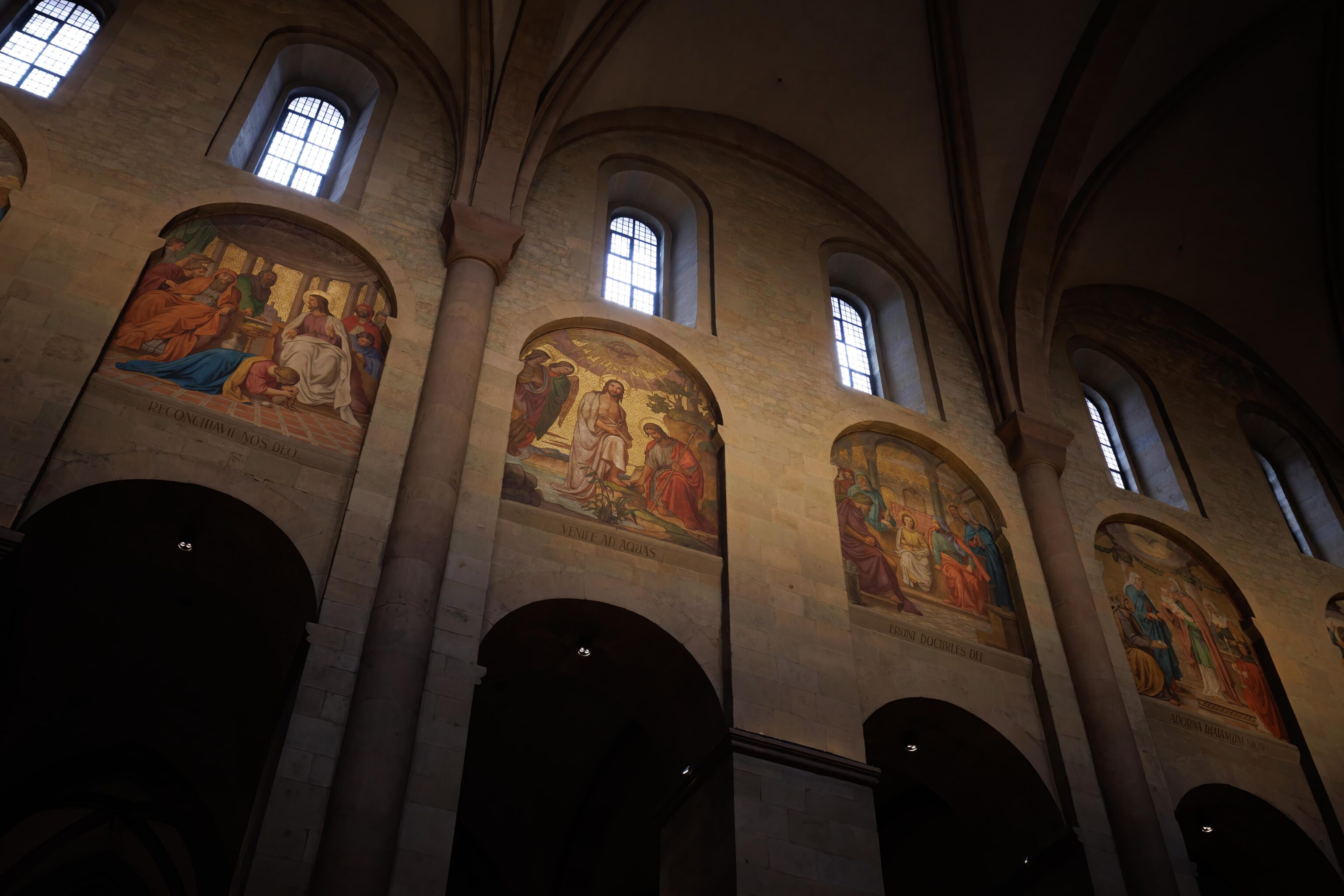
The Mainz Cathedral is very dark inside. There is very little lighting and the small windows that are high up on the building don’t allow very much light in.
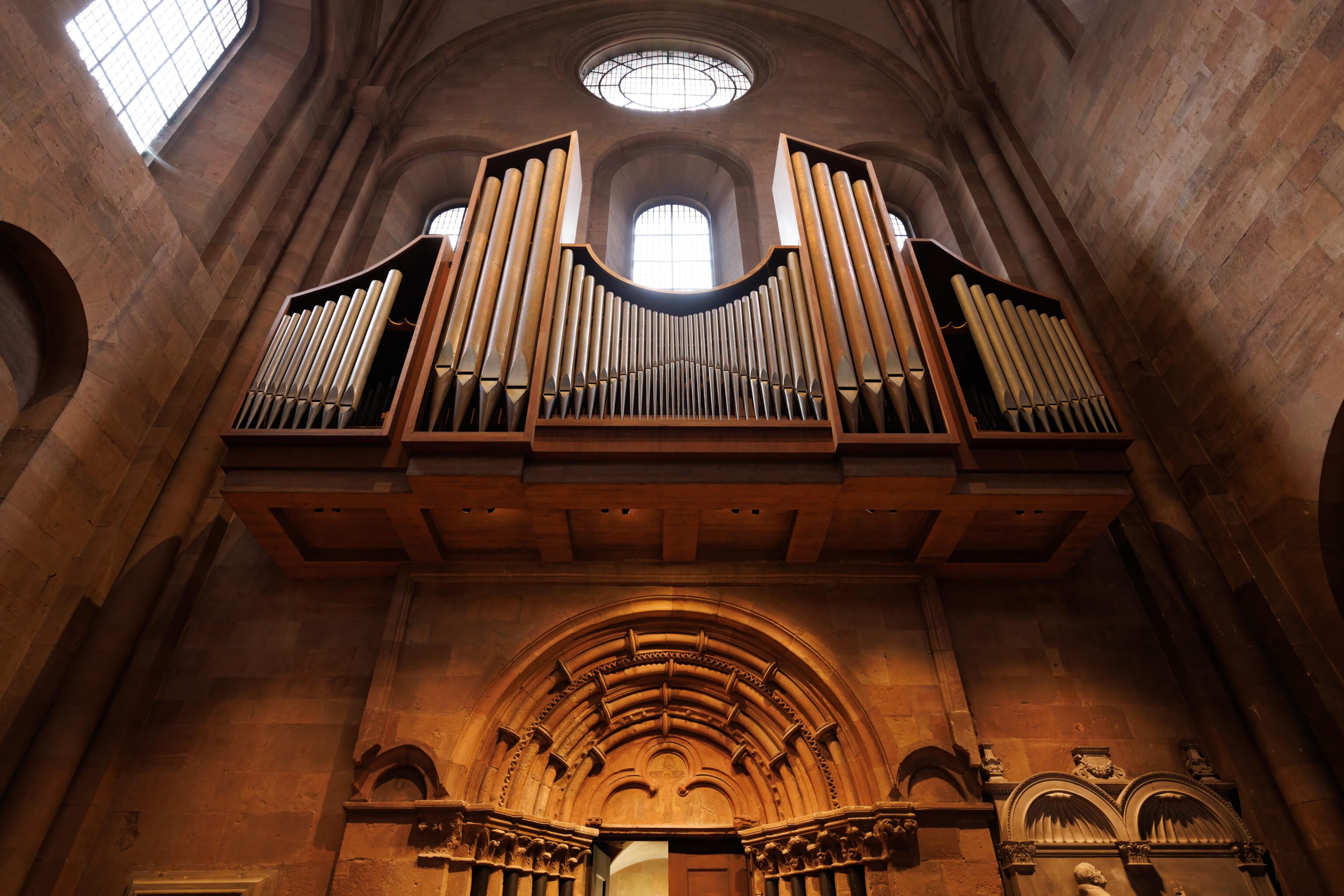
We found the organ on the side of the building.
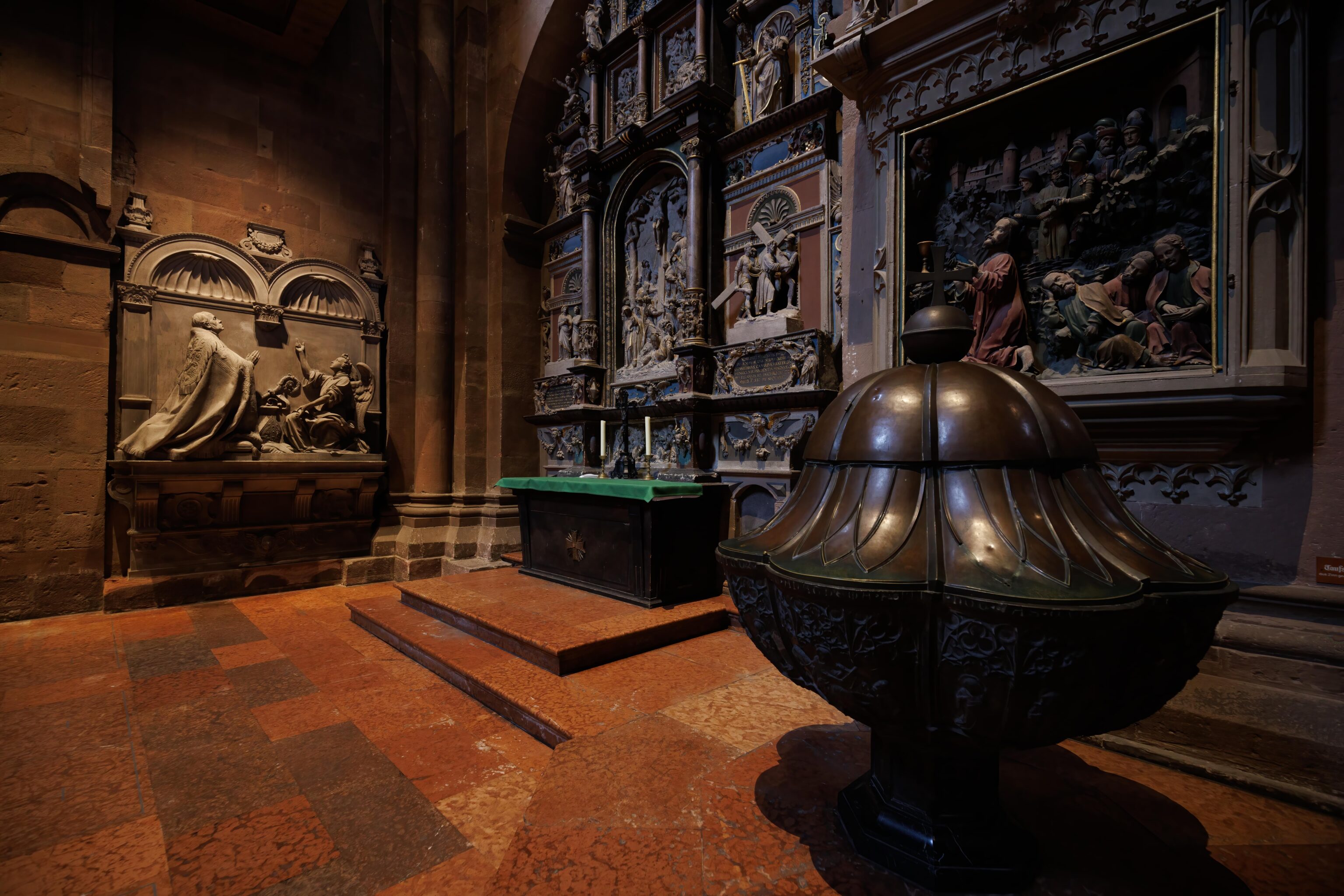
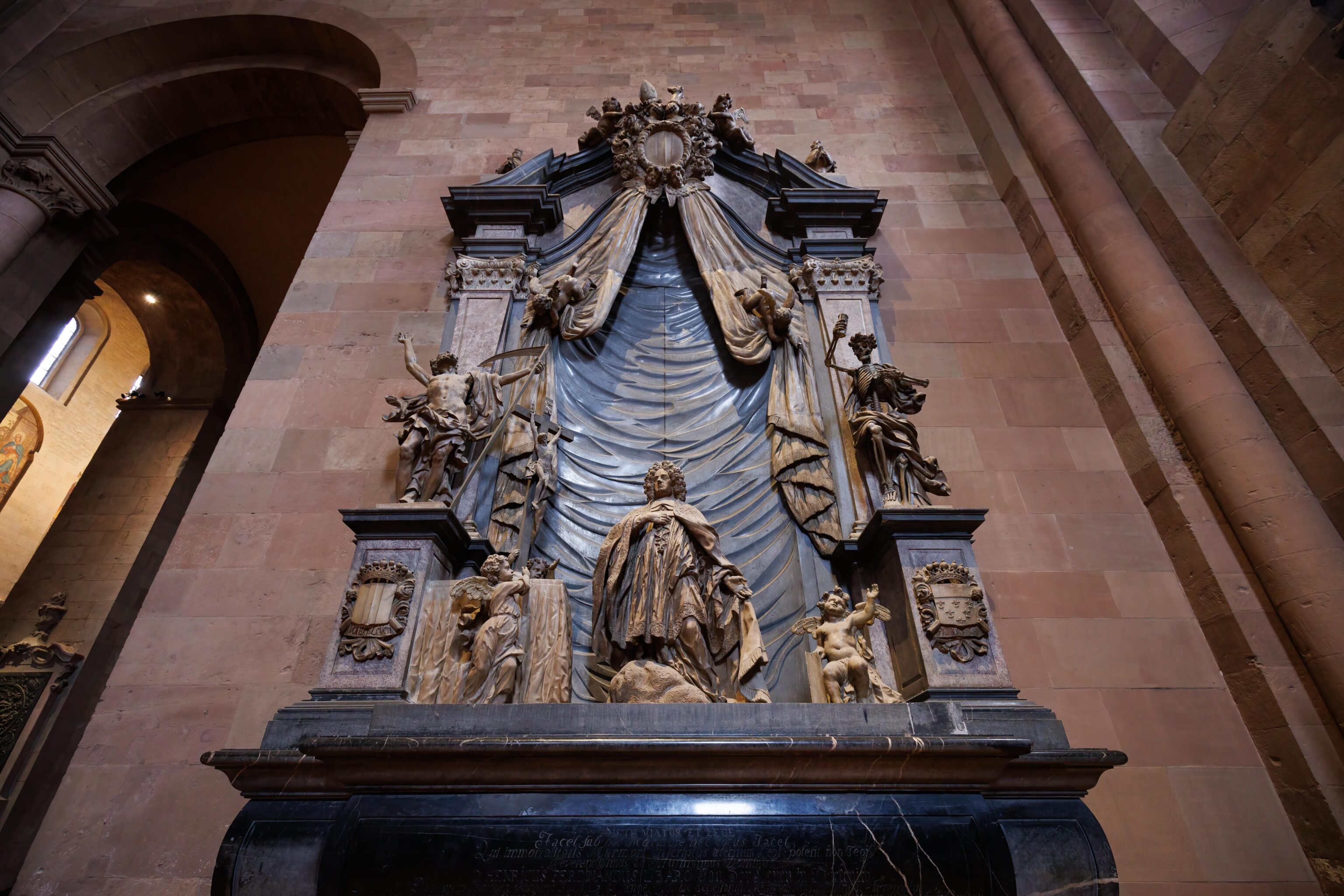
We quickly walked through, looking at some of the items within the cathedral as we went.
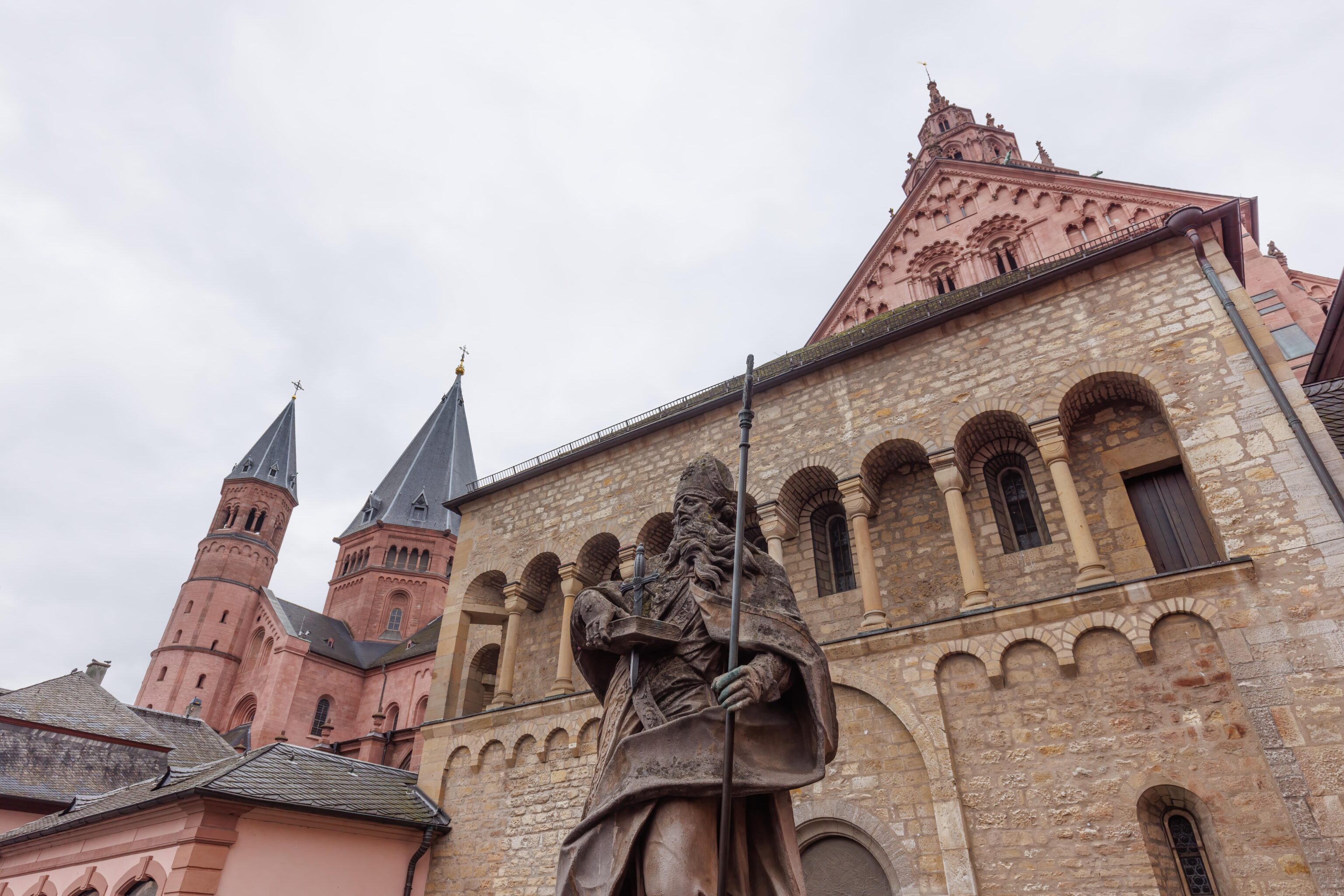
After exiting the cathedral, we noticed this statue nearby.
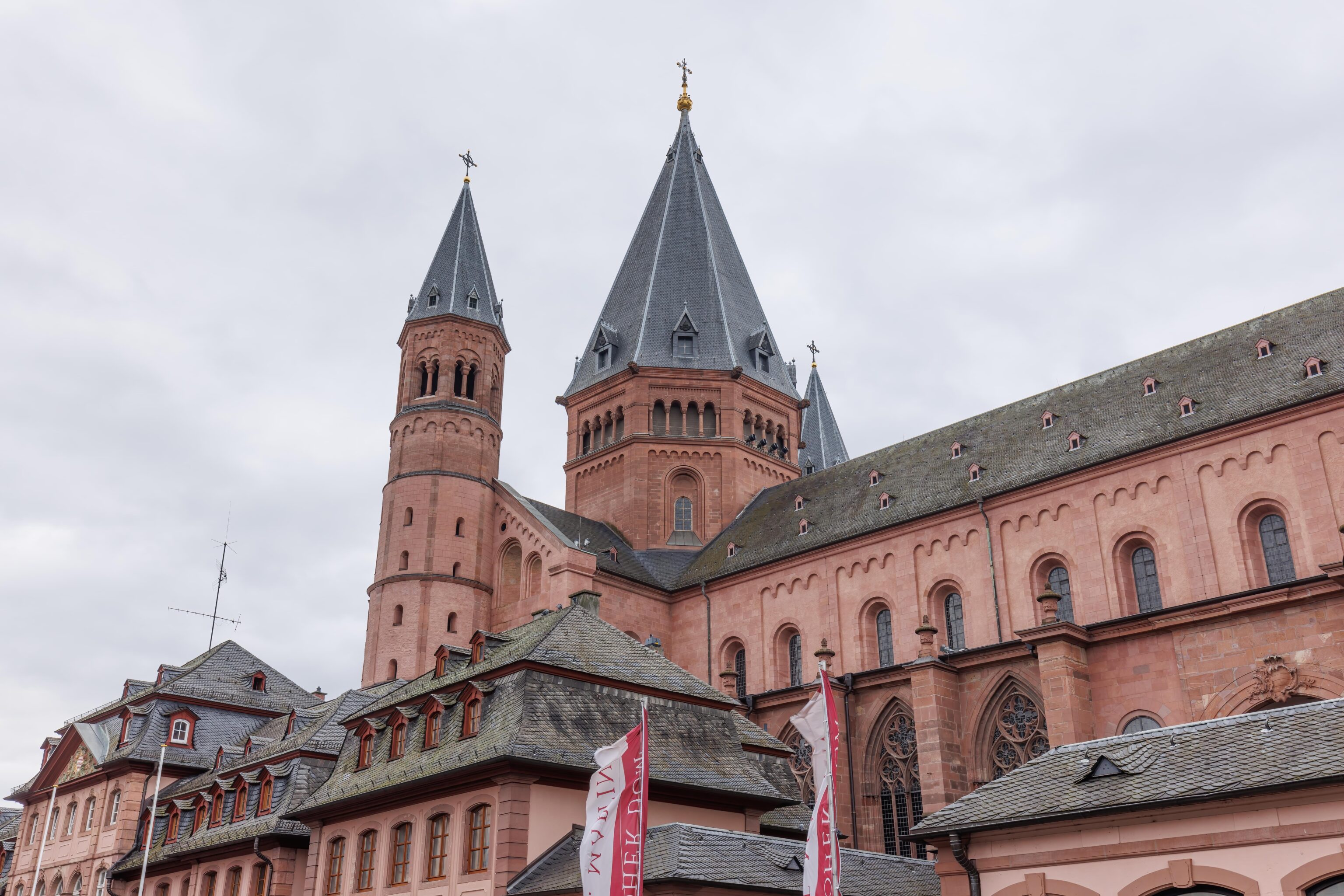
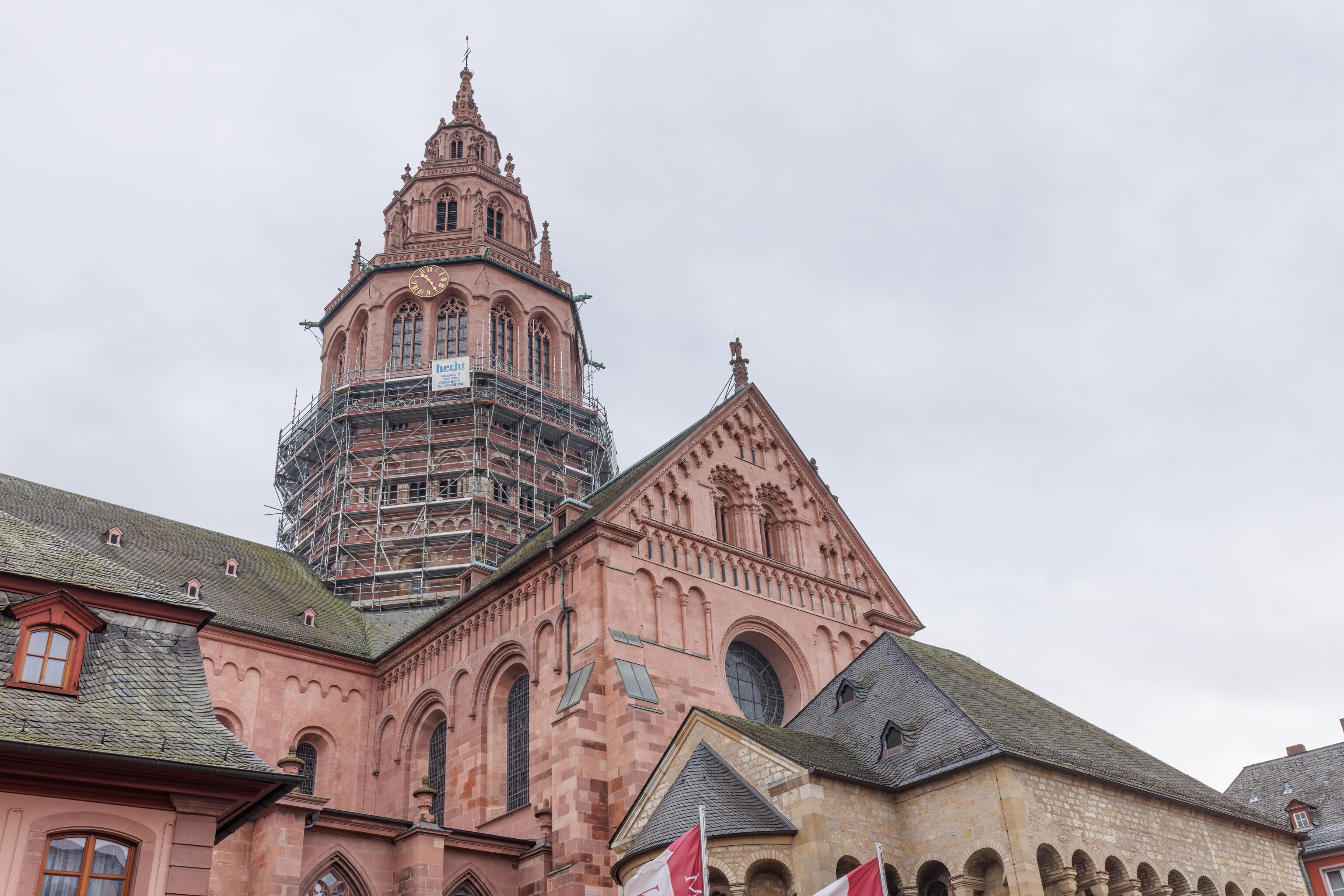
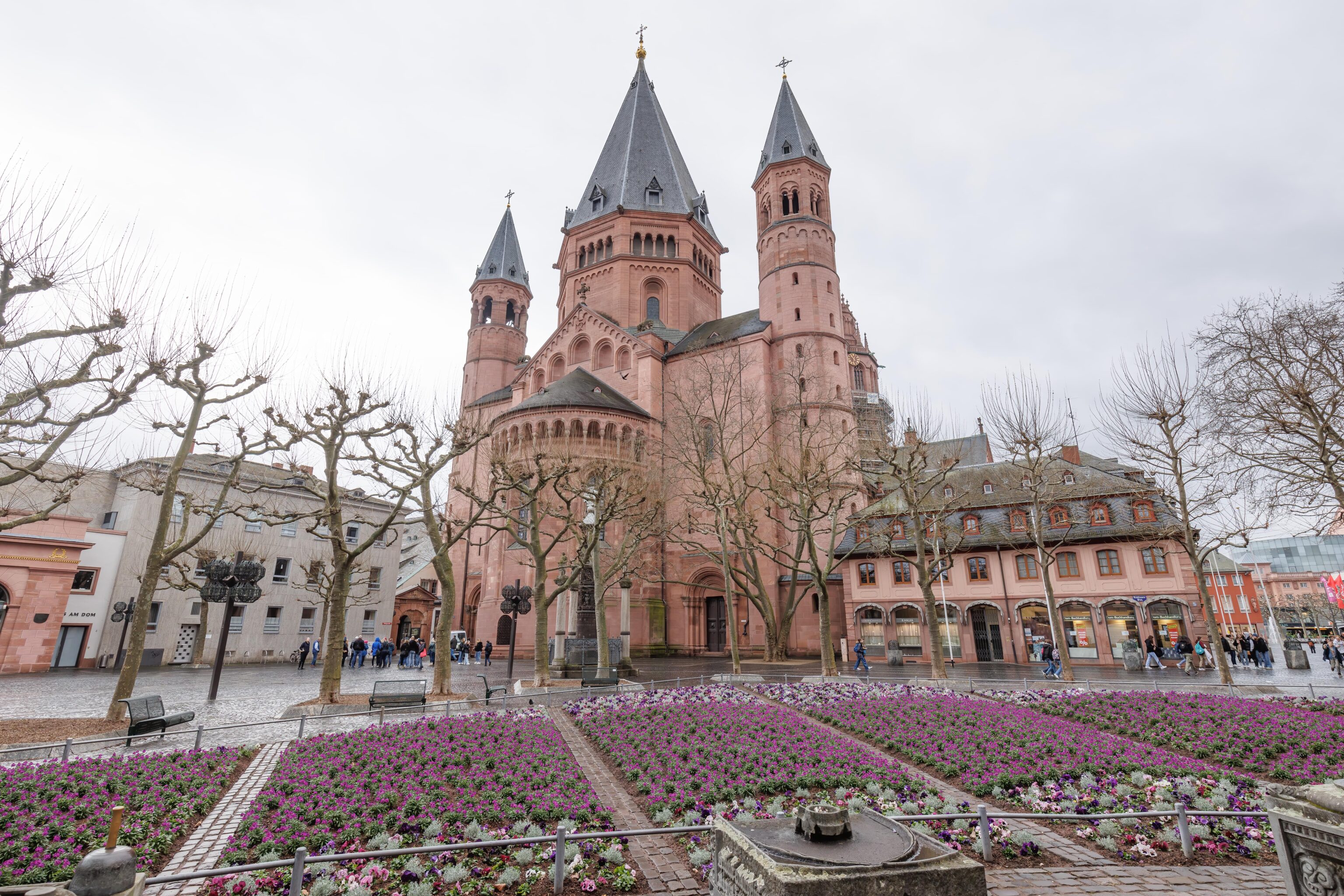
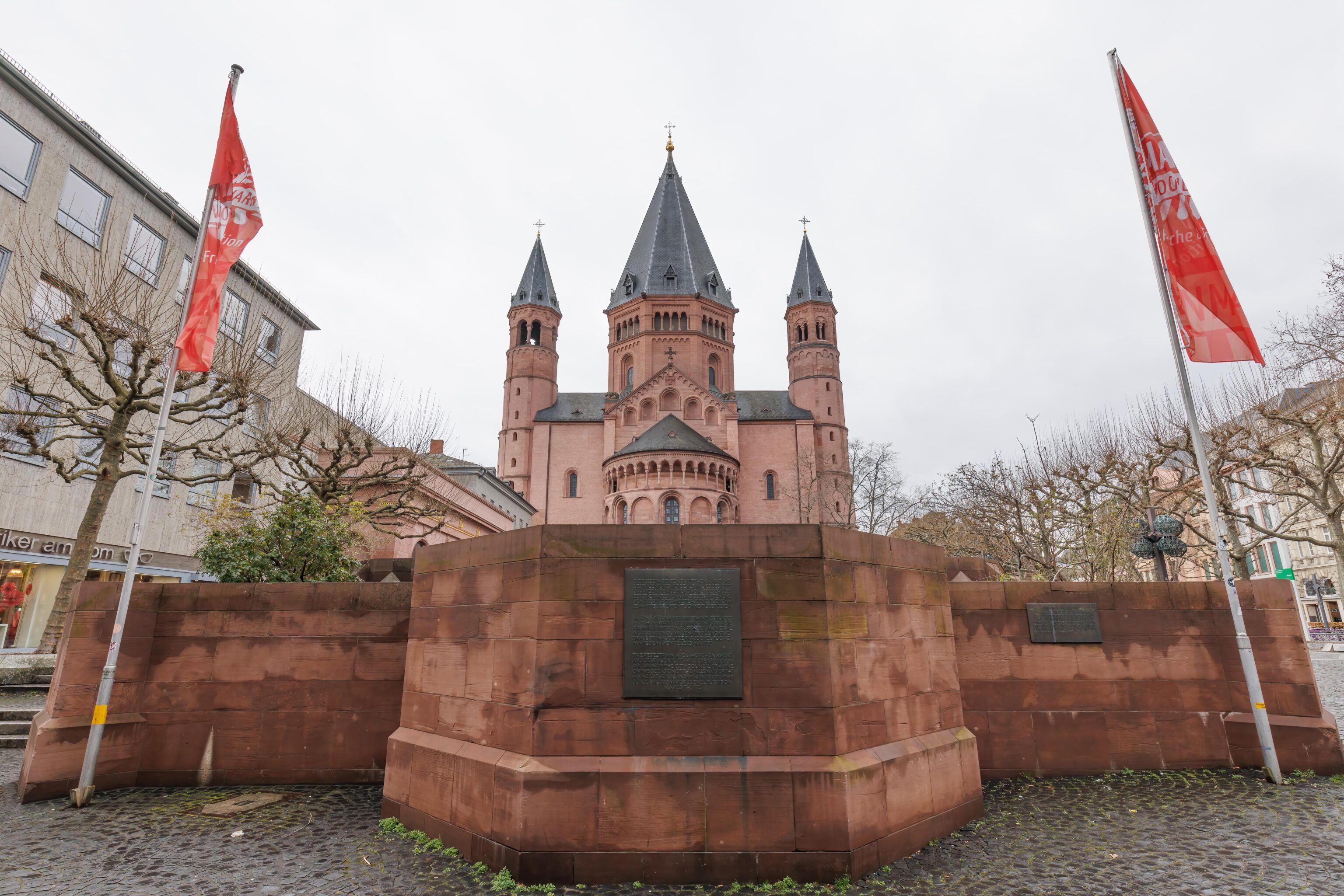
We started to walk towards the Rhine, checking out the views of the cathedral as we walked away.
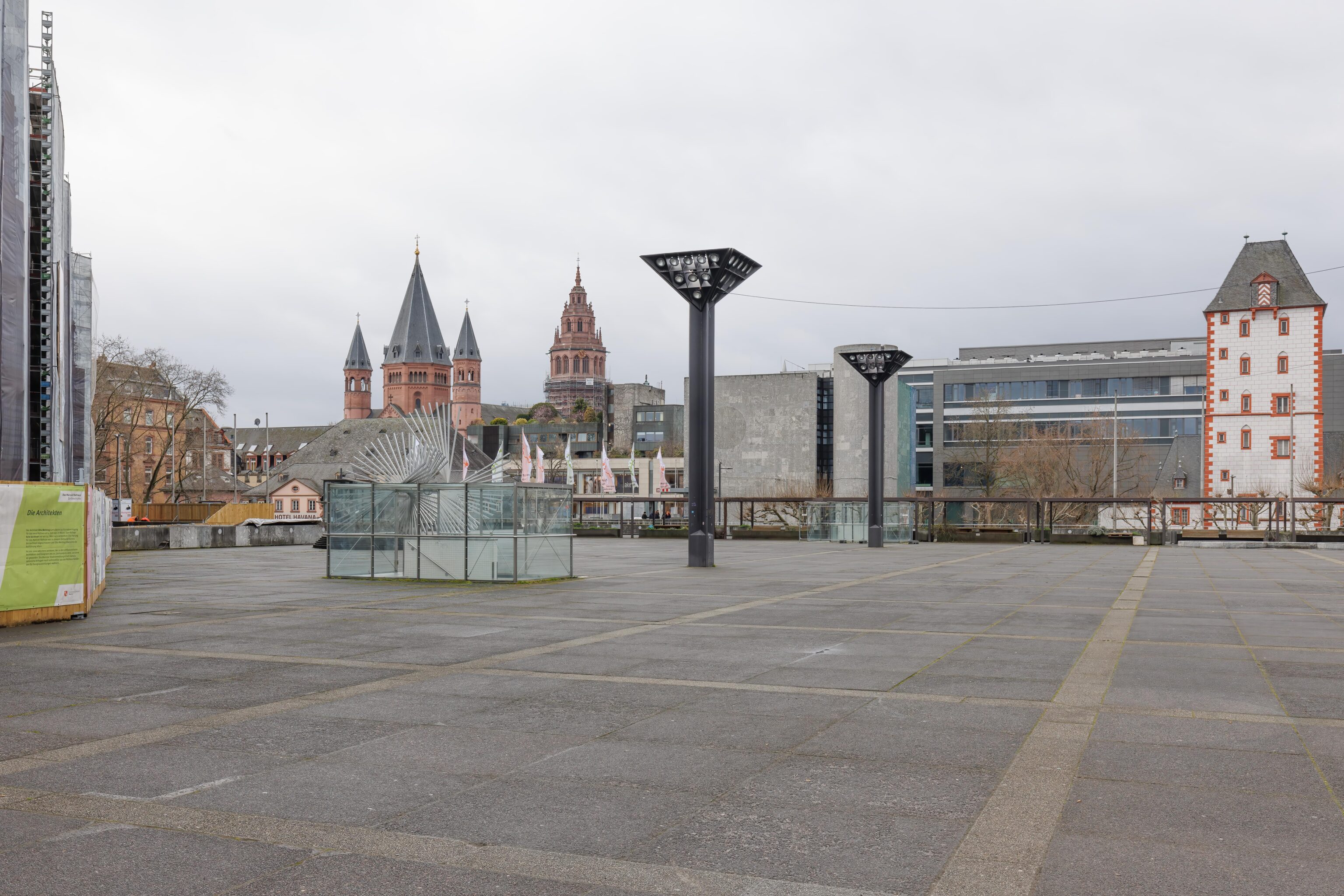
We passed over a road on a pedestrian overpass that was an extension of a plaza. We ended up next to the city hall which is currently being renovated. We could still see the cathedral in the distance.
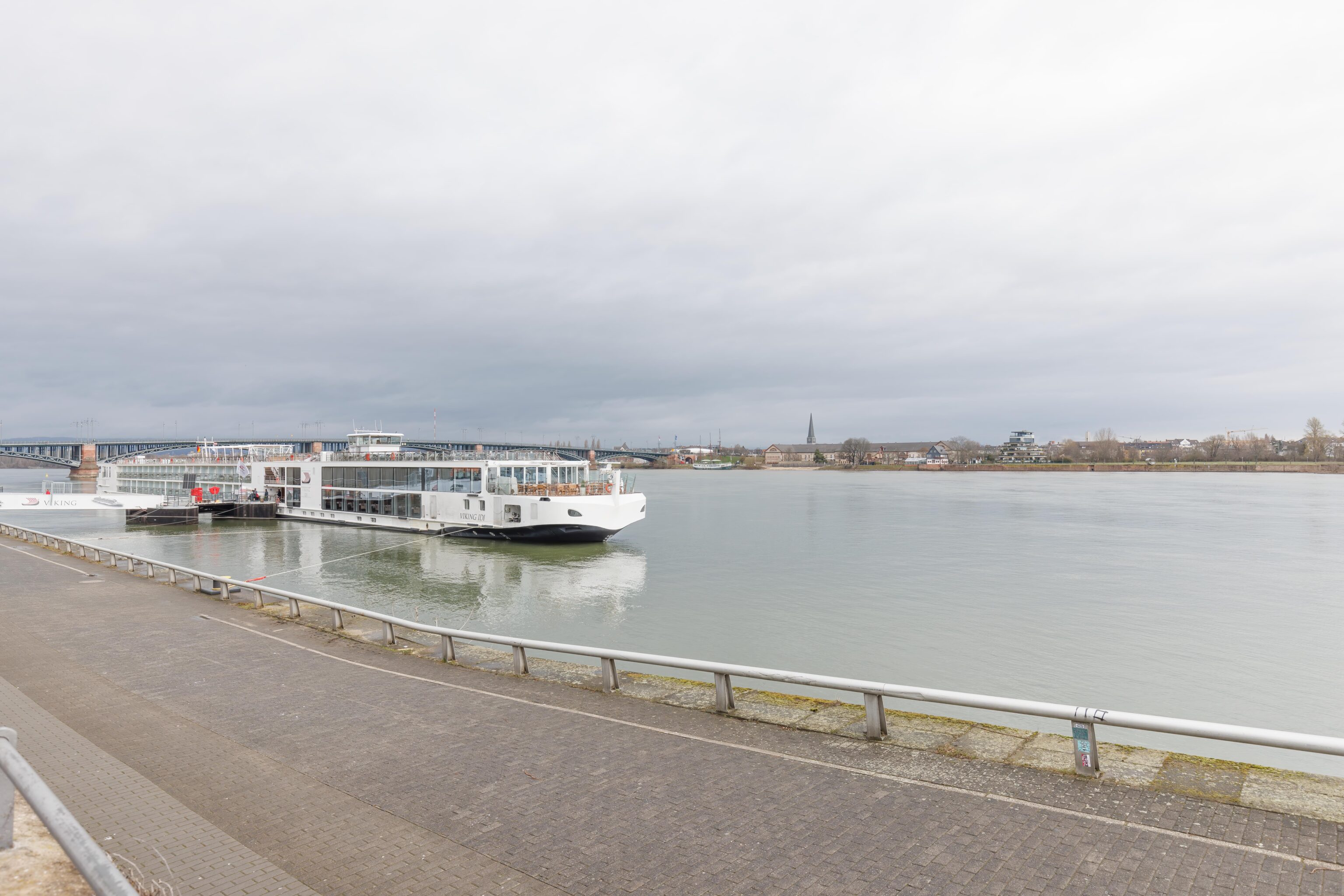
Just beyond was the Rhine. We saw a river cruise boat docked and being resupplied. Some of the tour guides that we saw at the cathedral were associated with Viking and this was one of their boats.
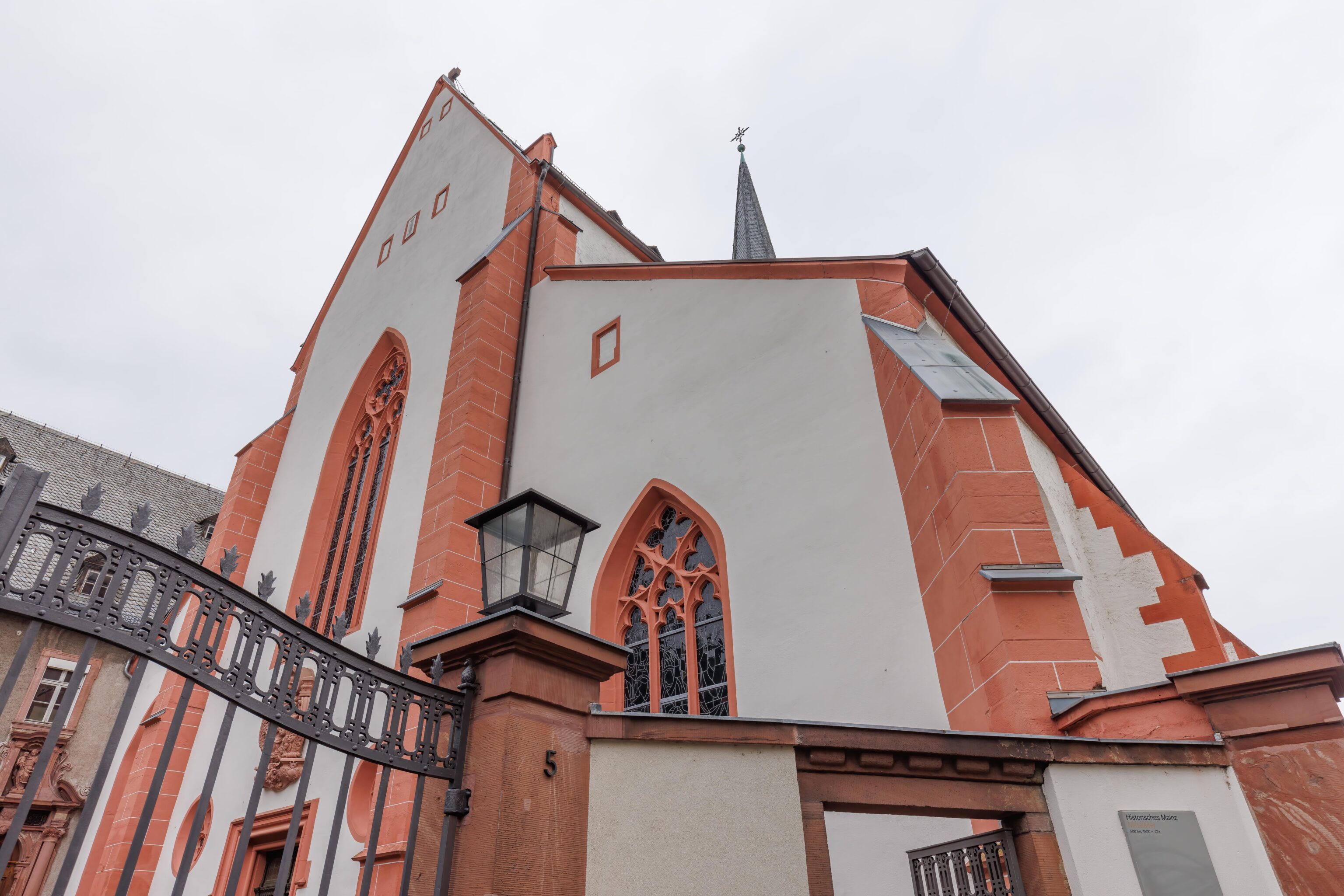
After walking past the boat, we headed back into the city. We passed by this church. It is the Karmeliterkirche.
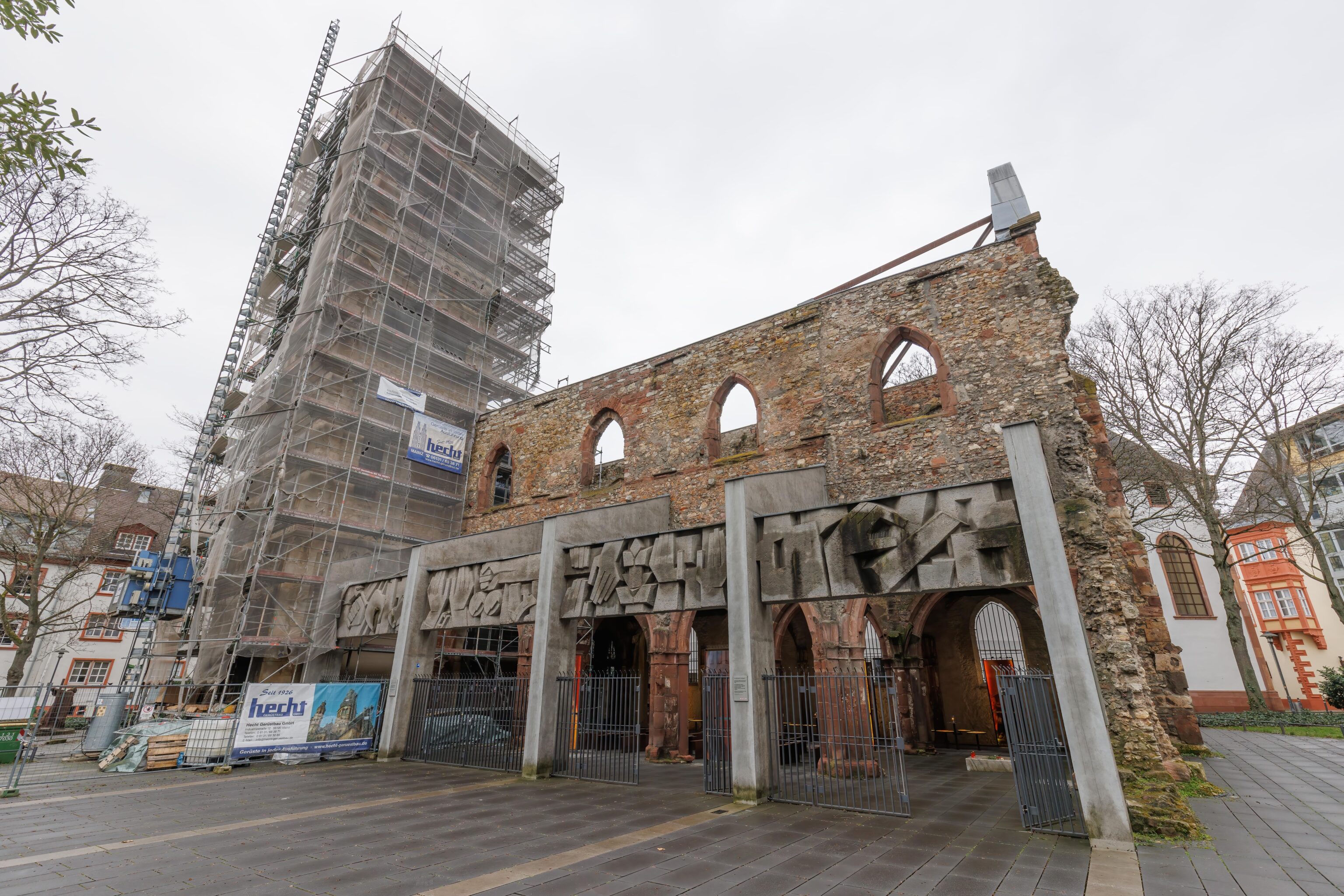
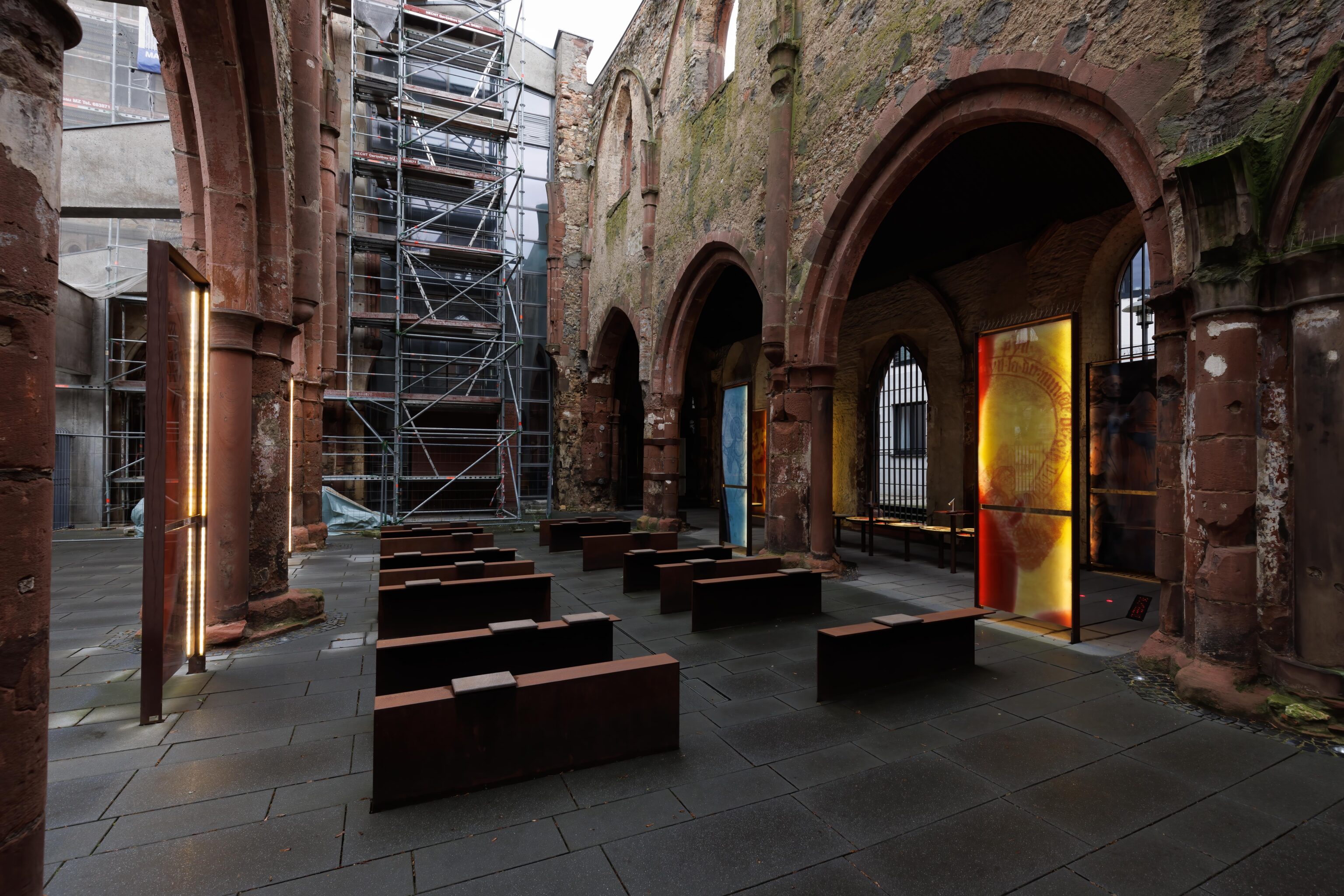
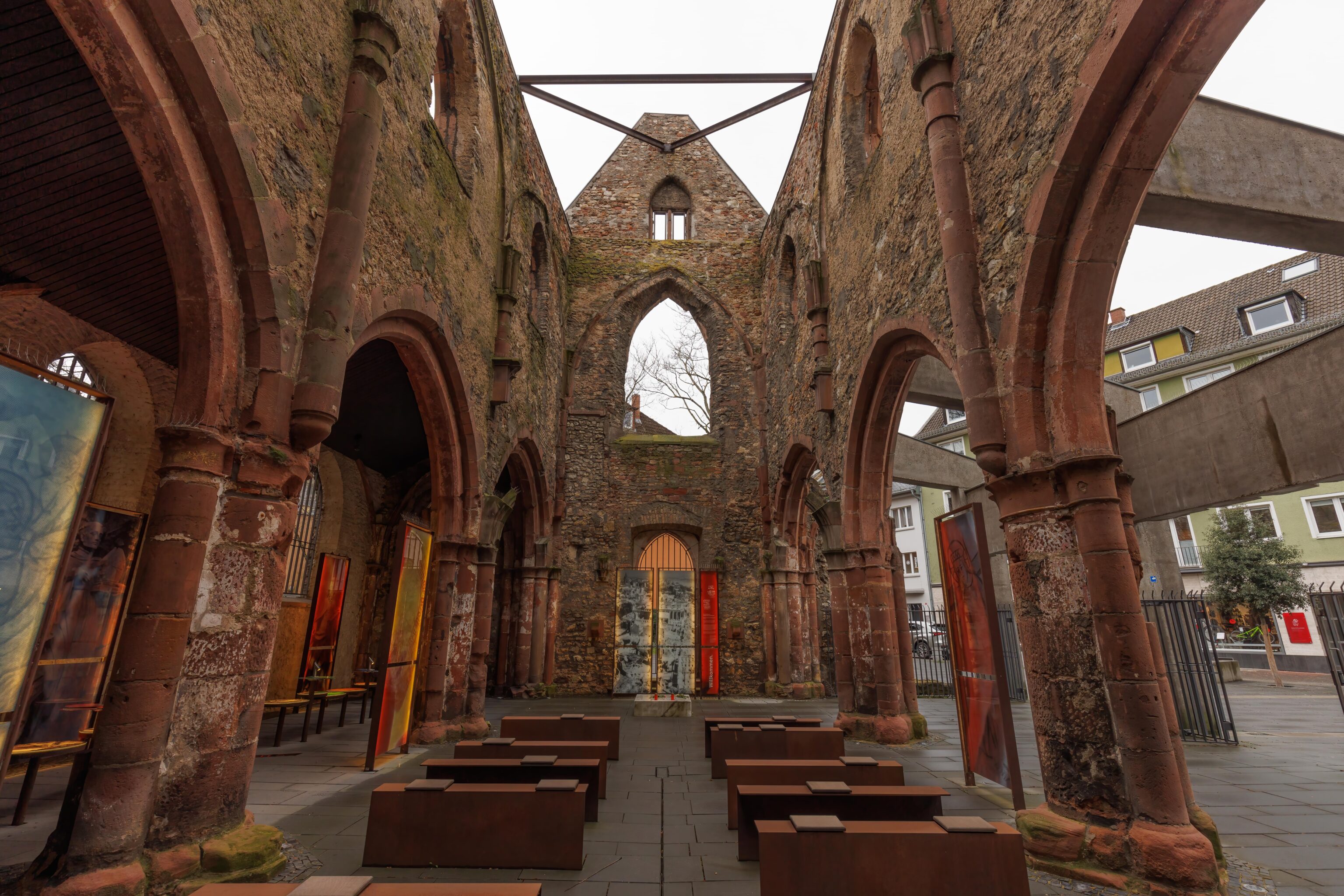
We continued on and quickly came to the remnants of the St. Christoph am Karmeliterplatz, a church that was mostly destroyed by bombing during World War II.
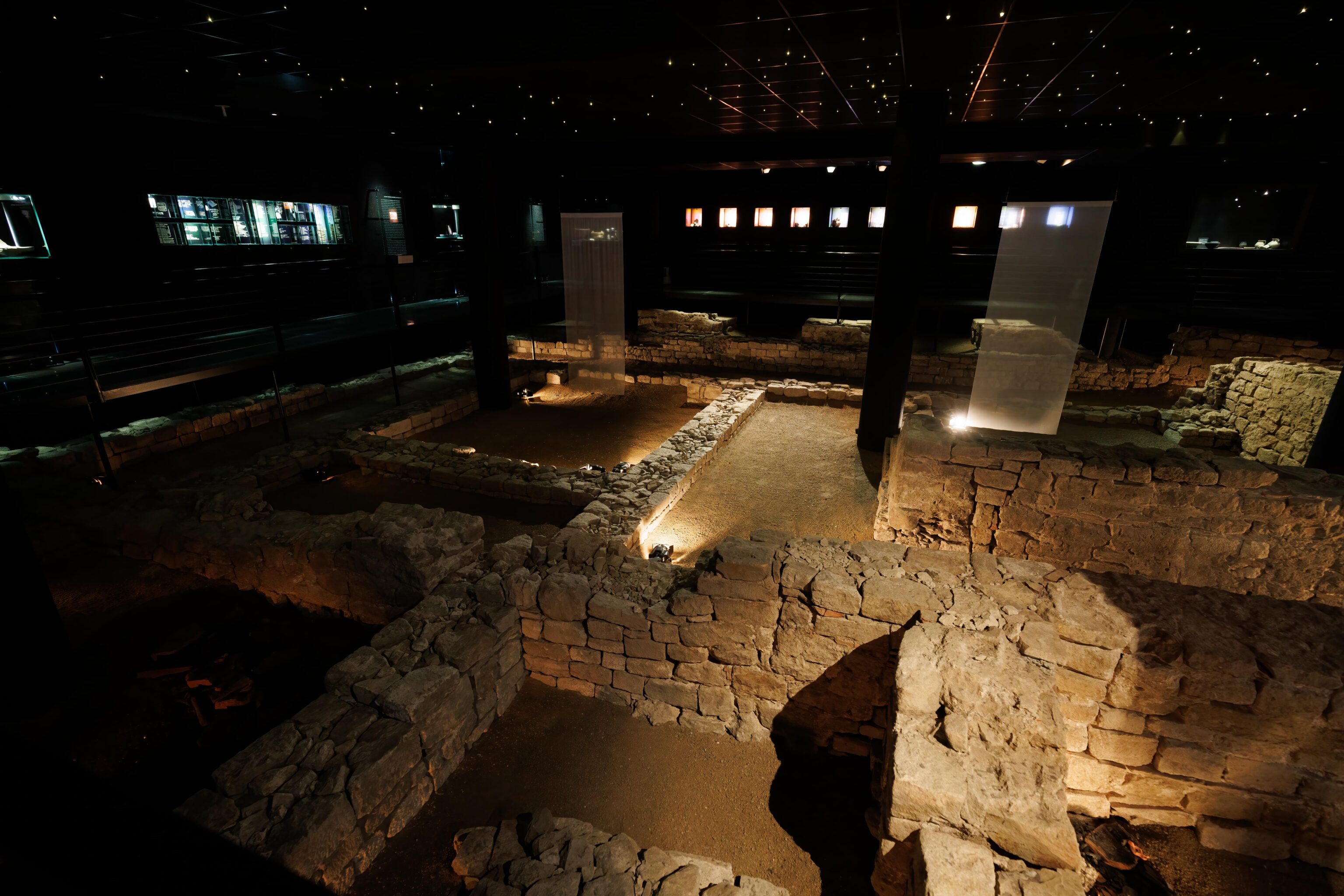
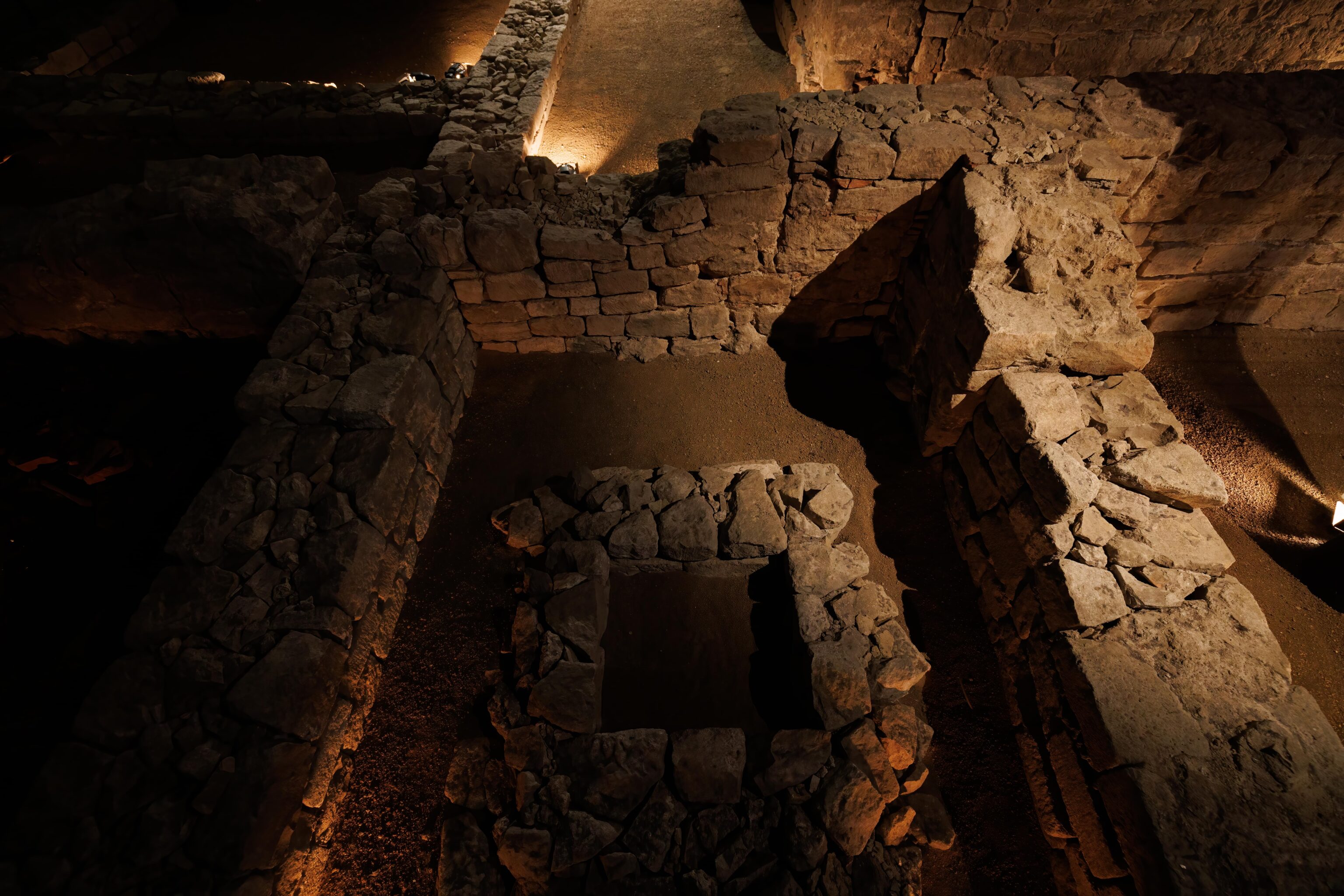
We continued on and soon reached the Heiligtum. These ruins are currently underneath a small shopping mall and are from the Roman times. It was previously a structure dedicated to the worship of Isis and Mater Magna, or Great Mother in English. Based on the description by one of the staff, they would have been considered something similar to a cult today as they would not have been considered to be mainstream. They also would have been similar to secret societies.
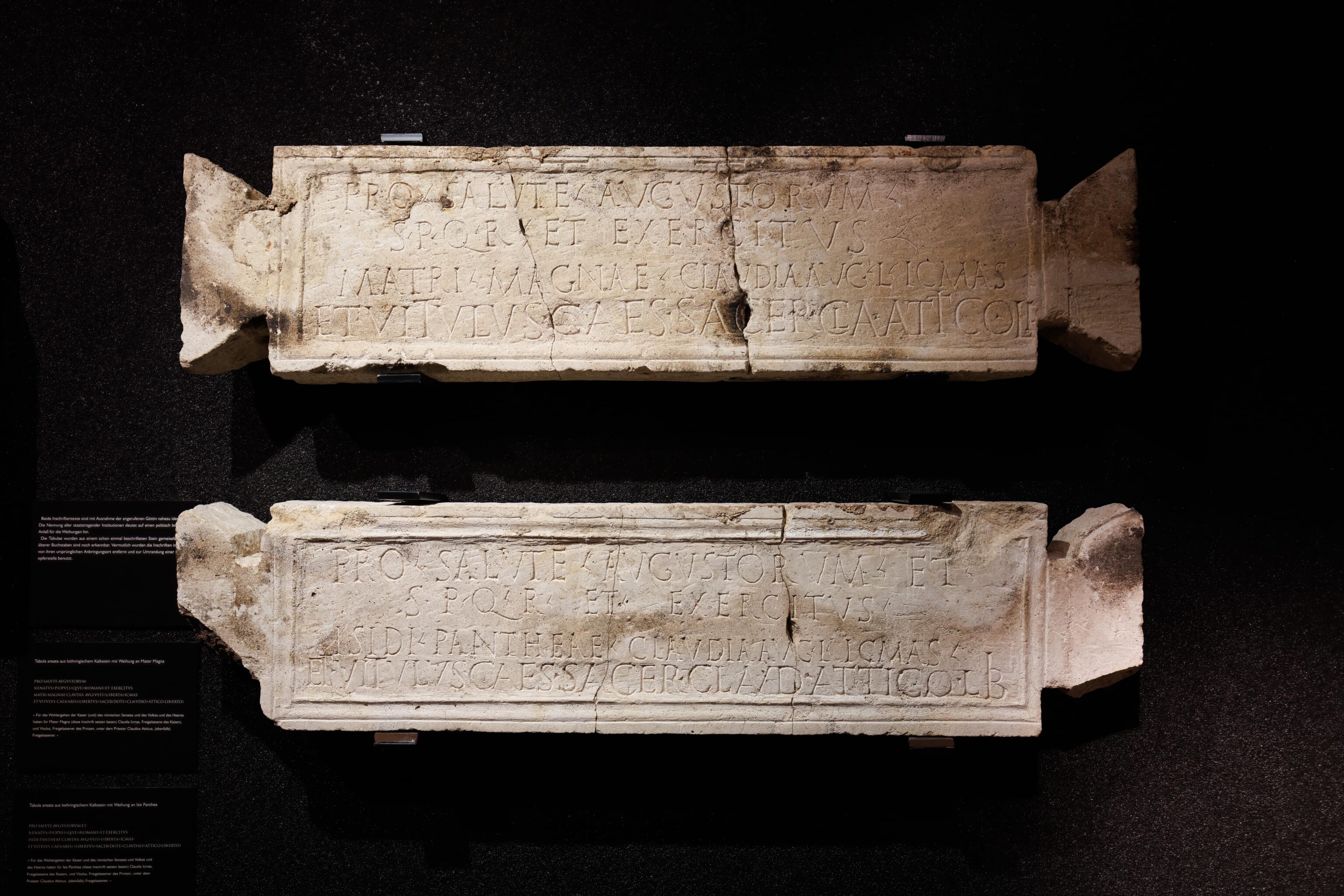
Luckily for the archeologists, text describing what the building was for was found!
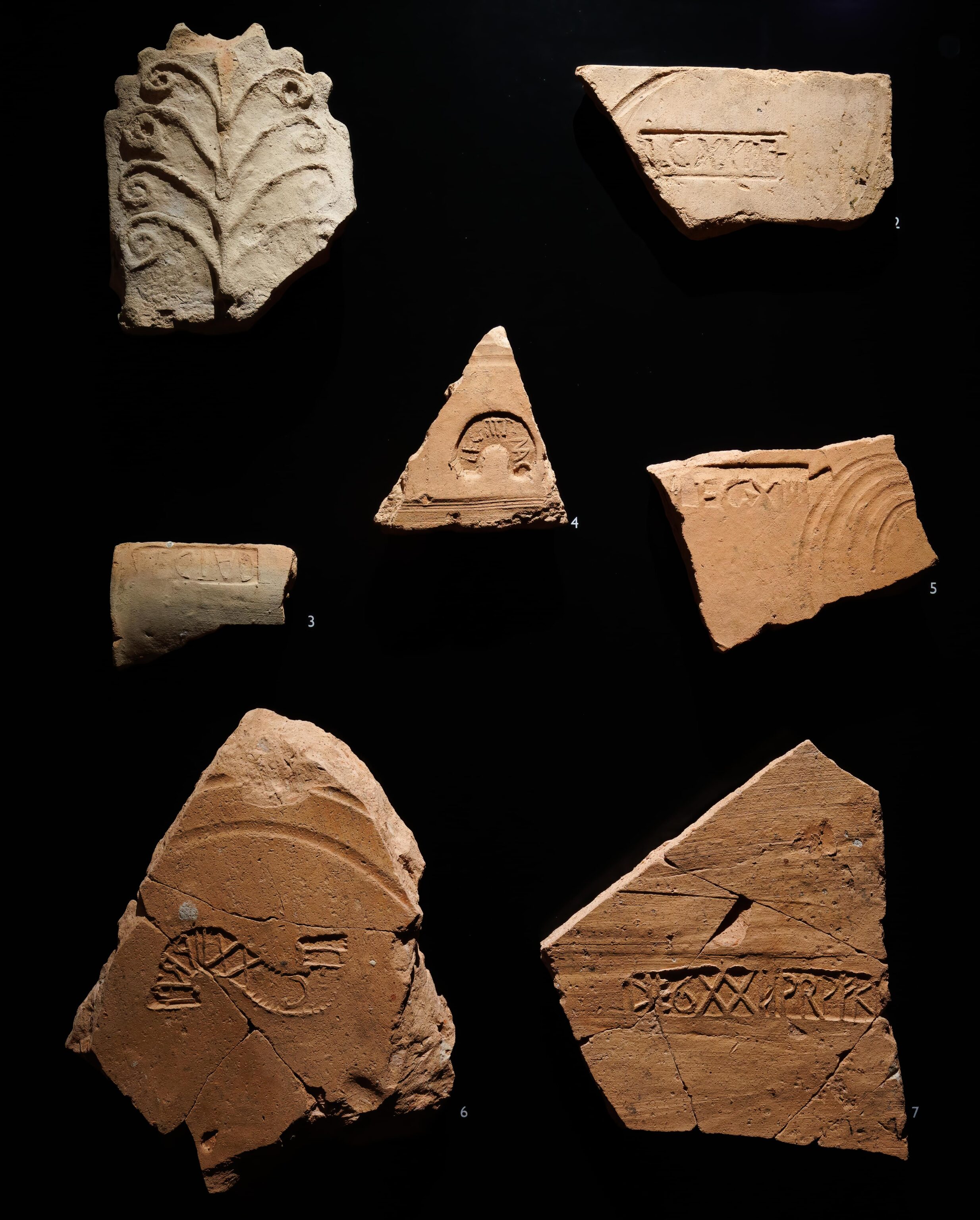
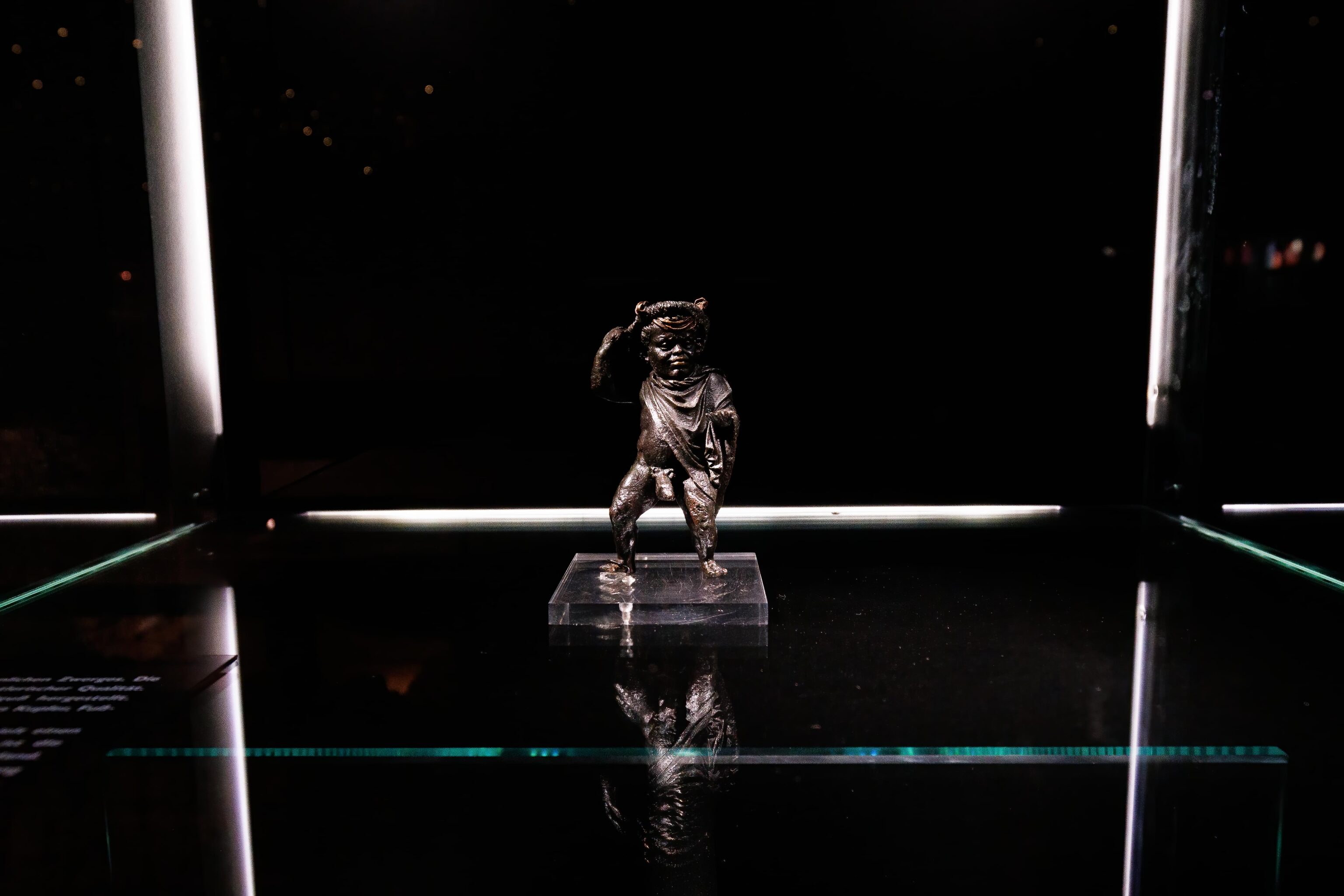
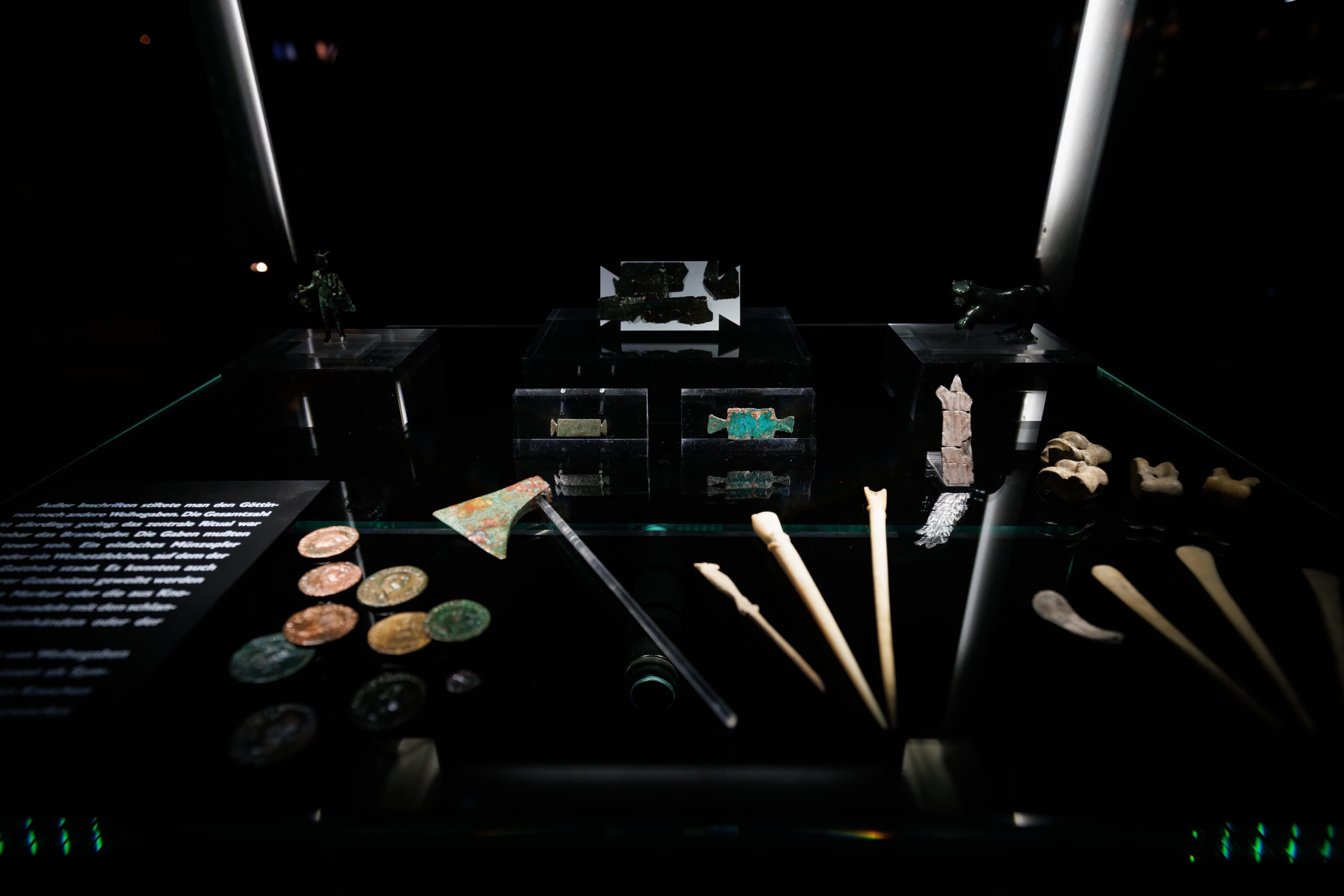
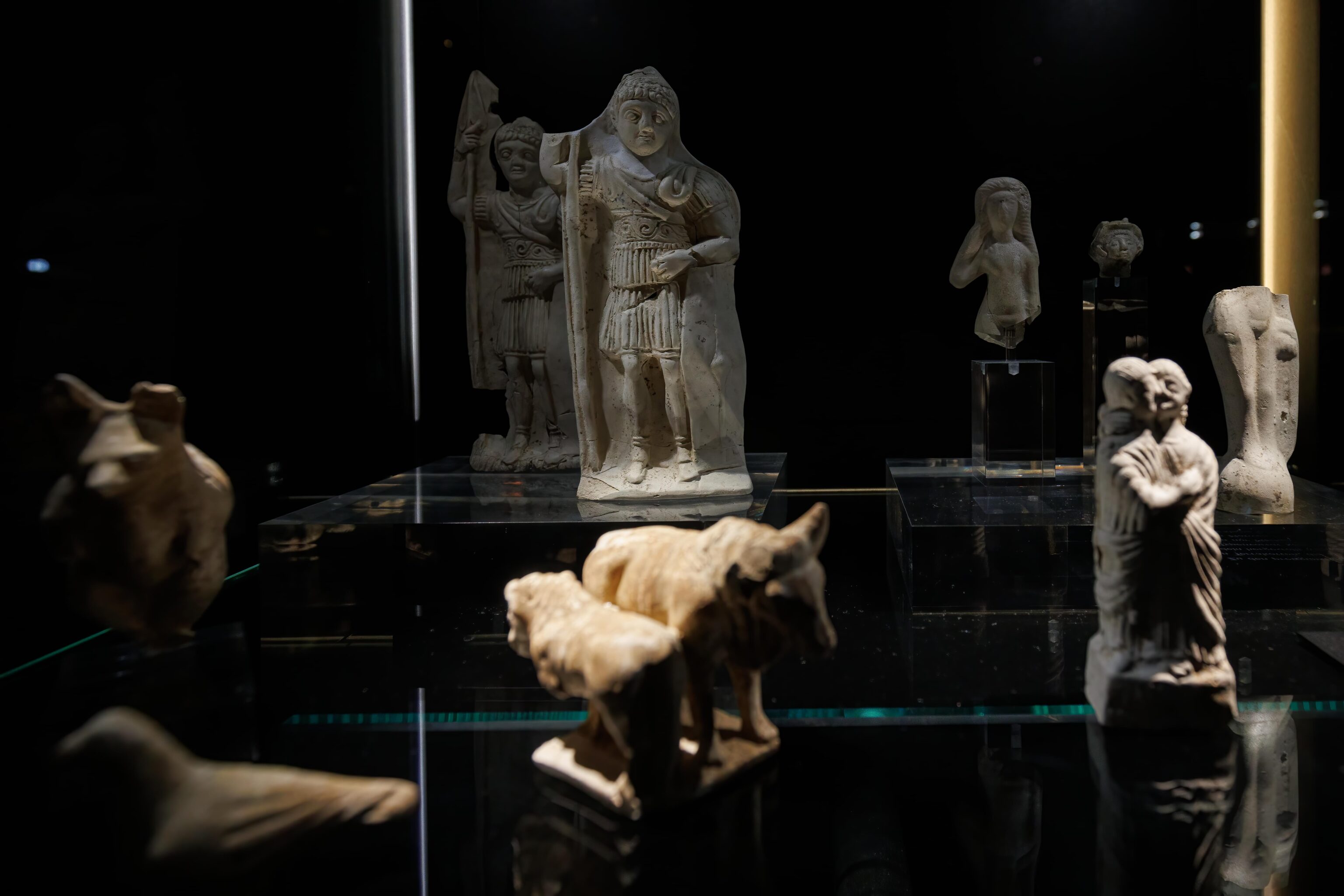
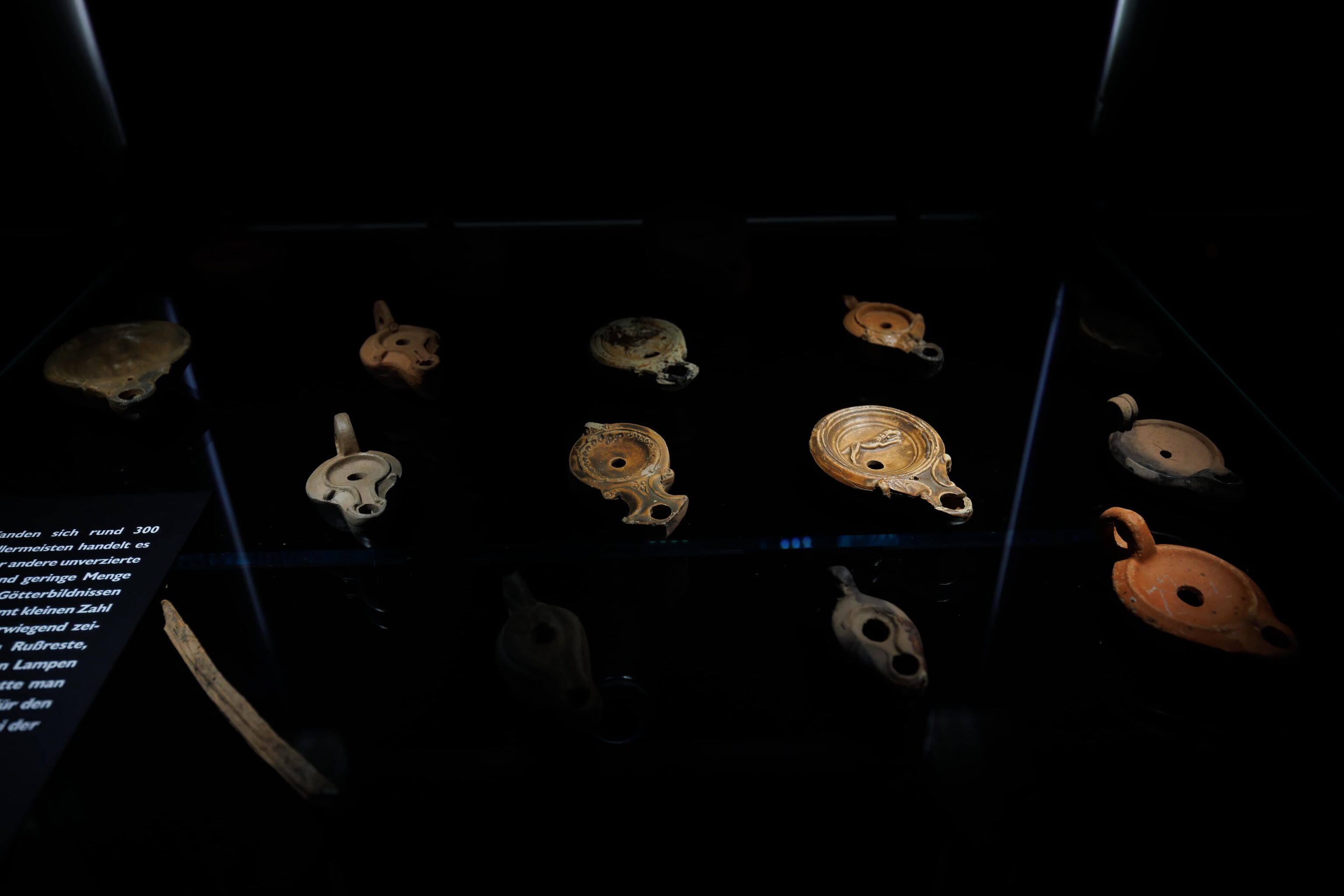
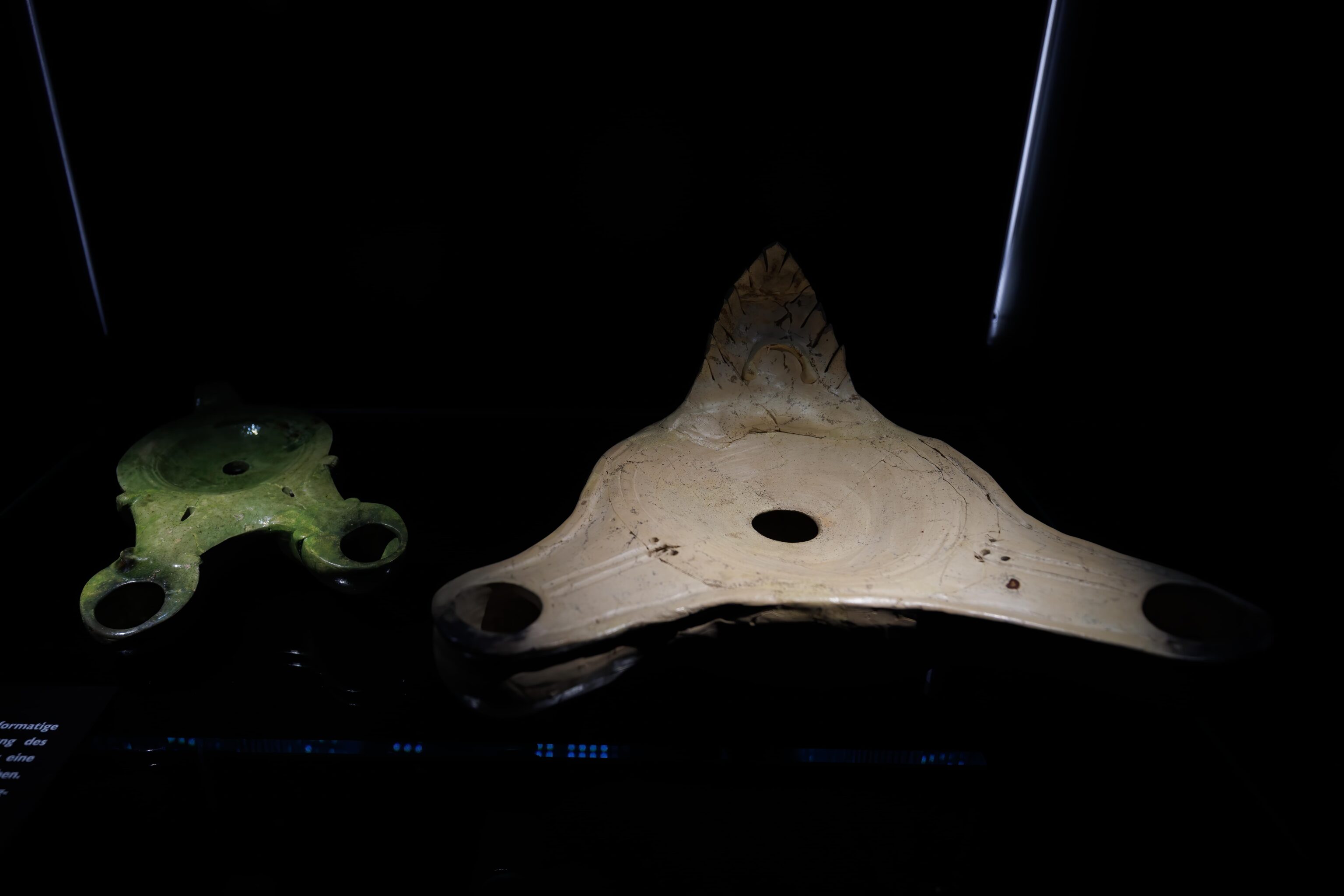
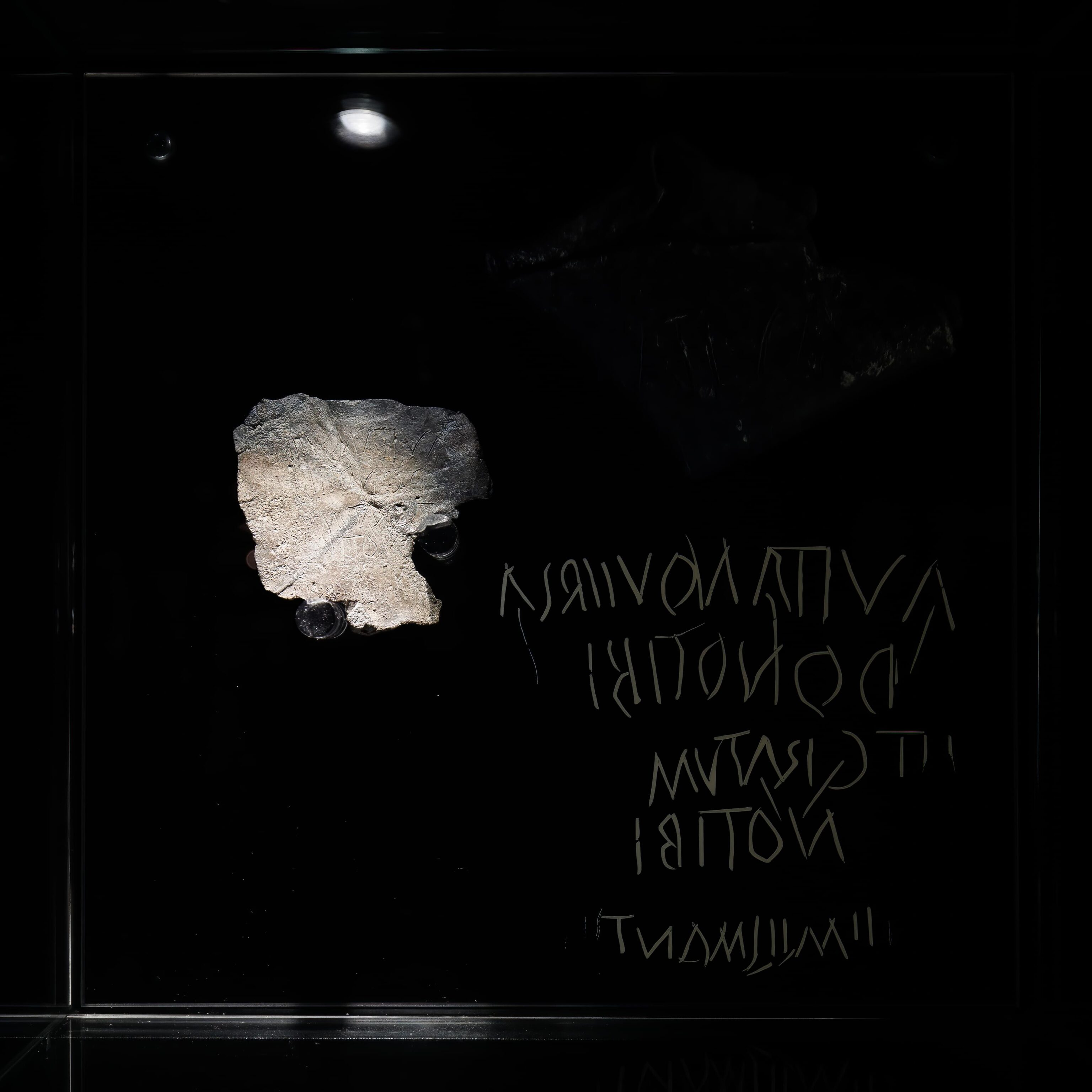
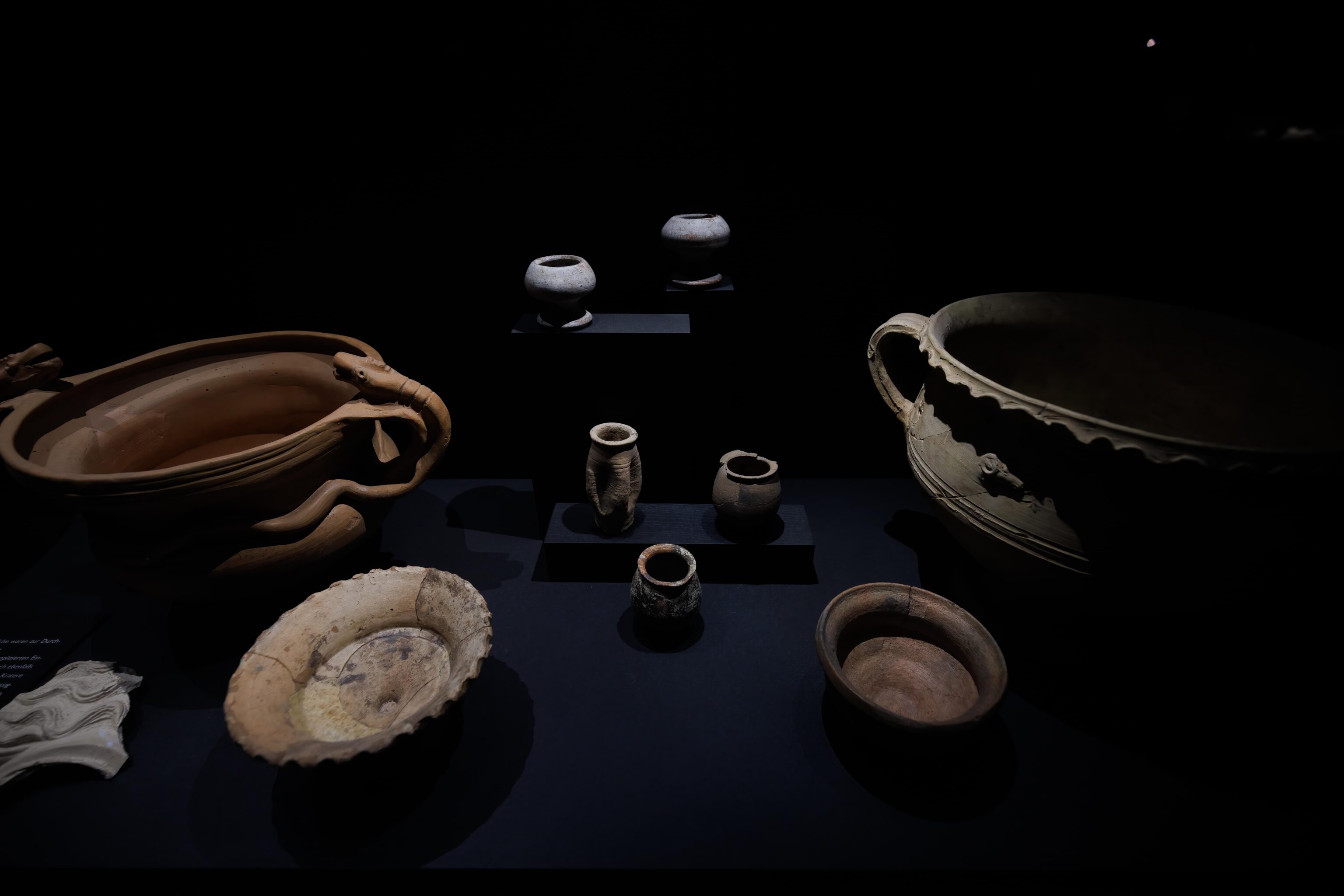
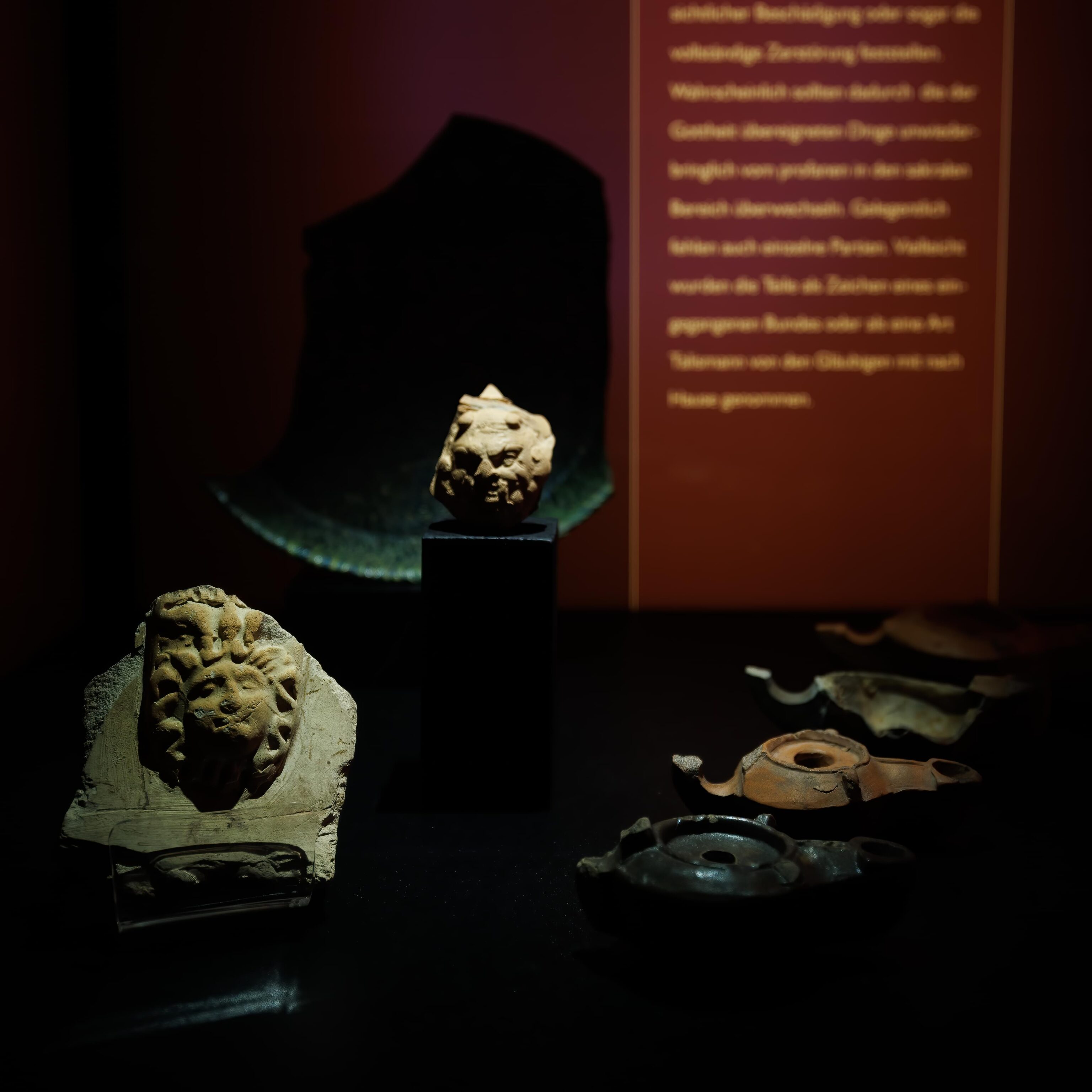
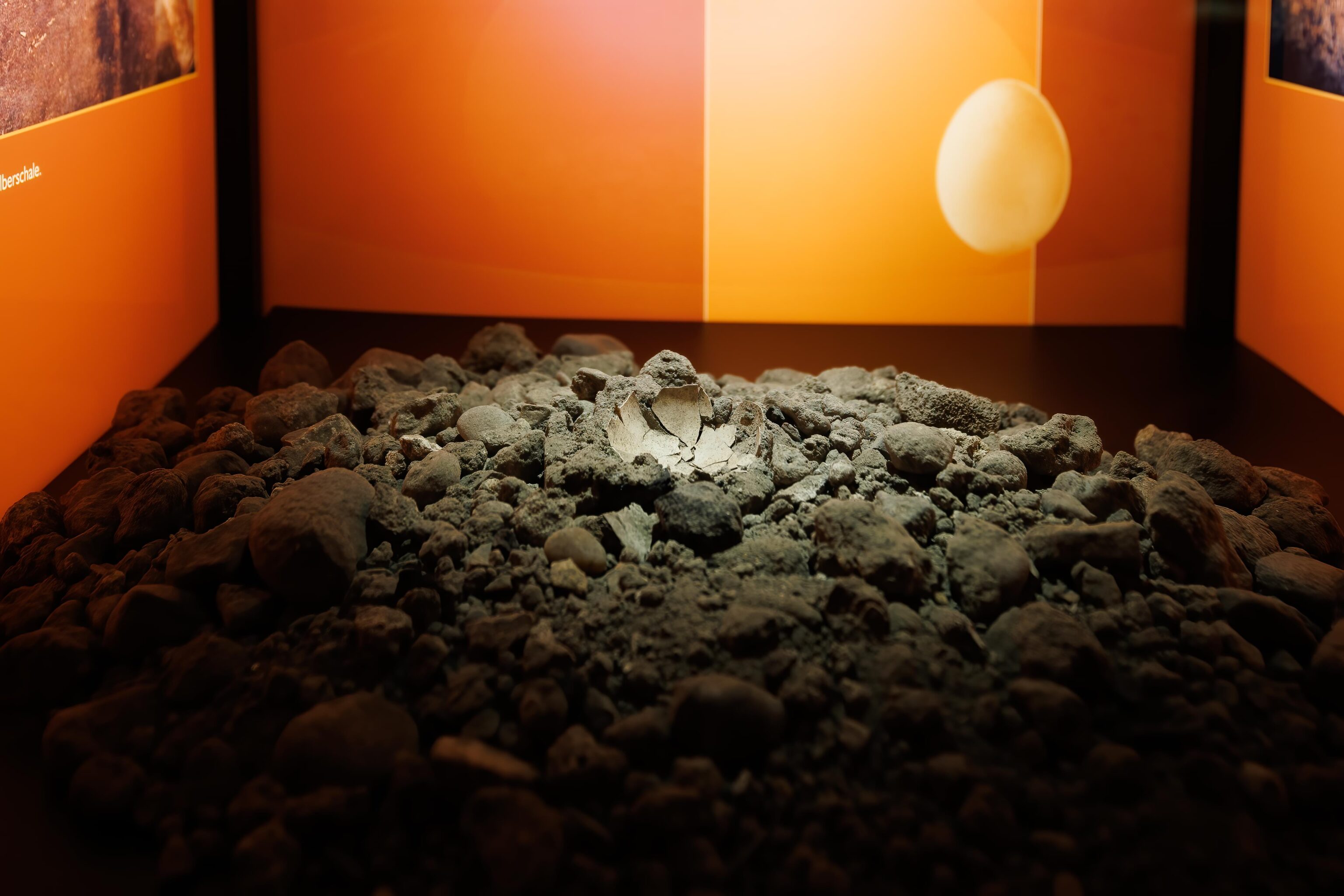
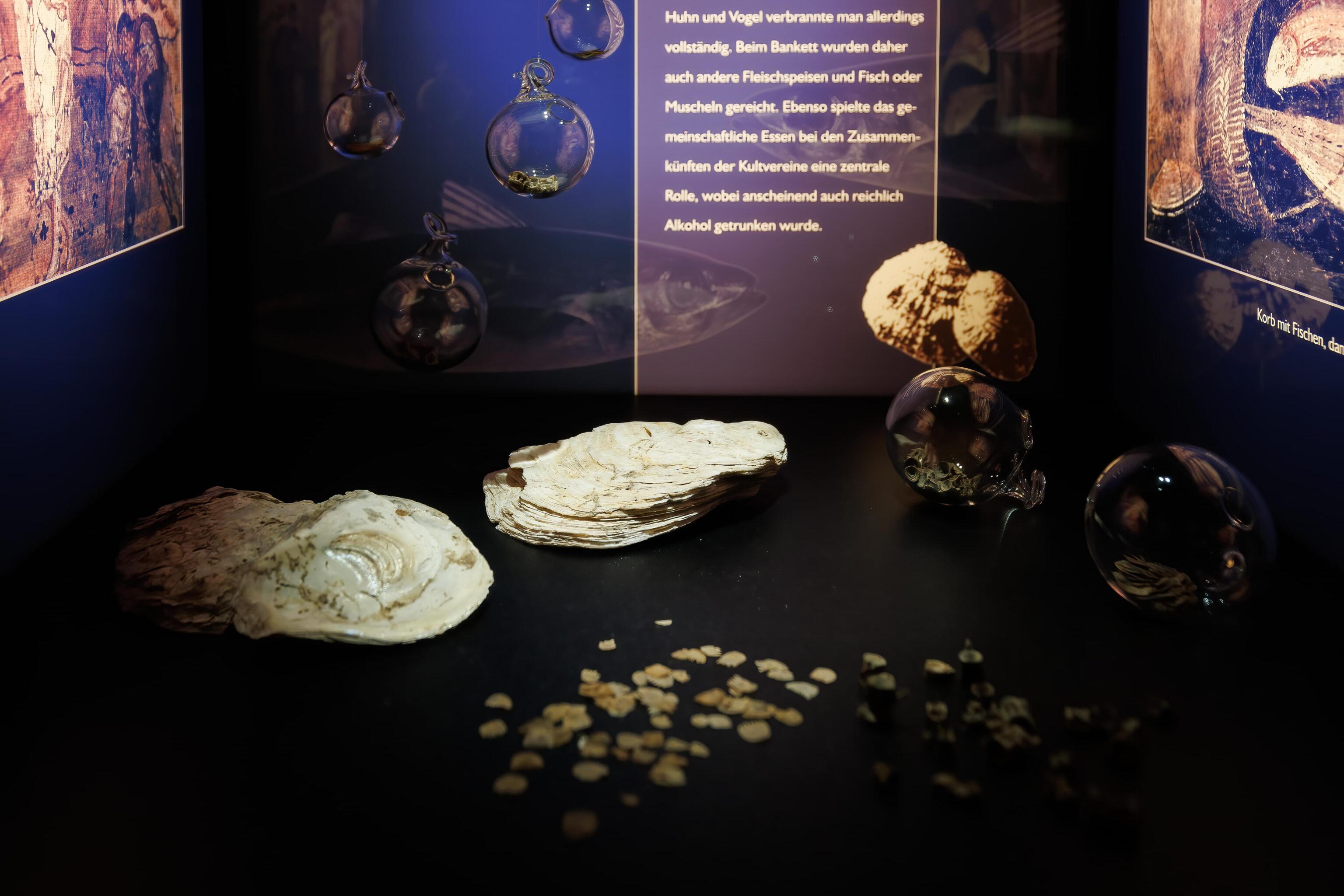
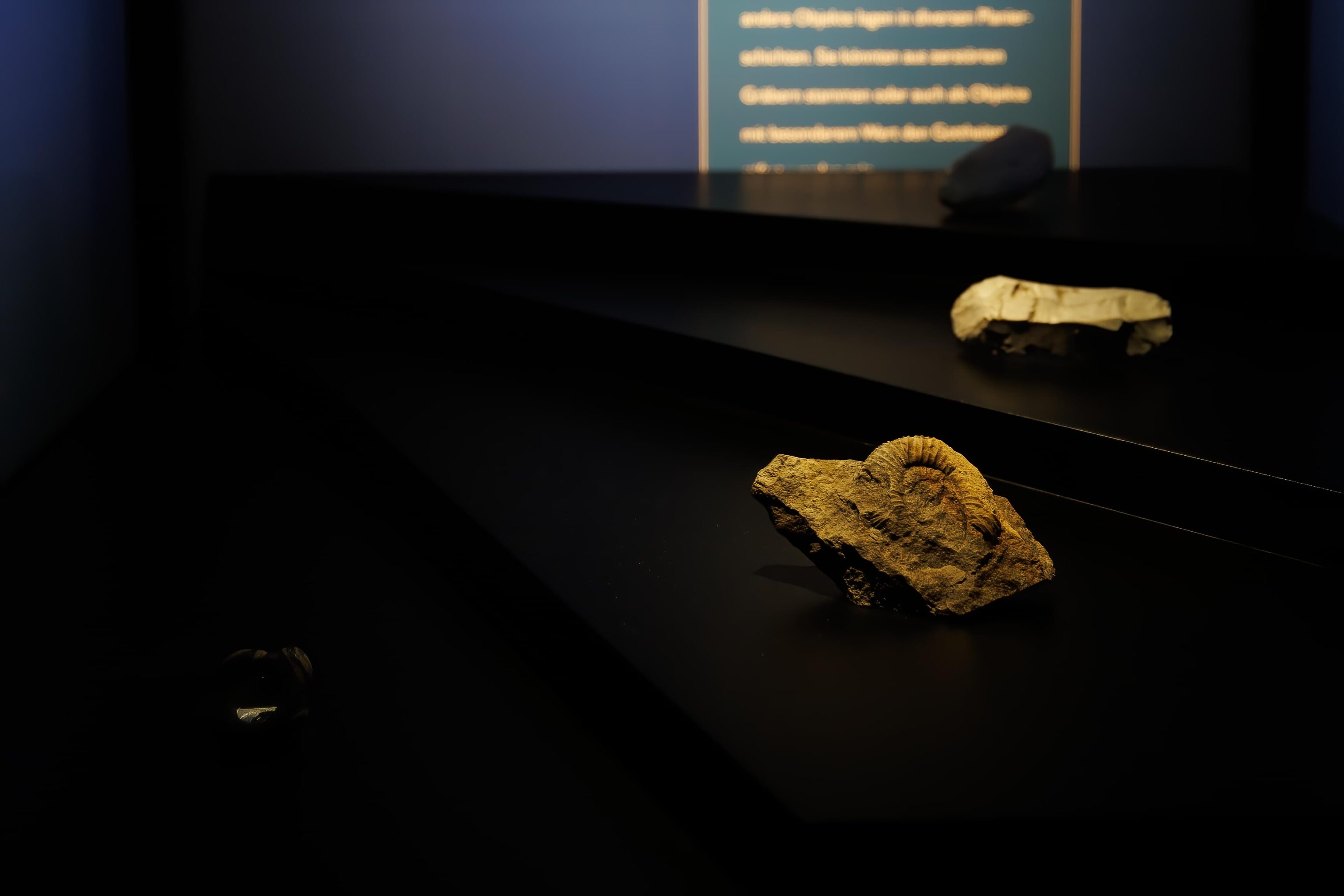
Various artifacts were discovered when the Heiligtum was uncovered. Some are on display in the museum.
Afterwards, we returned to Frankfurt by S-Bahn from the nearby Mainz Hauptbahnhof.
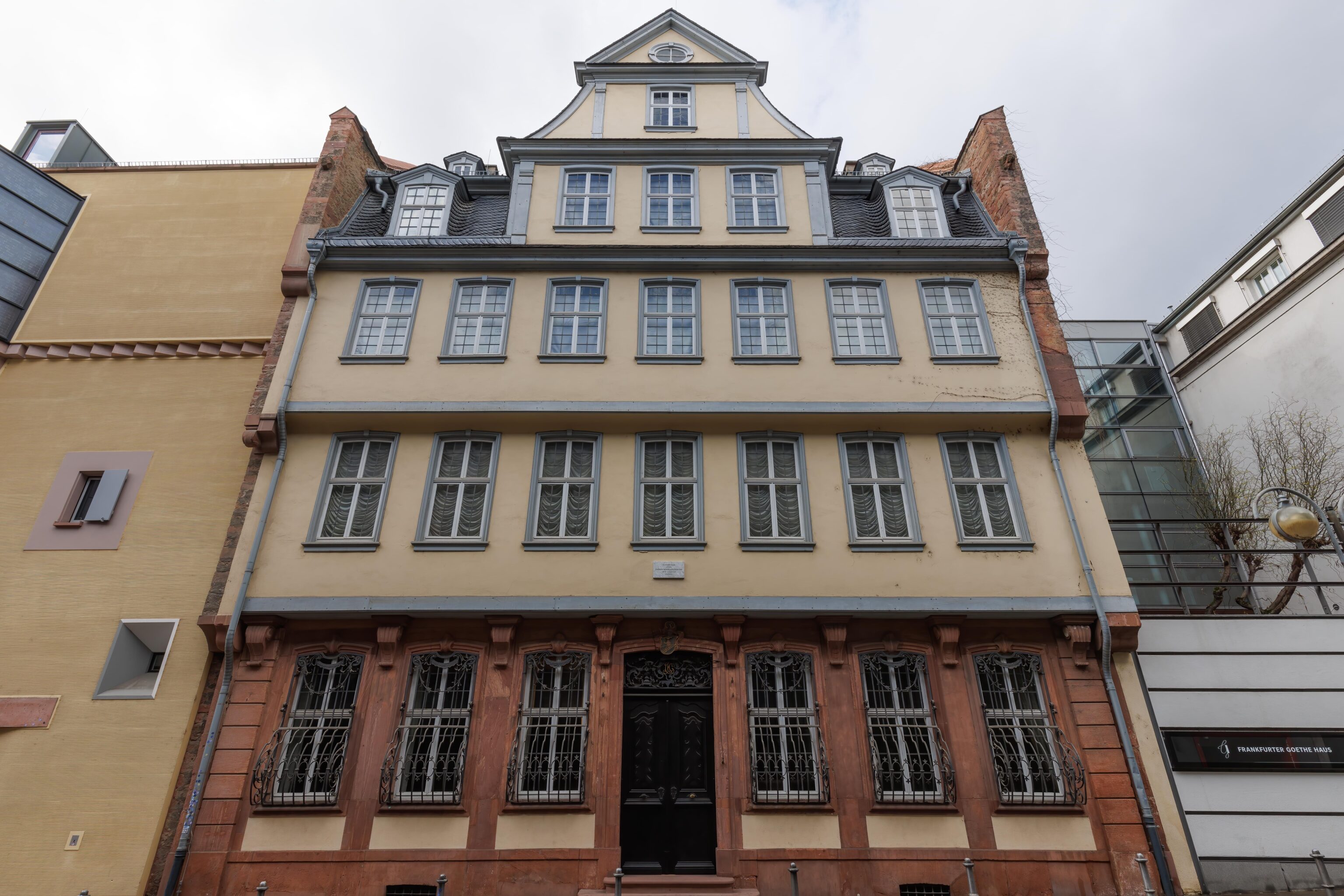
We didn’t do any sightseeing in Frankfurt other than passing by the Goethe House. This building is where Johann Wolfgang von Goethe was born and currently houses a museum. A museum that is closed on Mondays.


